Posts in Category: Wildlife Photography
Tips and advice for getting great wildlife photos
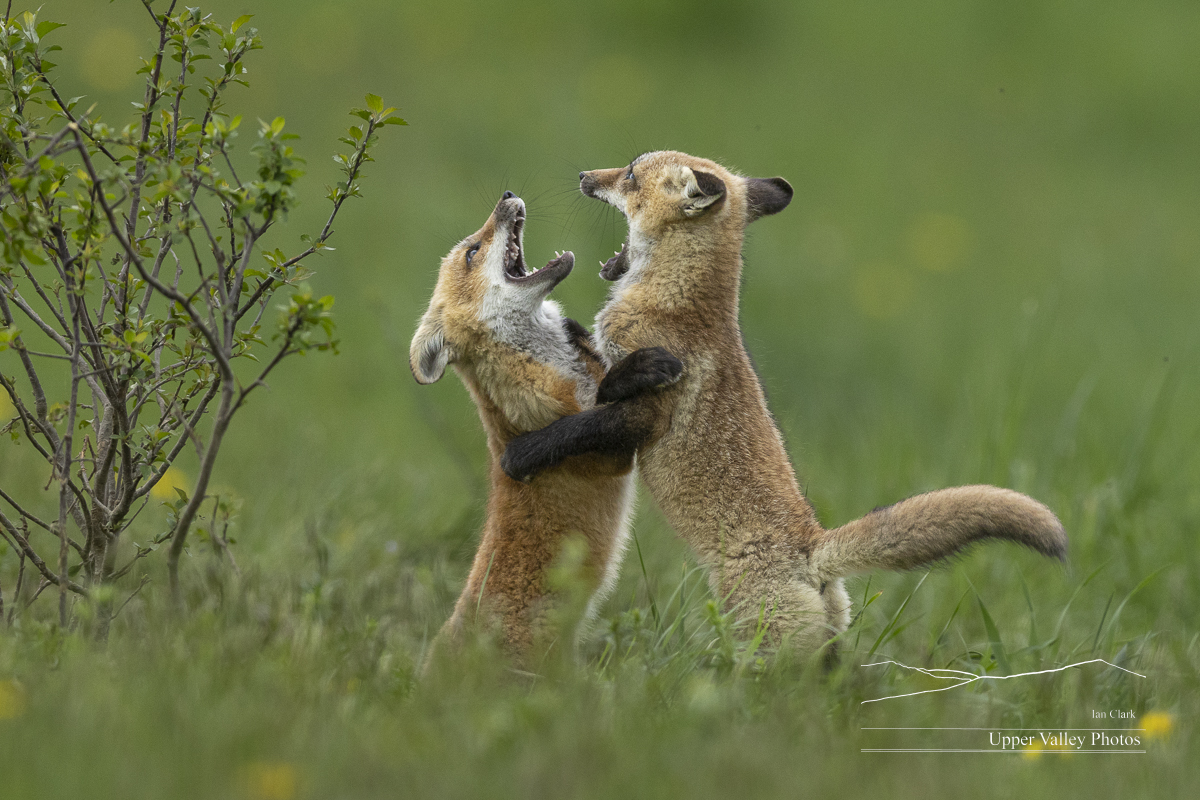
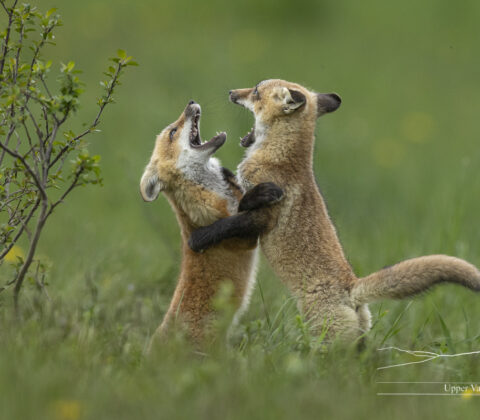
Red Fox Kits
Friends in West Newbury helped me locate two red fox dens. One has four kits, the other five. All of the foxes look healthy with beautiful coats. And fox kits are just darned cute.
I’ll be giving my slideshow, An Uncommon Look at the Common Loon, twice in the near future. The first will be at the Lyme, NH, School at 7:00 p.m. on Thursday, May 30th. The second presentation will be at the Tenney Memorial Library in Newbury, VT, at 2:00 p.m. on Sunday June 23.
I’ll have another post with updates on the loons and their neighbors shortly. The Westons are sitting on their nest, we know they have at least one egg. The Middletons are building their nest, should lay their eggs any day now. The road to the Eastons has been repaired, I’ll get up to visit them as soon as I can.
Finding a fox den is a treat. But it means long hours in a blind waiting for the action. When I found the first den, I set up a blind and several game cameras to let me know what was up. The first morning it wasn’t raining, I snuck into the blind before dawn. And waited. Eventually, the kits appeared.









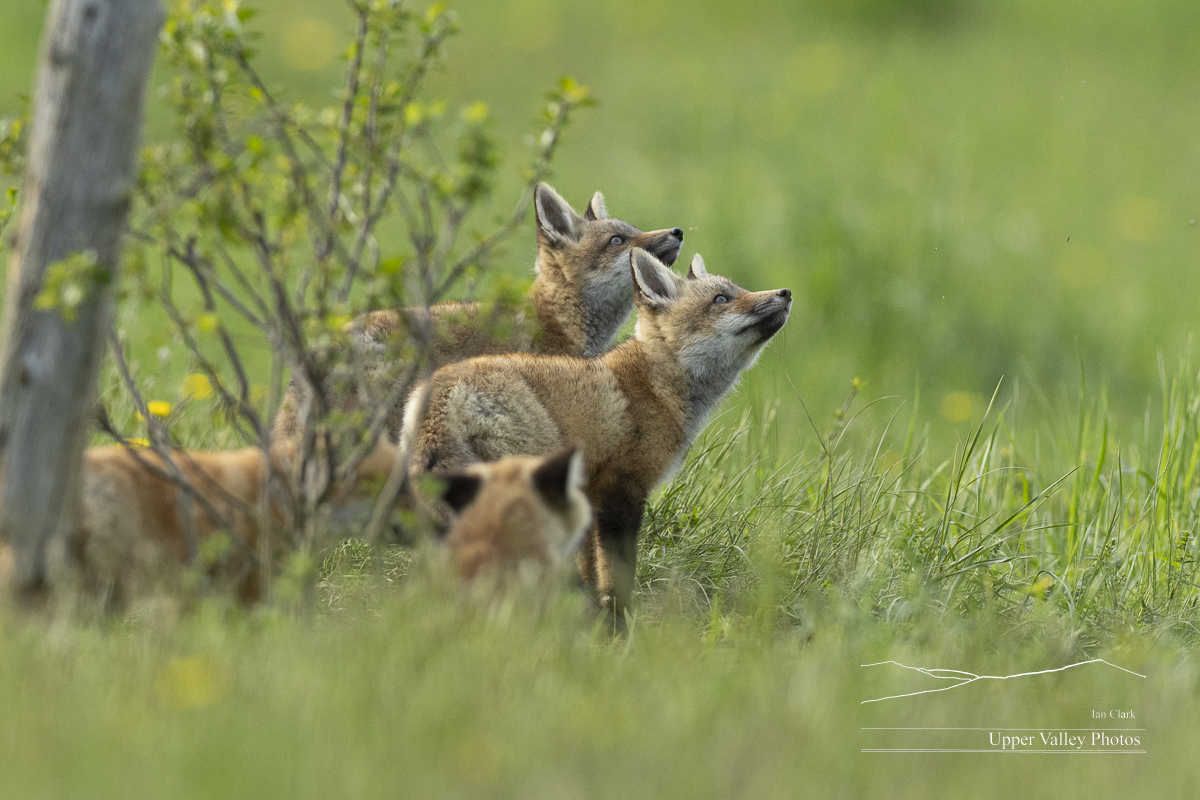
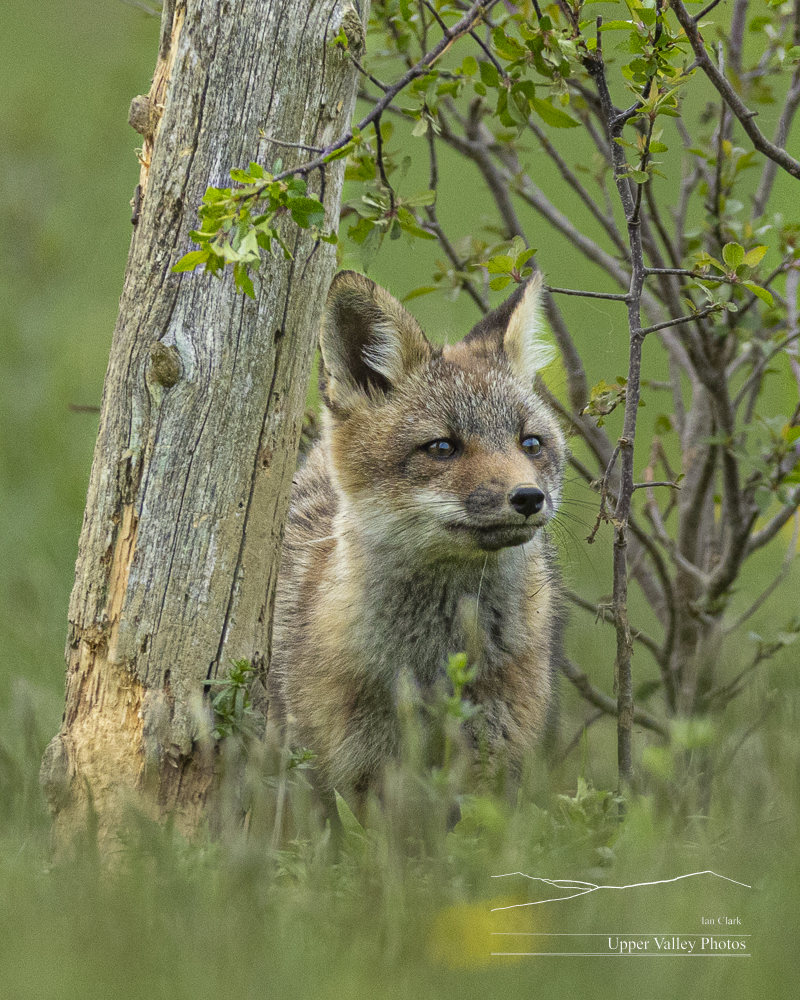
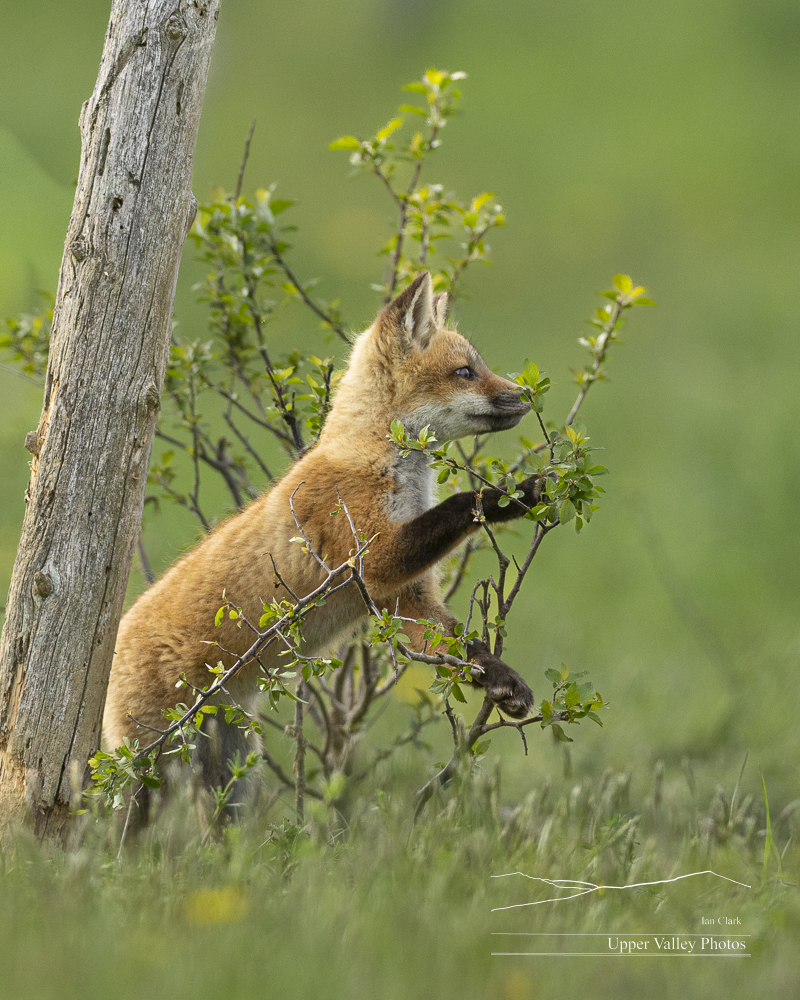
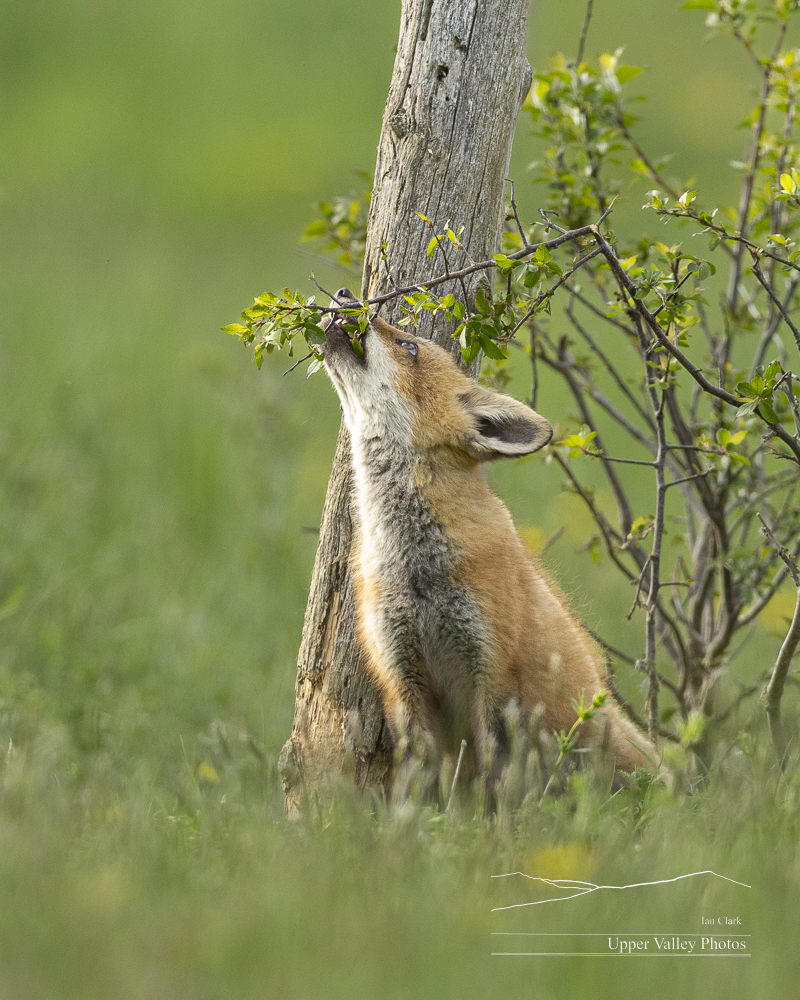
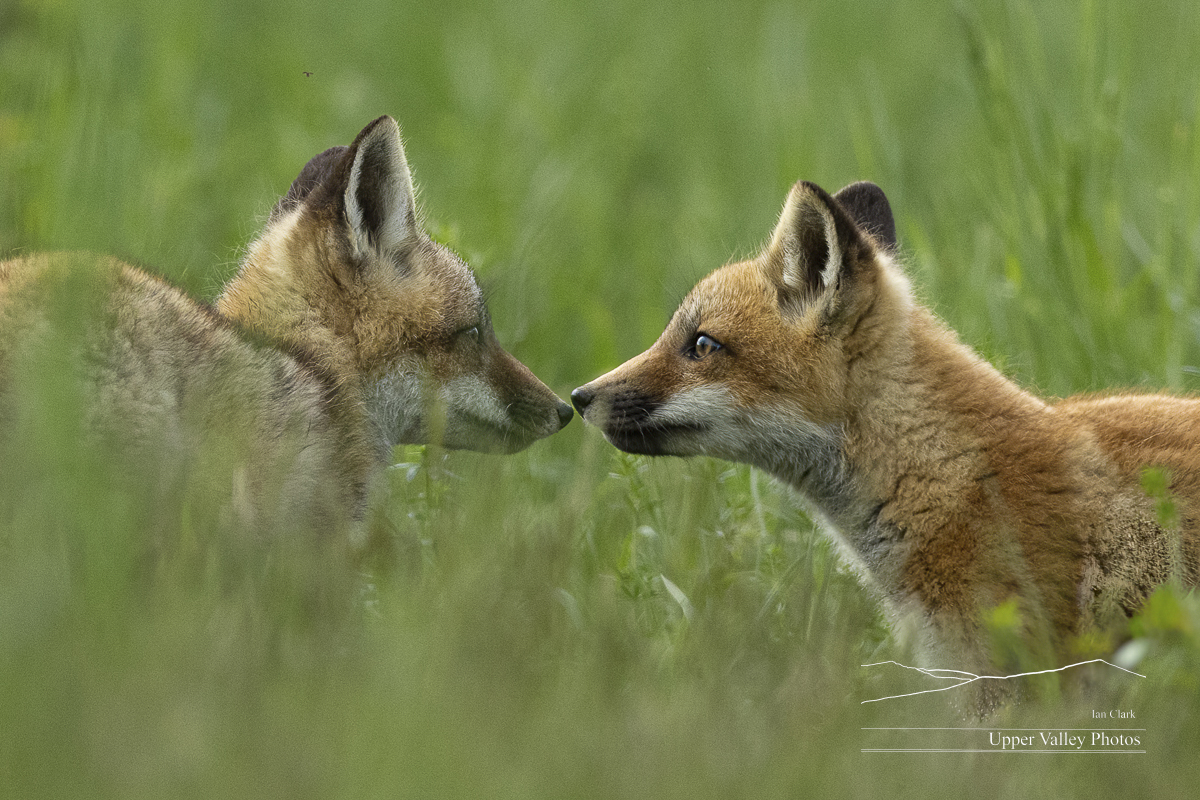



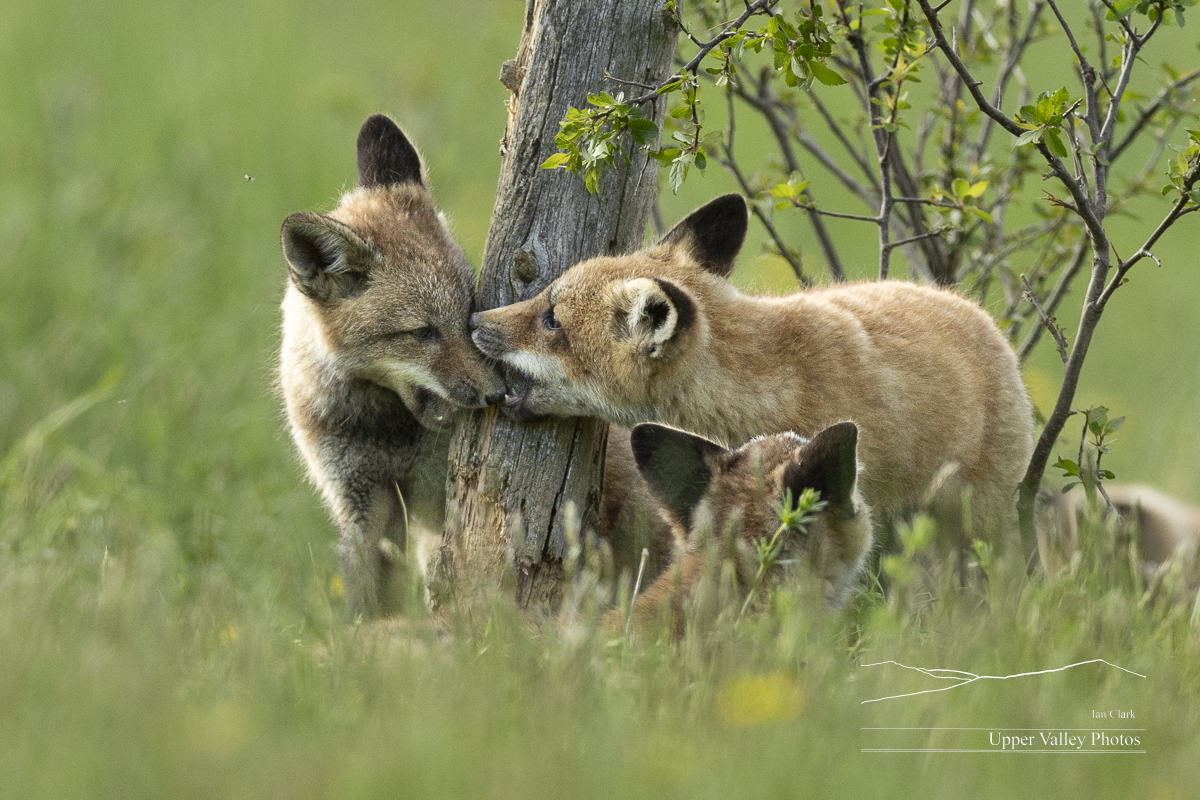
Check back soon for an update on the loons. Or you can sign up below to get an email when I add a new post. If you know someone who loves wildlife, please share the post with them.
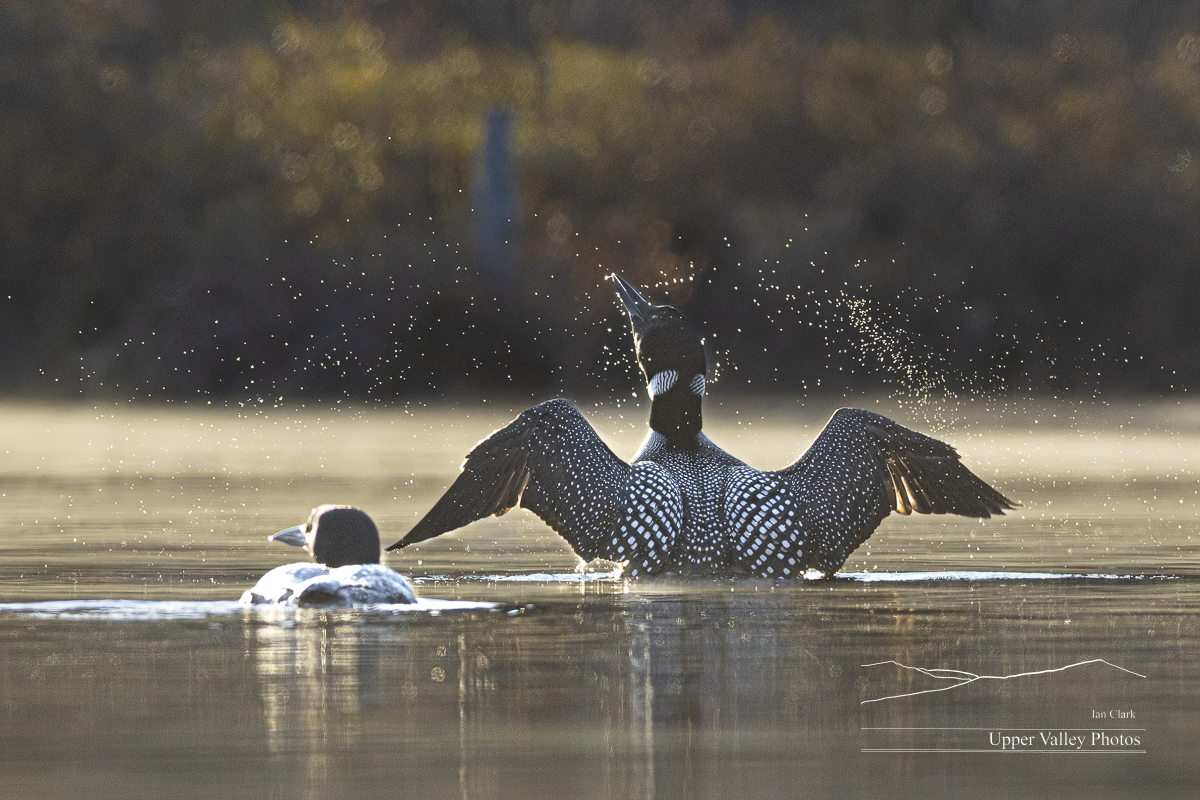

Catching Up with the Usual Suspects
I’ve been able to get out a few times to visit two of the loons’ ponds. The loons are out and about, along with the full cast of the usual suspects.
The Vermont Institute of Natural Science in Quechee is hosting my exhibit of loon prints through the end of July. There will be a reception where I show my slideshow, An Uncommon Look at the Common Loon, on Saturday, May 11 at 3 p.m. There are more details at https://vinsweb.org/event/artist-exhibition-ian-clark/ and https://www.facebook.com/events/454025283855444.
And, I’ll be presenting An Uncommon Loon again at the Lakes Region Art Association Gallery in Laconia, NH at 6 p.m. on May 20. The talk hasn’t been posted on their site yet, but details about the Association are at https://lraanh.org/.
Do you have critters around? While I do a lot of scouting on my own, tips for finding critters are always appreciated. I’m always looking for mammals, if you’ve got bobcats, coyotes, fishers or bears that show up more than once, I’d love a chance to photograph them. I’m also looking for owls, woodpecker nests and scarlet tanagers along with rarer species that may not visit feeders regularly. Places where I can come and go early in the morning or late in the evening without disturbing you or the critters are best.
And now, the critters. Here’s a skunk that doesn’t seem to appreciate my trail camera.
Last Friday, I caught up with some volunteers from the Loon Preservation Committee (LPC)
as they deployed their loon nesting platform on Post Pond in Lyme, NH.
Nesting platforms have been a huge success in helping restore the loon population. The LPC put out their first platform in 1977. Since then LPC volunteers and staff have floated loon nesting rafts on New Hampshire lakes 1,685 times – not including this year. Nesting loon pairs have used these rafts 917 times, and hatched 976 chicks on the platforms – an incredible one in four chicks hatched in New Hampshire. You can learn more about LPC at www.loon.org – and check out their loon cam watching a nest in the Lakes Region at https://loon.org/looncam/. Sign up for their newsletter to keep up with New Hampshire’s loons. Vermonter’s loons get assistance from the Vermont Center for Ecostudies, check out their site, https://vtecostudies.org/
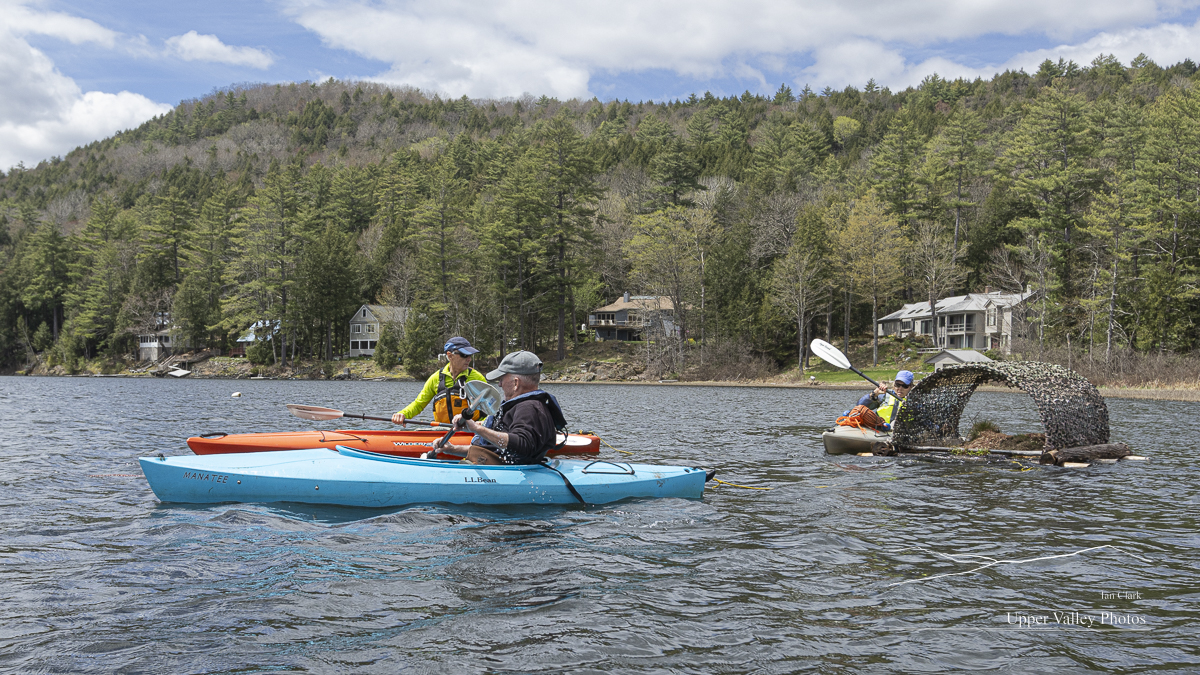
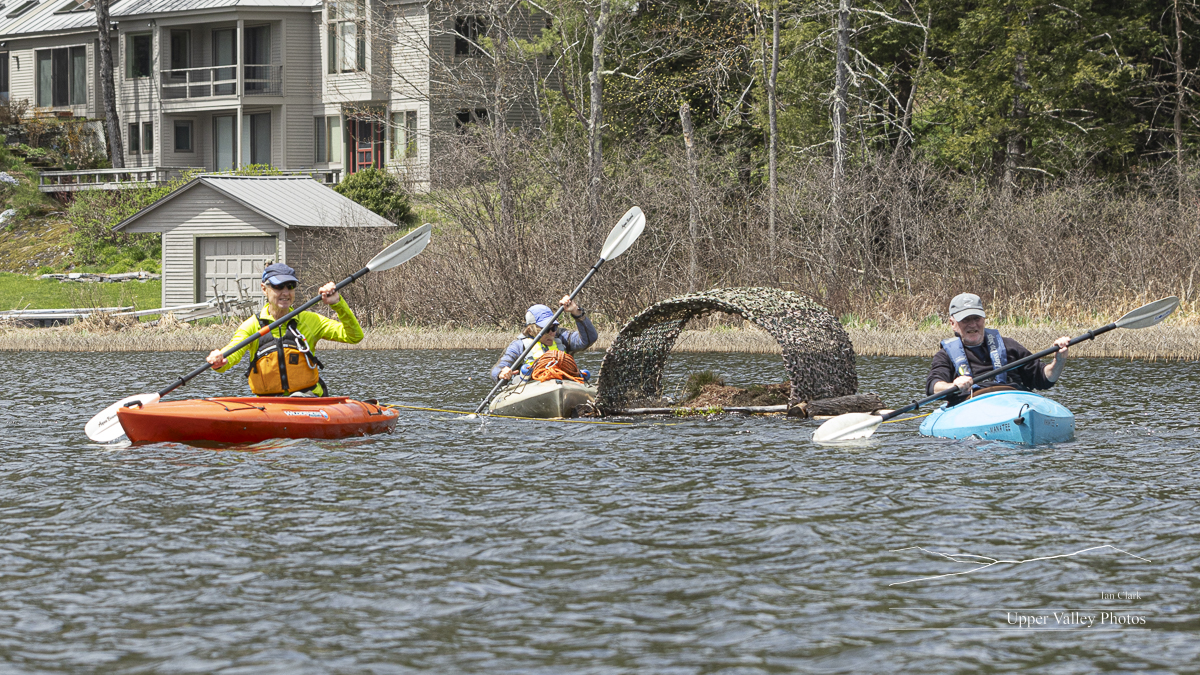

On April 23, I made it out to check in with the Westons. (For new readers, to give the loons some privacy, I named the loons on the pond to my east the Eastons. The loons to my west are the Westons, and the pond in the middle hosts the Middletons.)

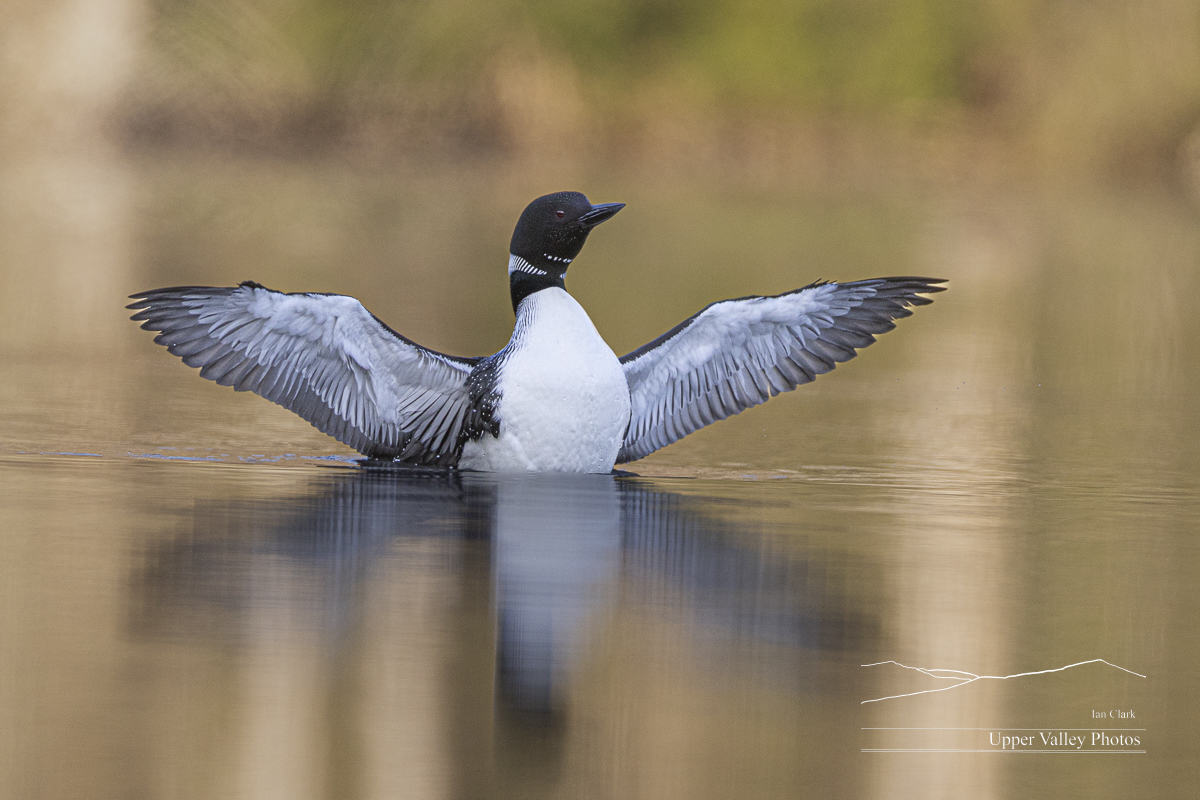
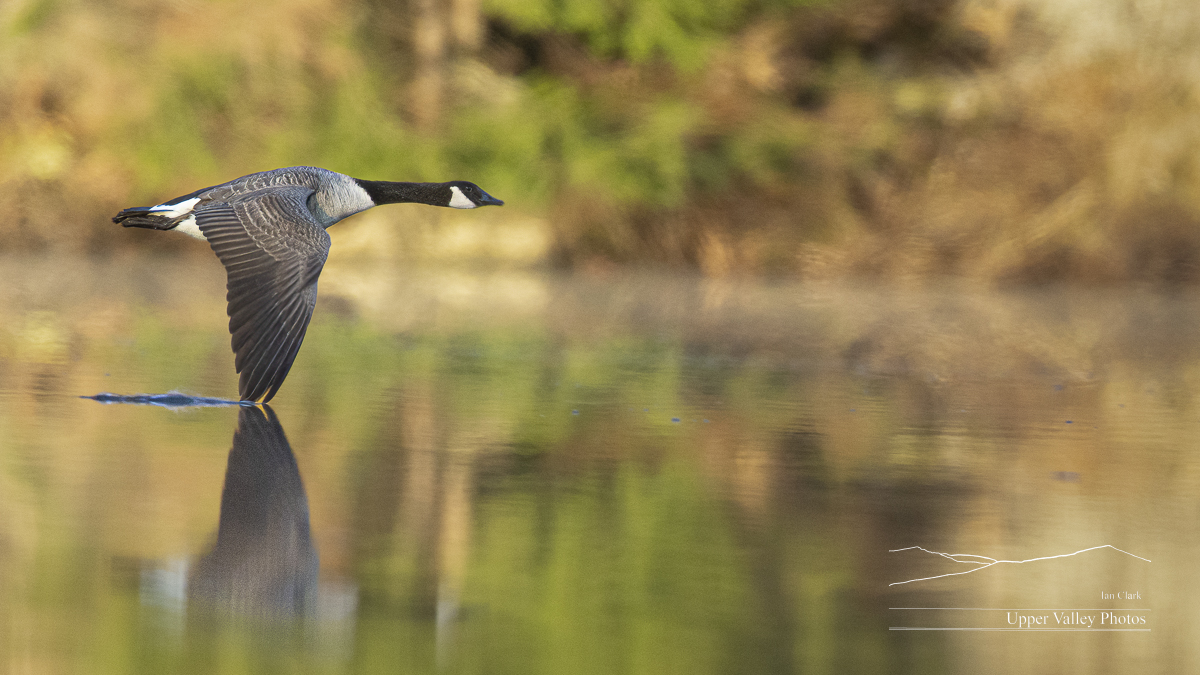
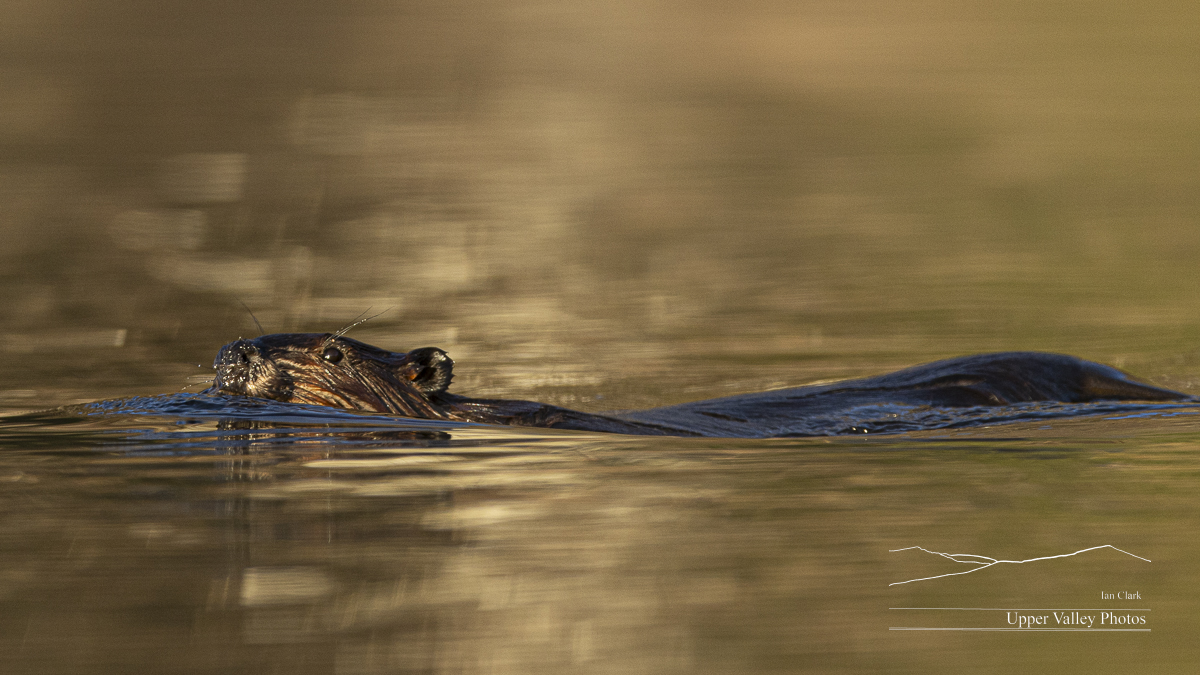
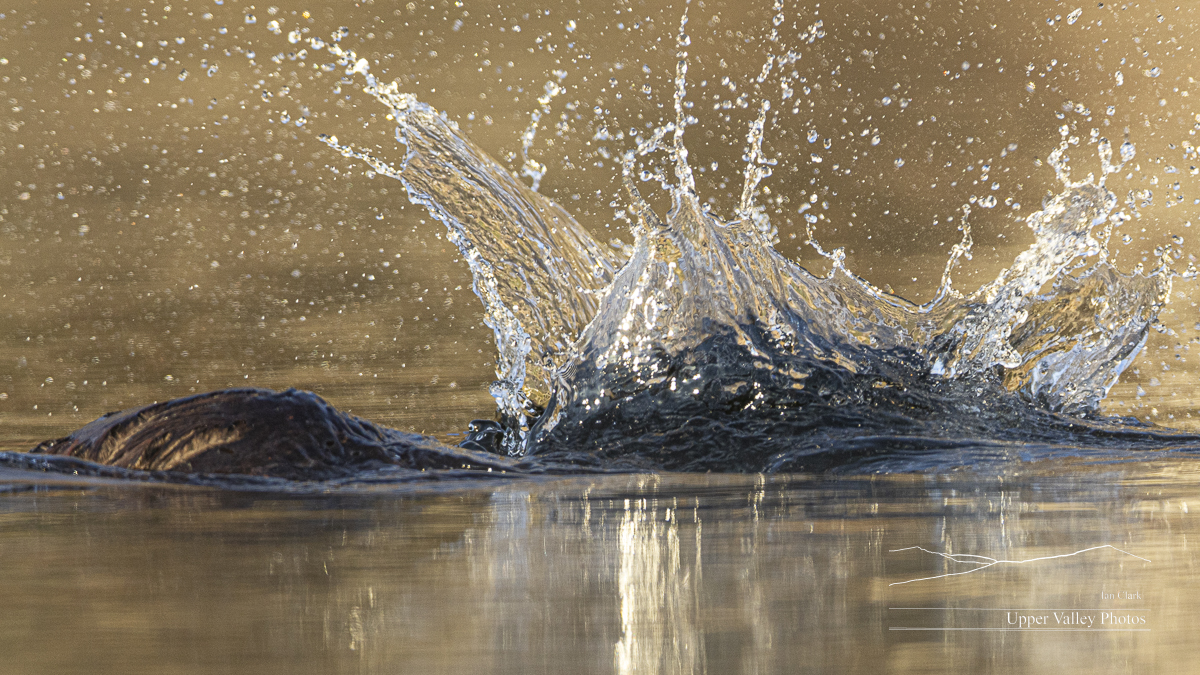
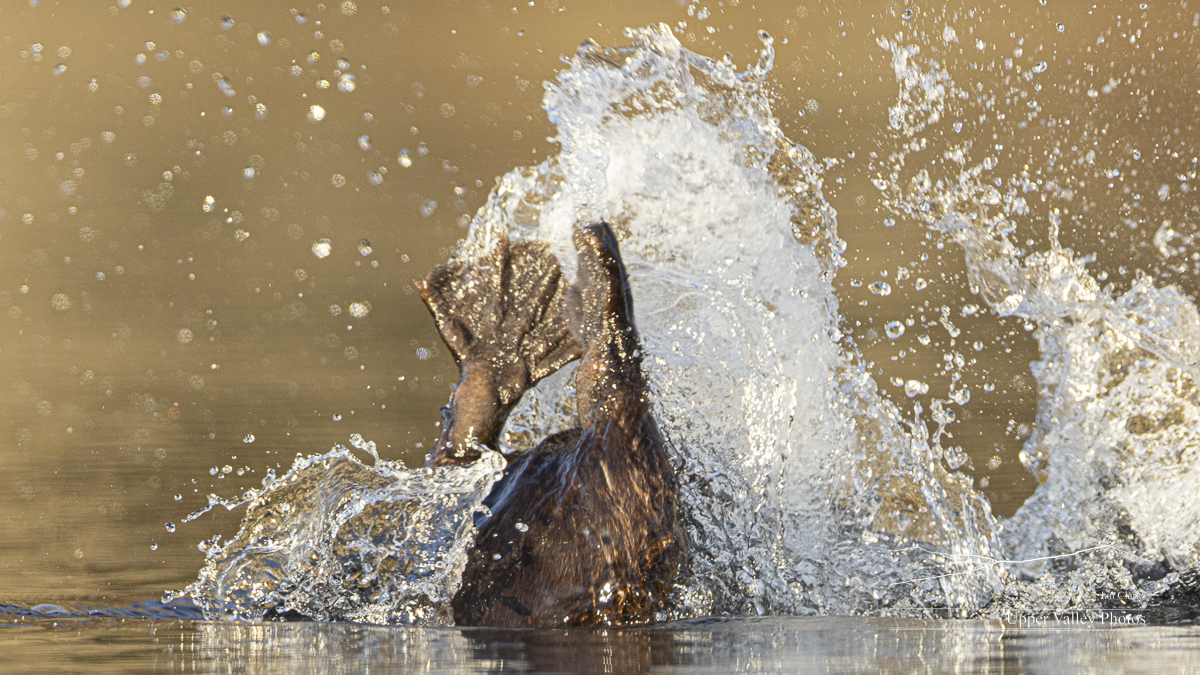


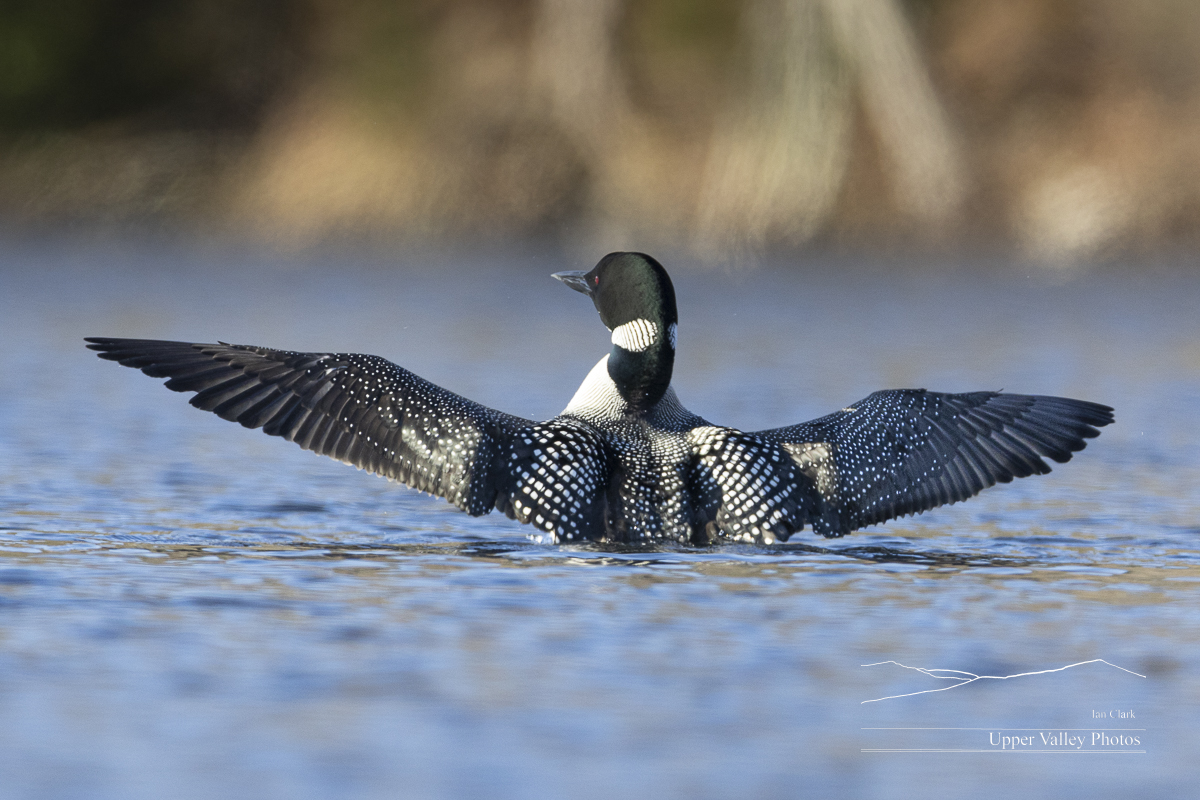

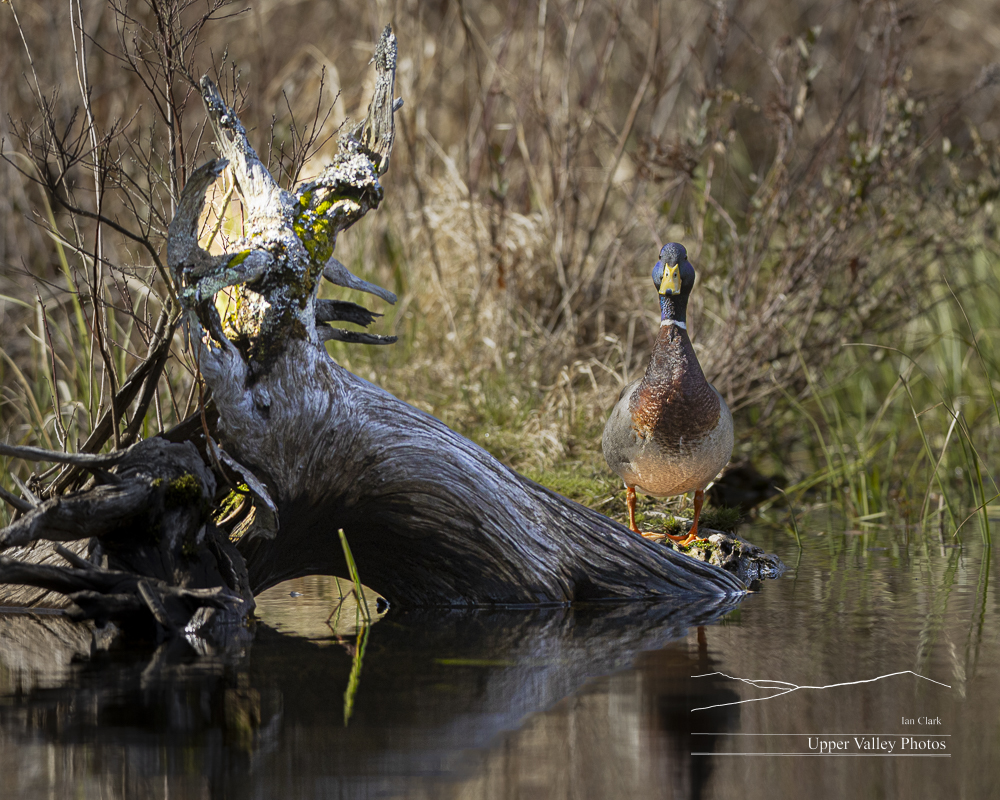
Last Friday, I visited the Middletons. They were busy foraging, apparently having to work for dinner. They were making long dives and covering lots of territory underwater. I went to see who else might be around the pond.
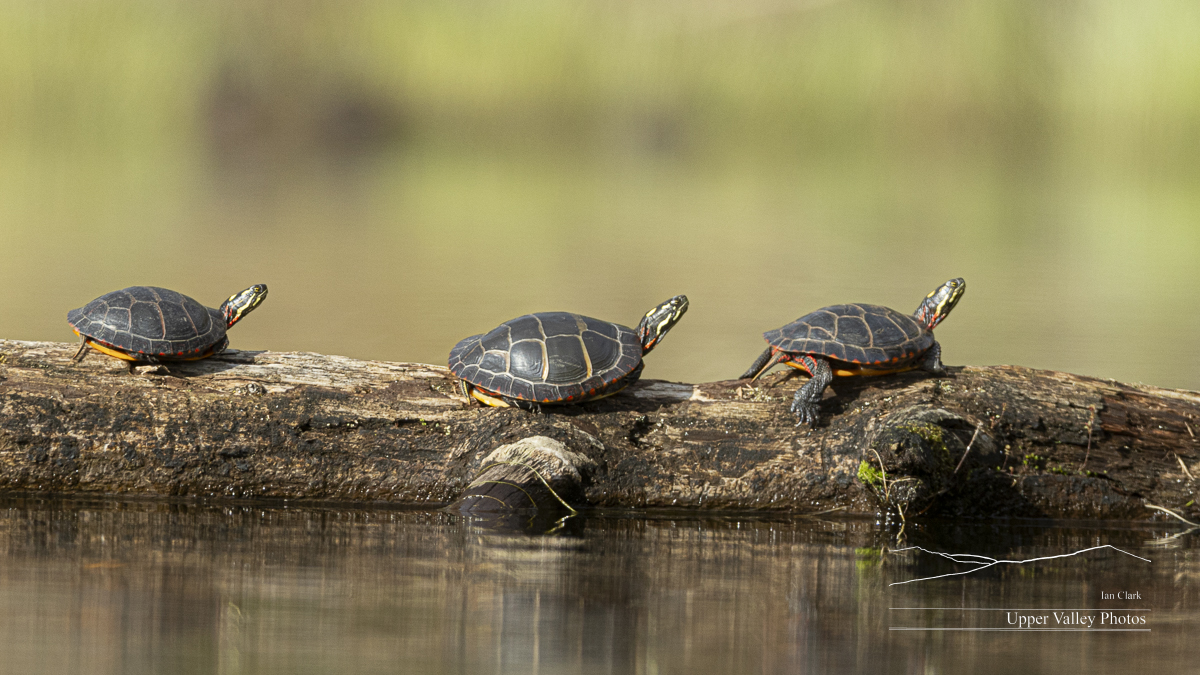
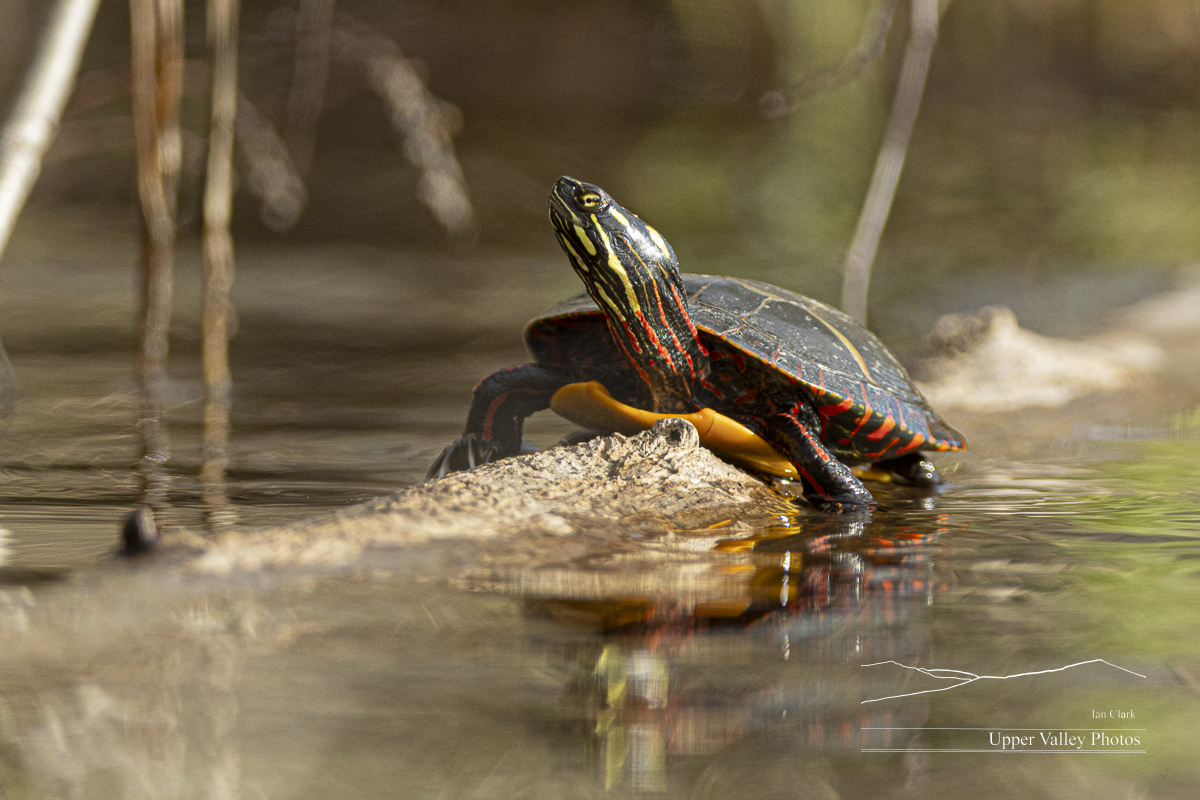
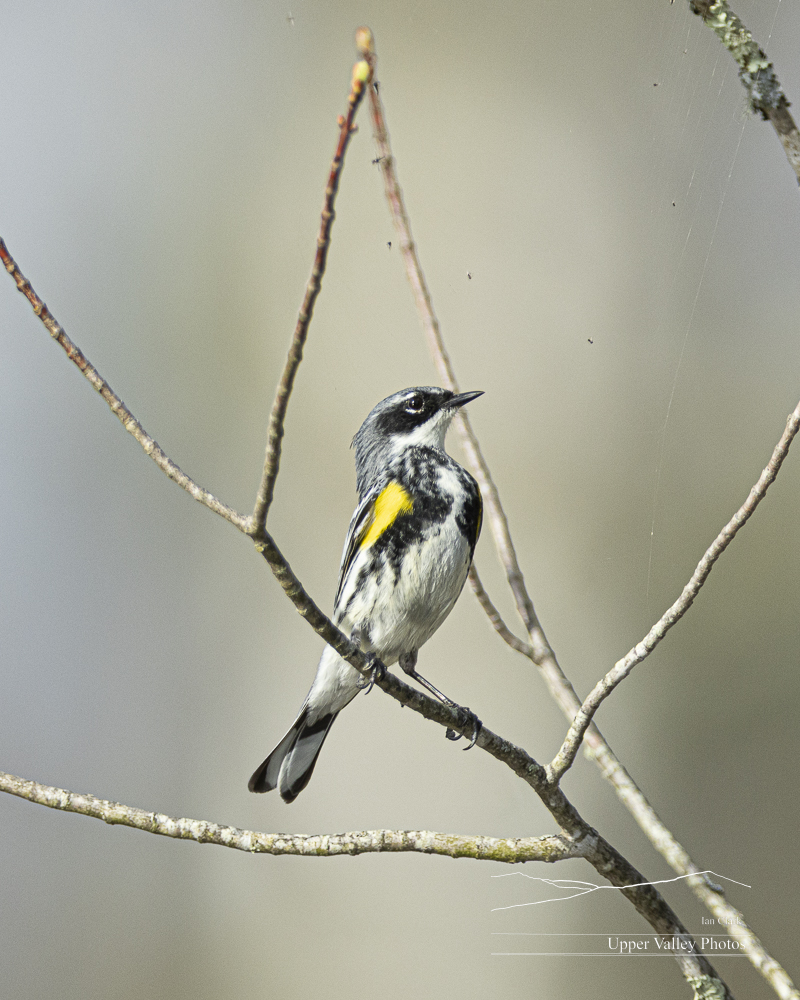

There were several pine warblers in the flock. I’ve yet to get a good photo of one. They tend to forage deep in the brush, making it hard to get an unobstructed view of them. It turns out one of my skills is photographing branches on which pine warblers were very recently perched. (My other talent is stalking heron-shaped sticks.)
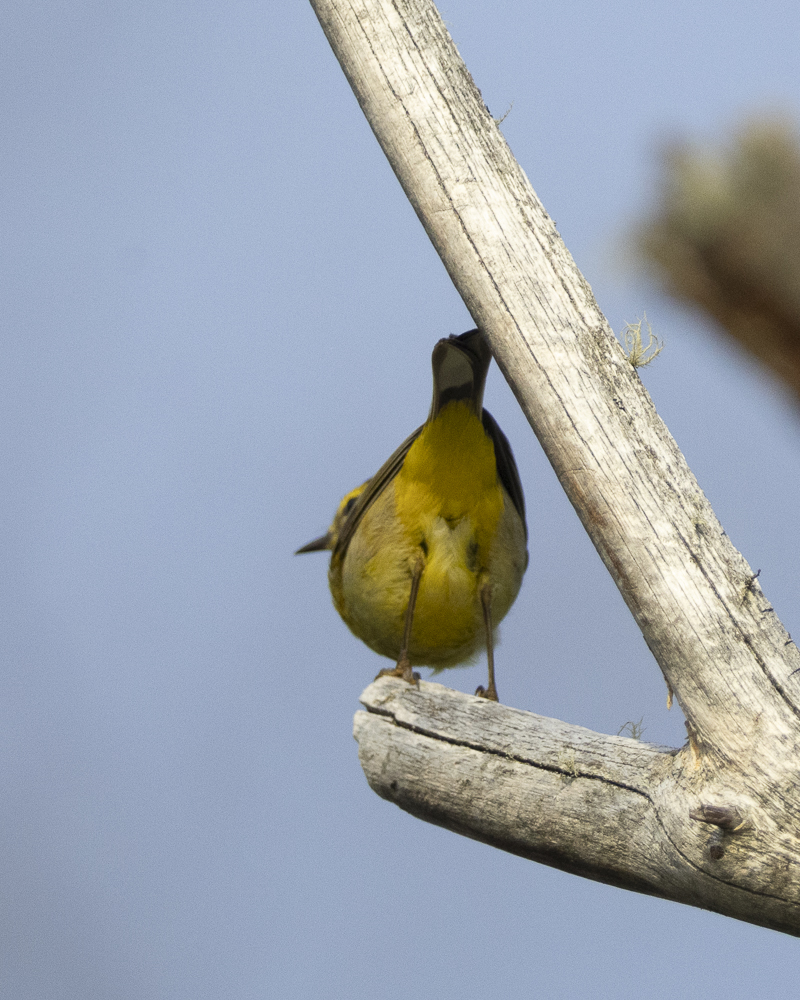
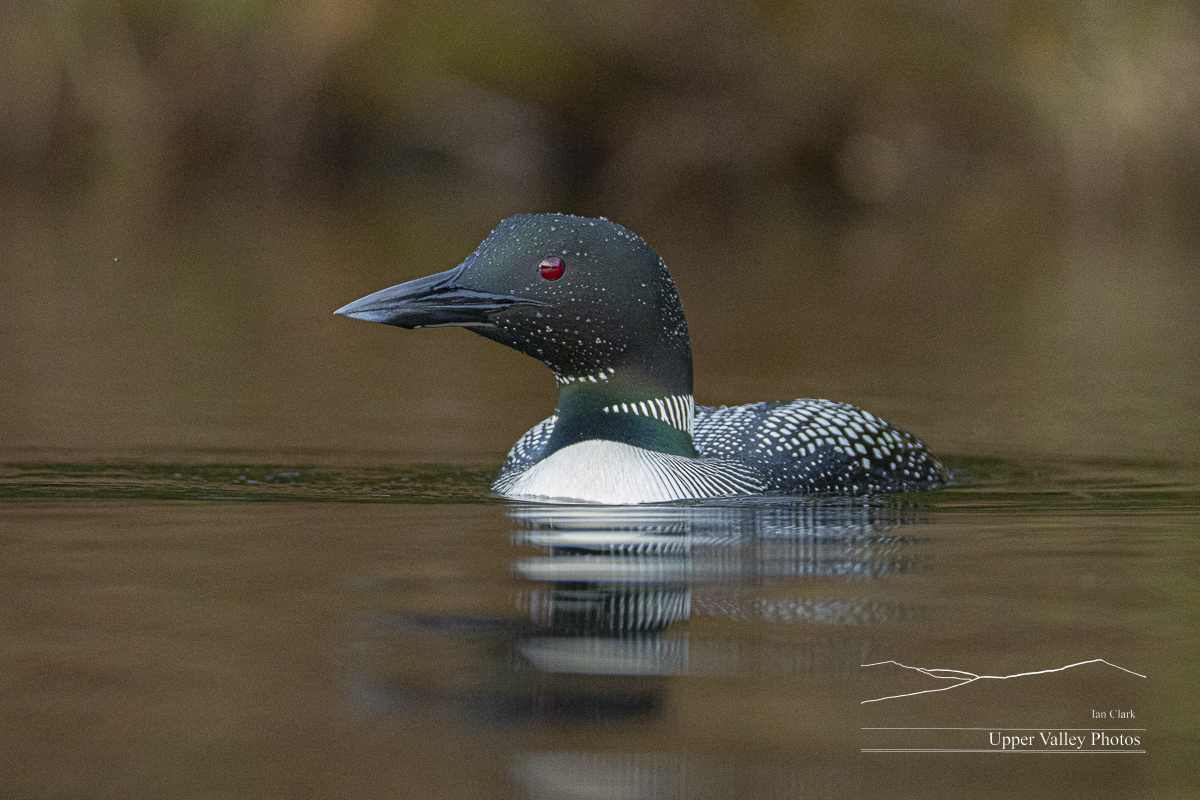
Saturday morning found me visiting the Westons once again. The weather went south rapidly and I left when it started raining.
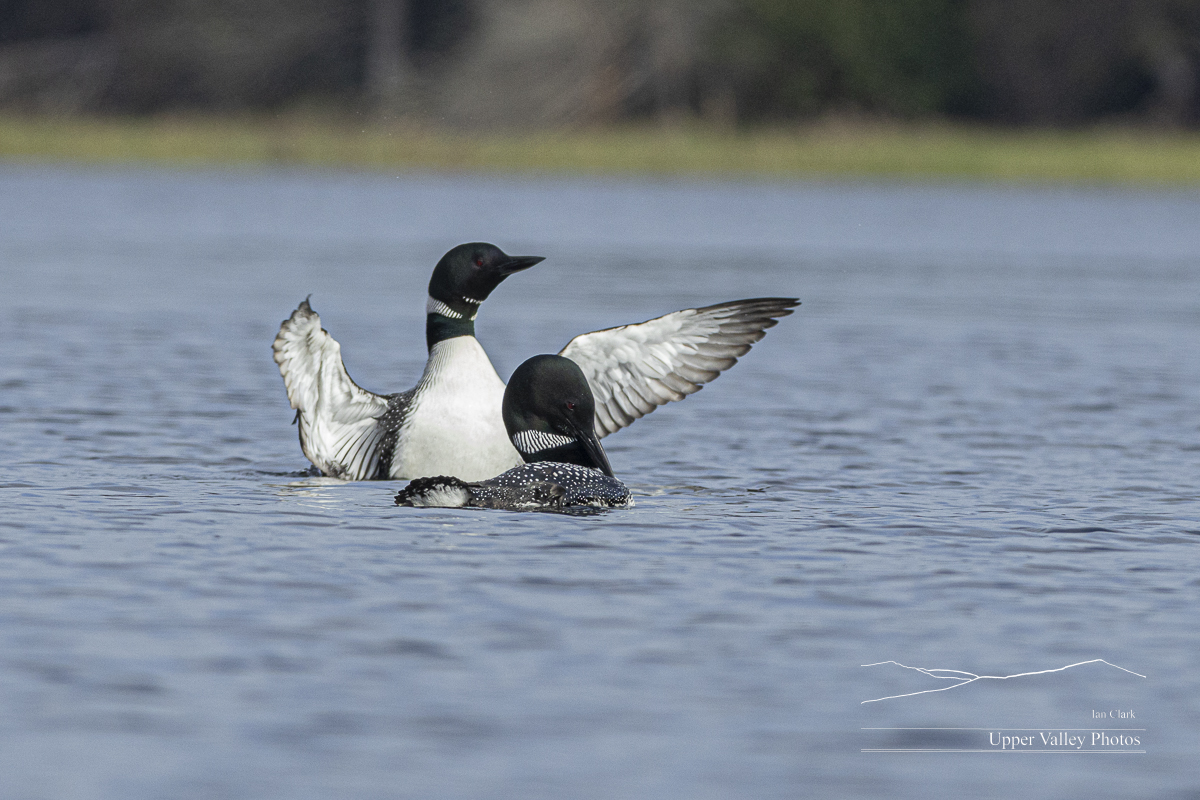
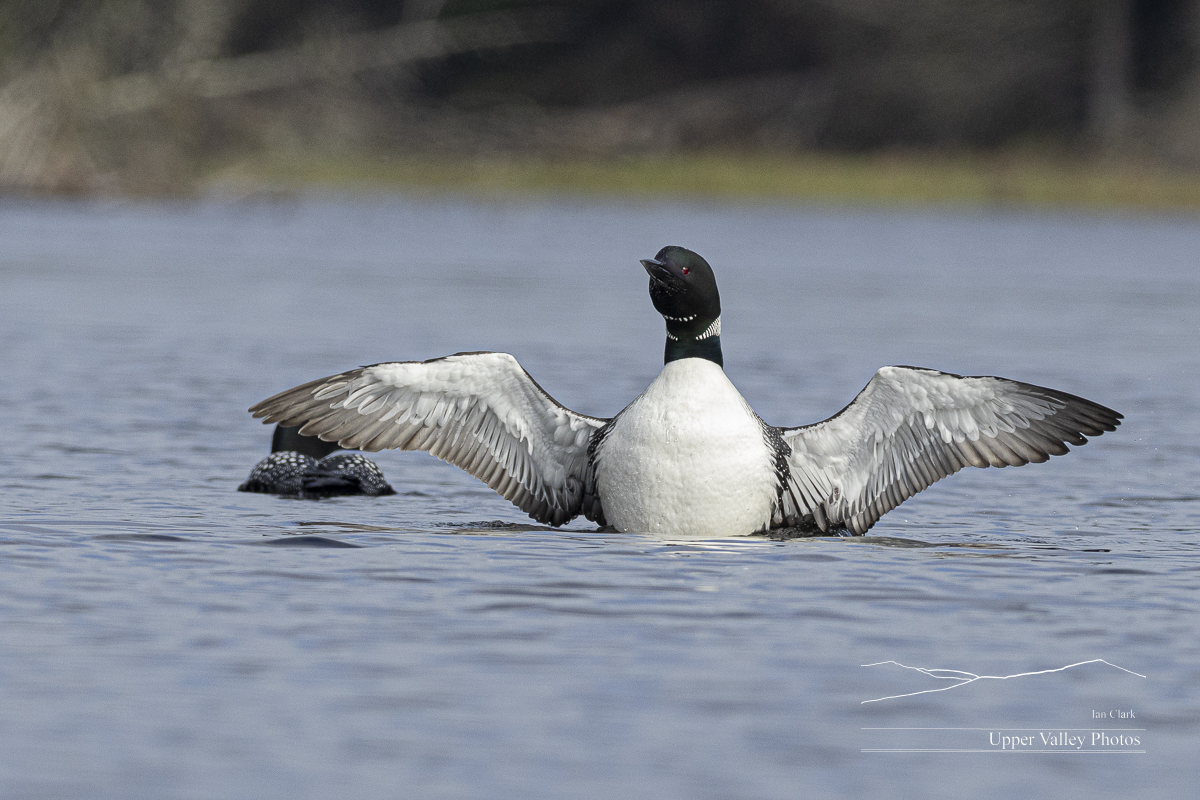
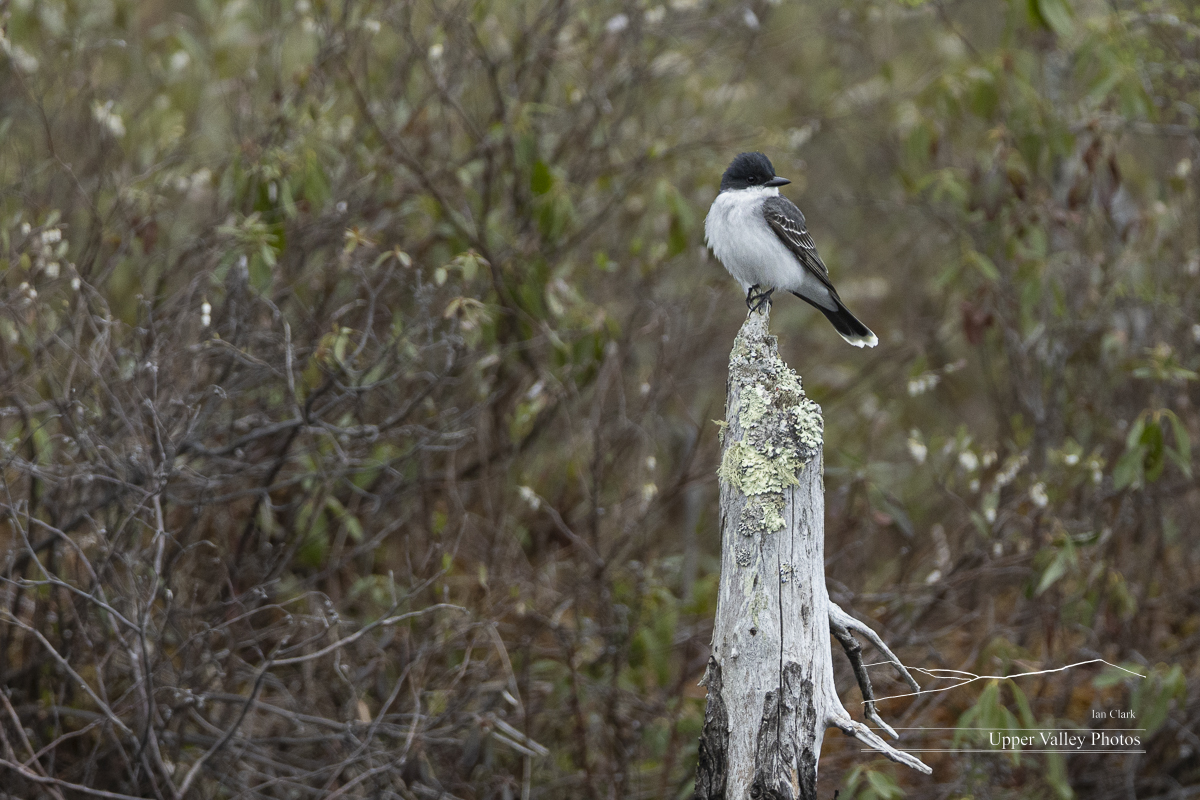
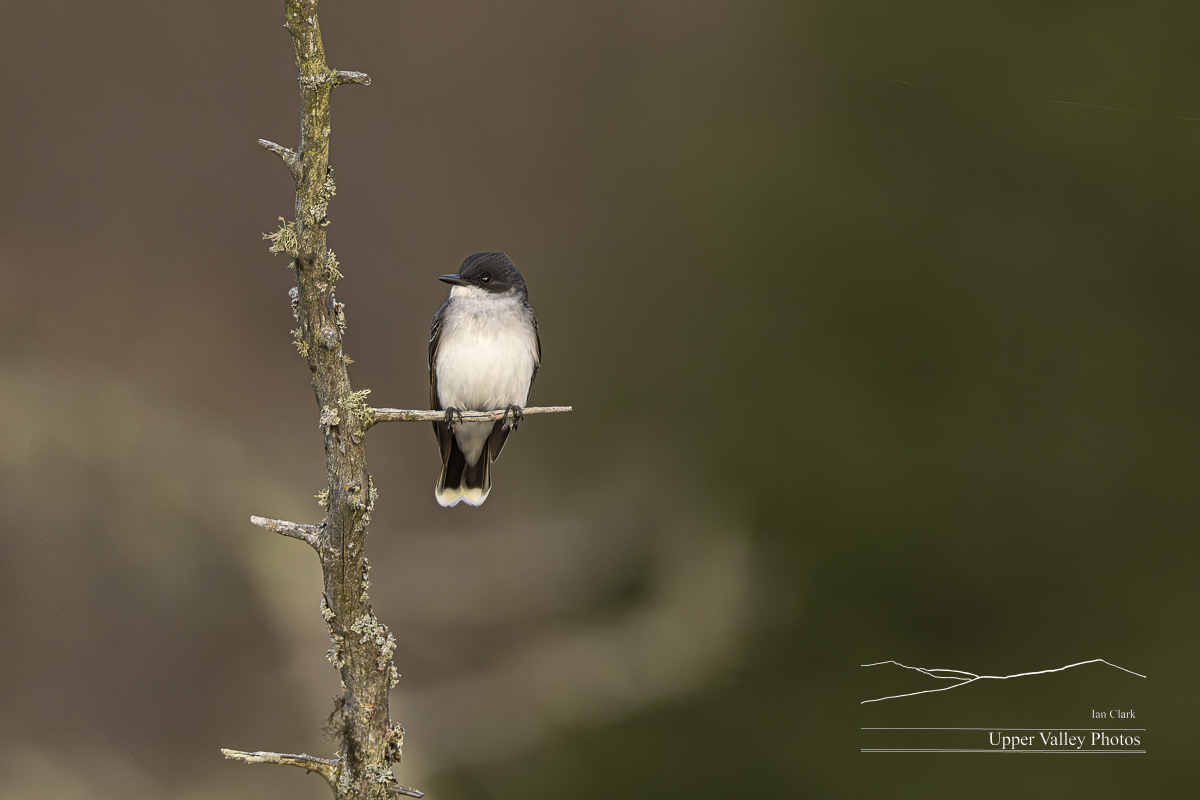
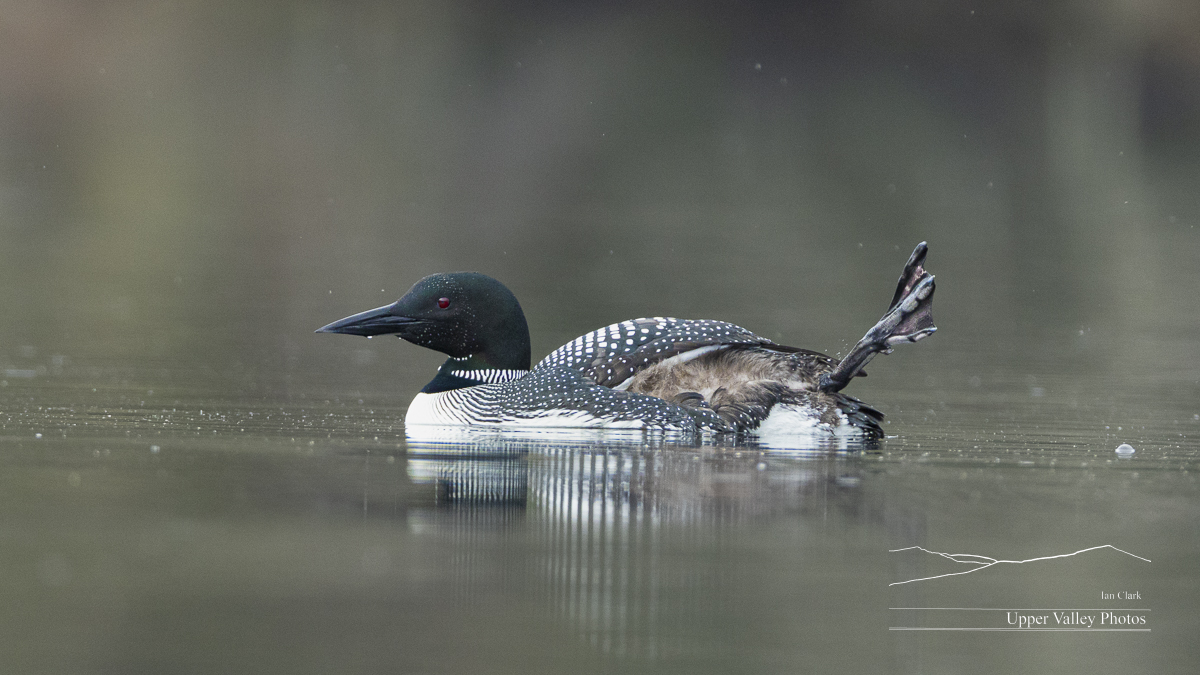
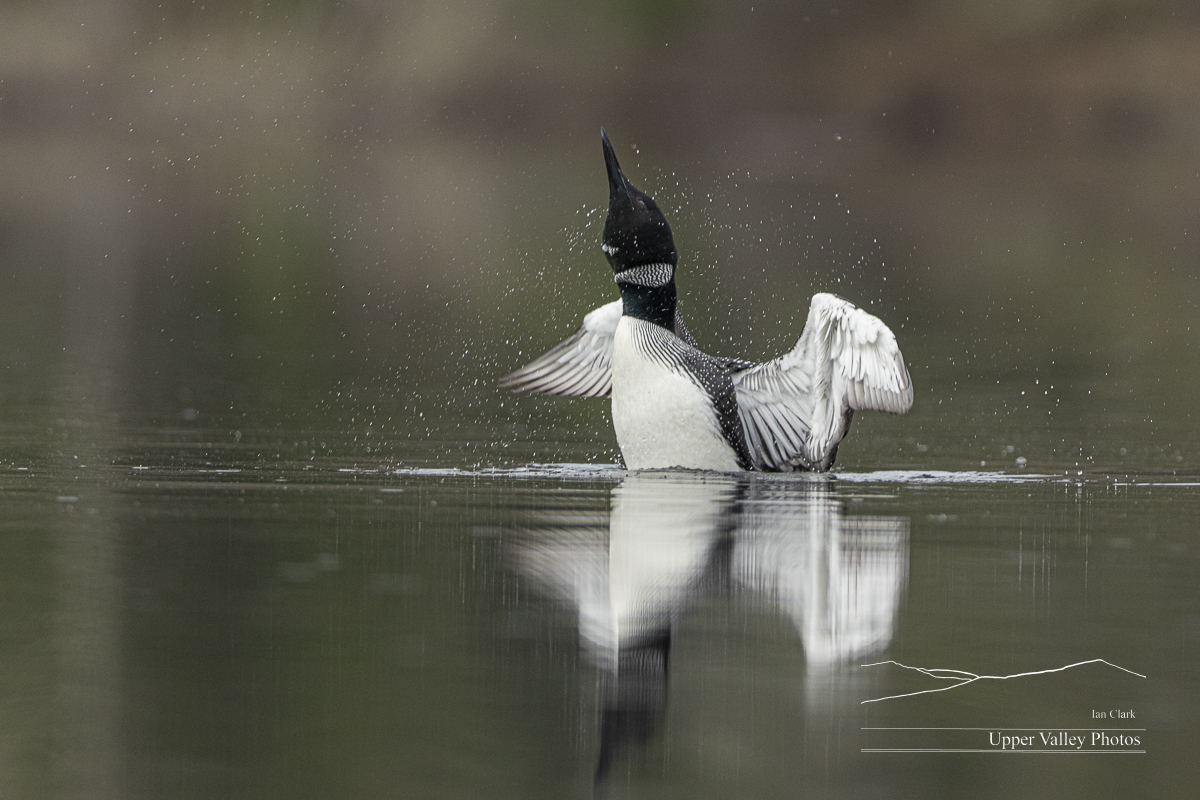
Spring Has Arrived
After several false starts, it looks like spring has arrived to stay in the Upper Valley. Of course, I’m not taking the snow tires off until the second week of May.
Along with the ice going out, our summer residents are arriving back in droves. I spotted six loons on the Middleton’s pond on March 31. By the time I put the boat in the next day, they’d moved on. My bet is they’d been scouting the territory to see which ponds were open and just stopped for a rest and a meal before heading back south. But there were other critters out and about.
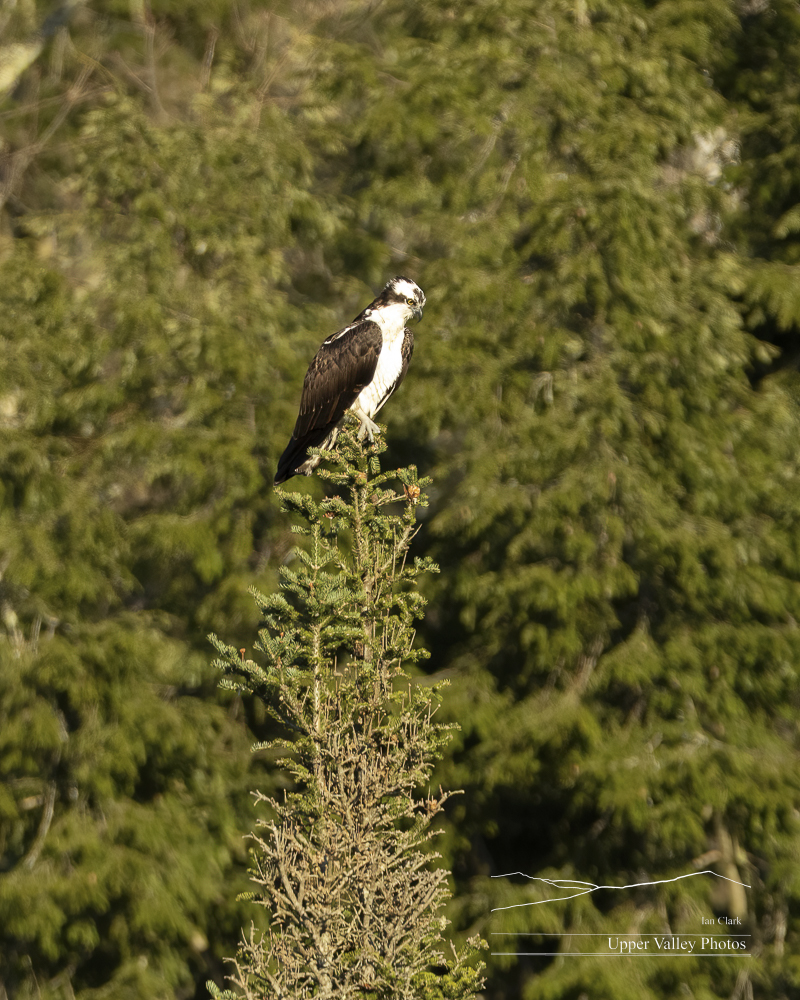
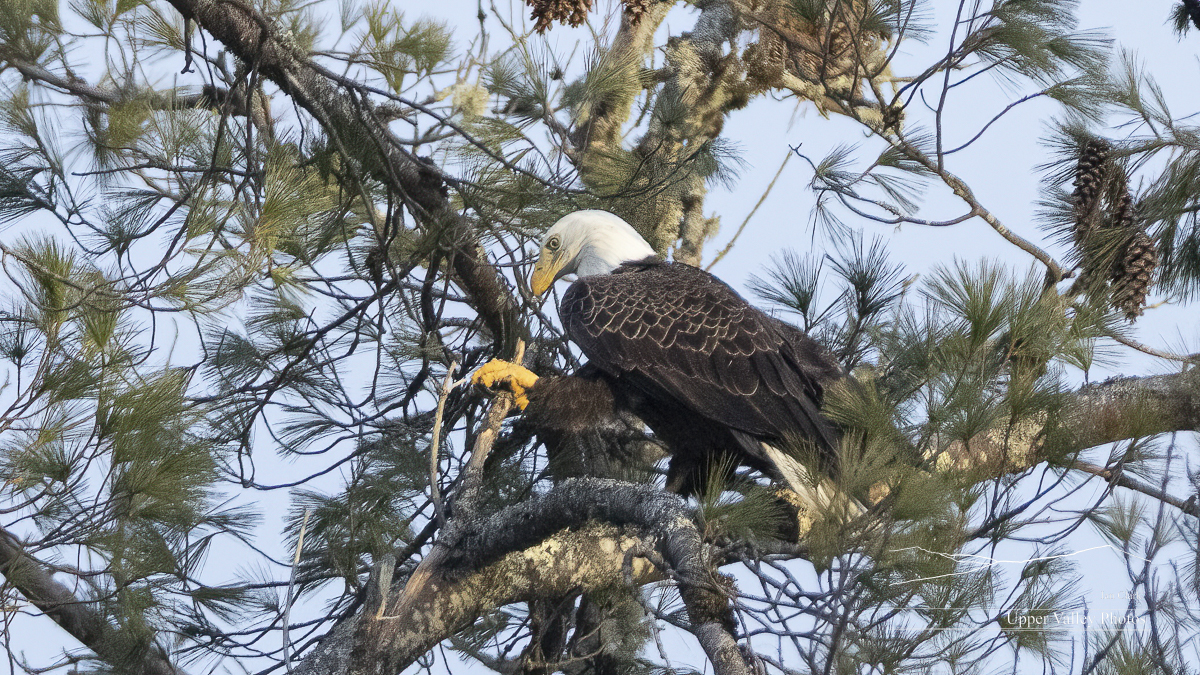
My next trip took me to the Weston’s pond last Sunday. A friend on the pond told me that one loon had arrived back on the April 9. There was still only one loon on the pond.
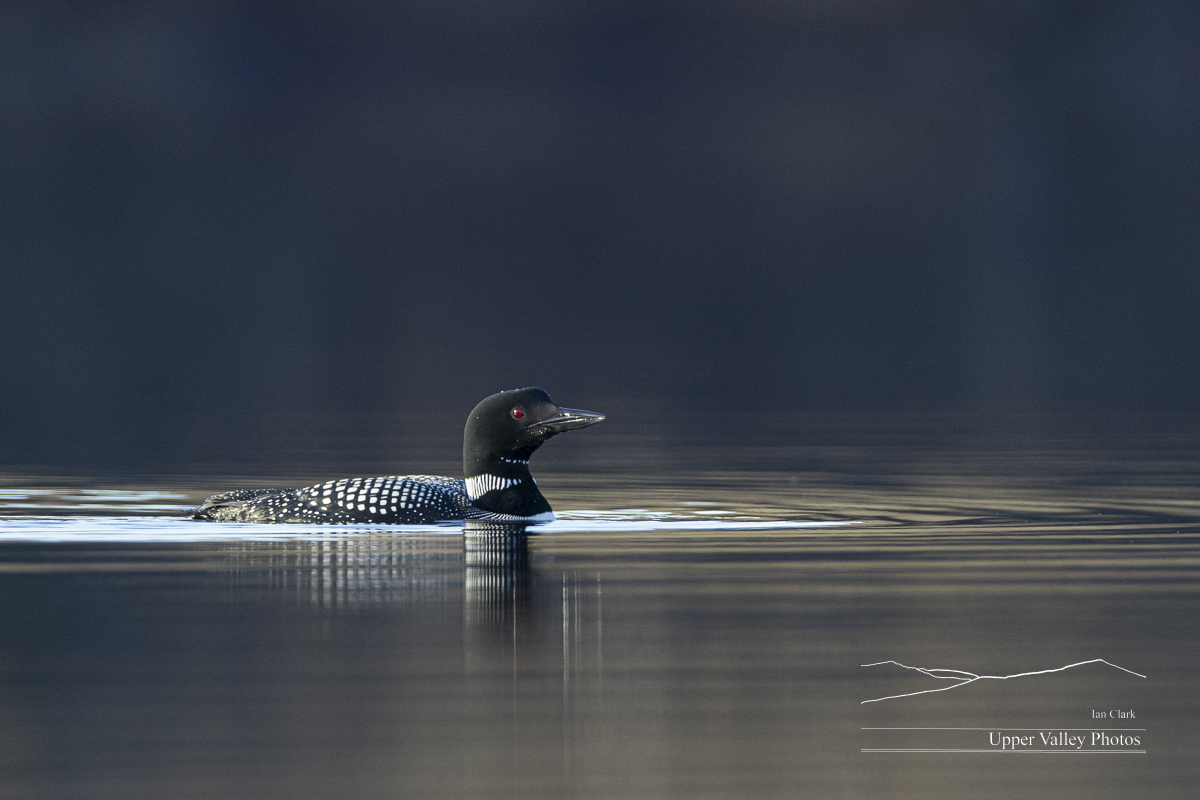
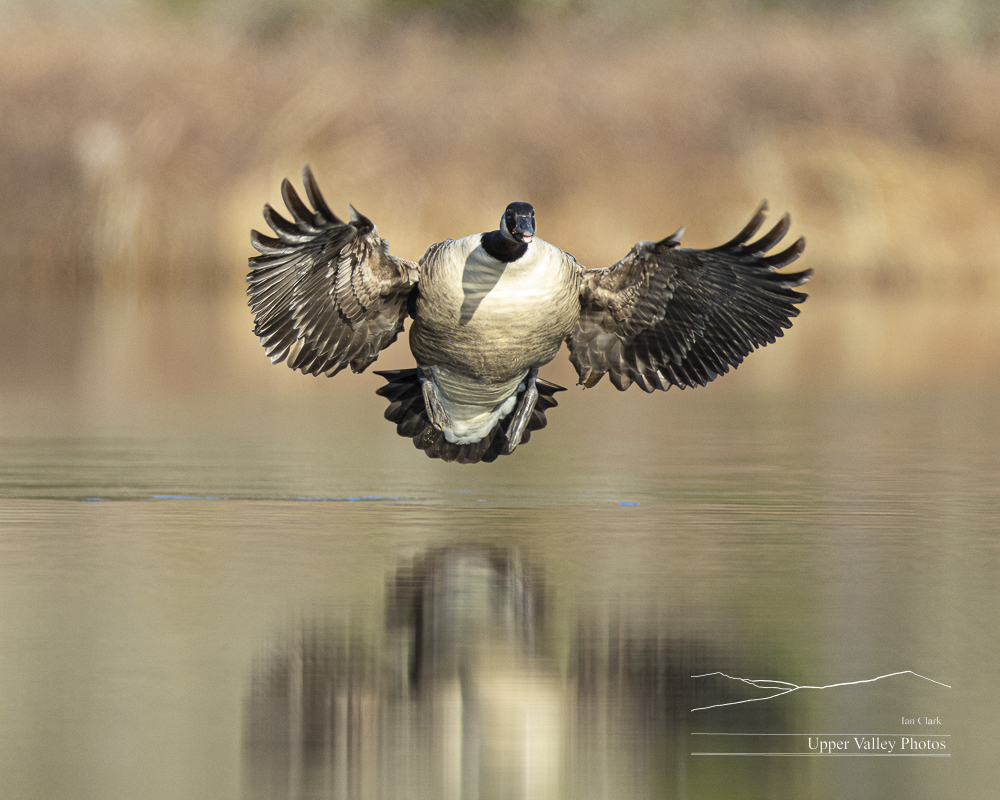
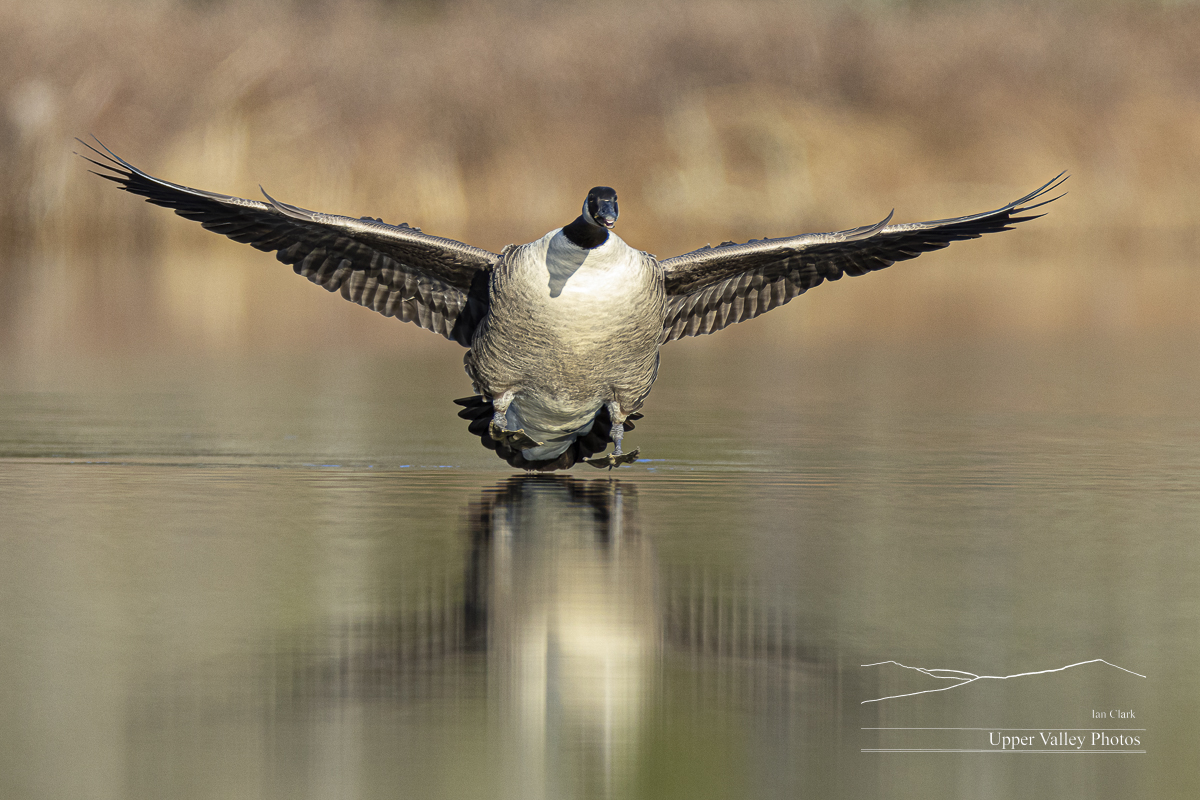
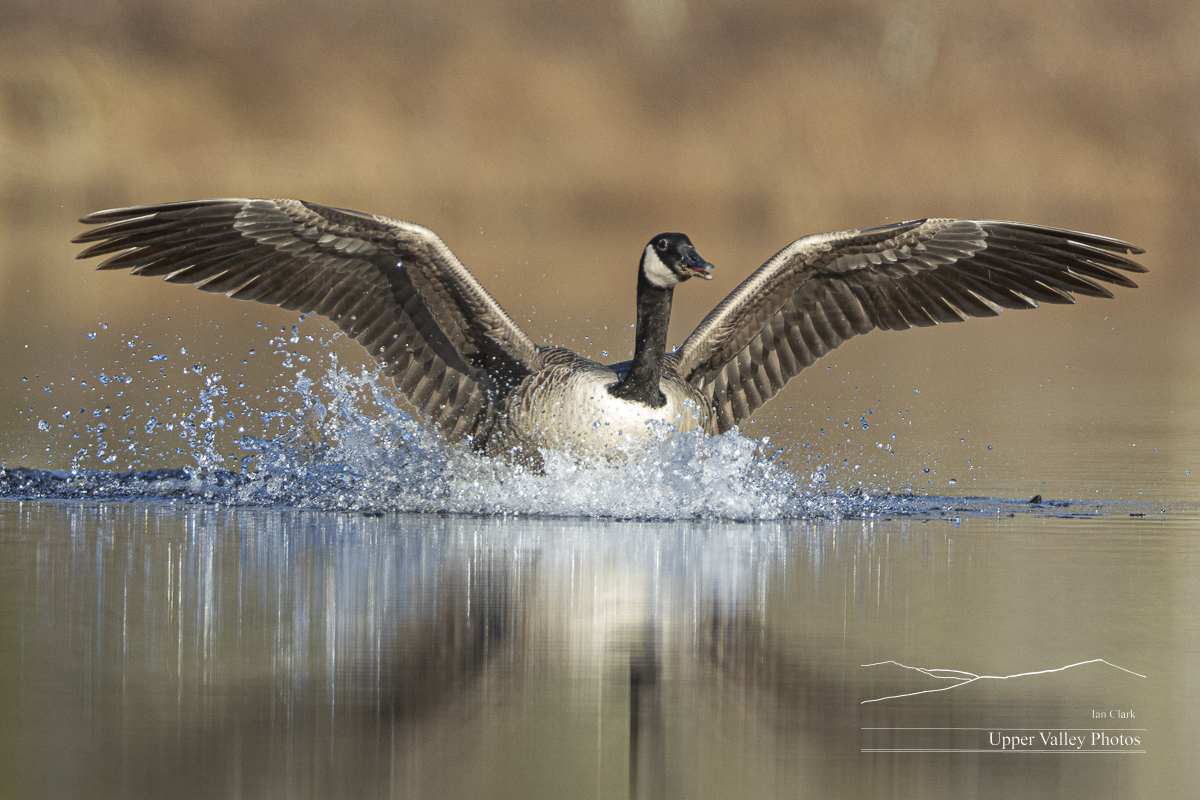
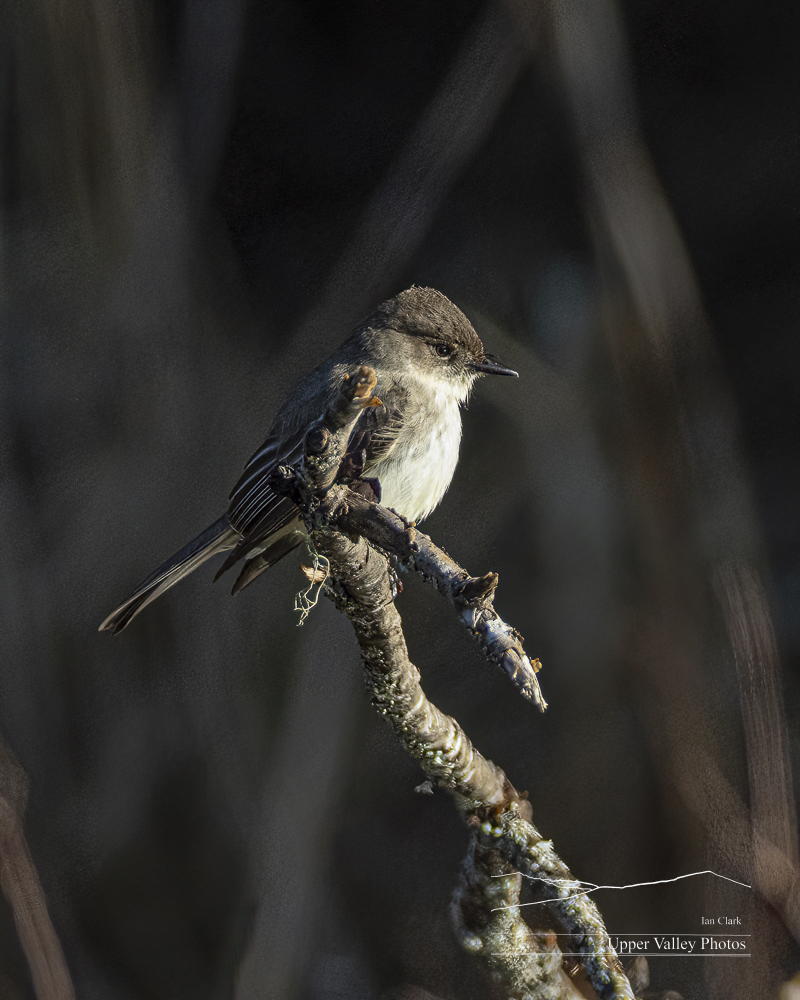
I got back to the Weston’s pond on Tuesday for a brisk paddle – it was 39°F when I put the boat in. We still had only one loon and the geese were causing a ruckus.

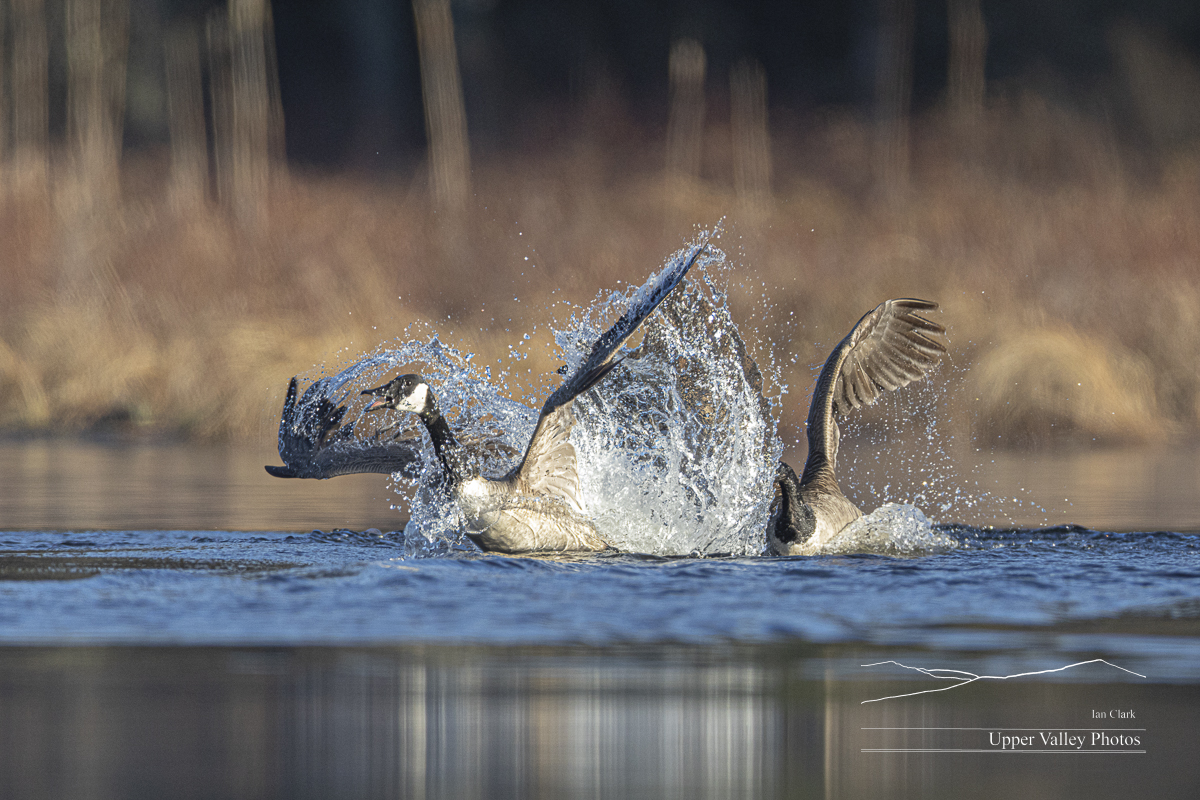
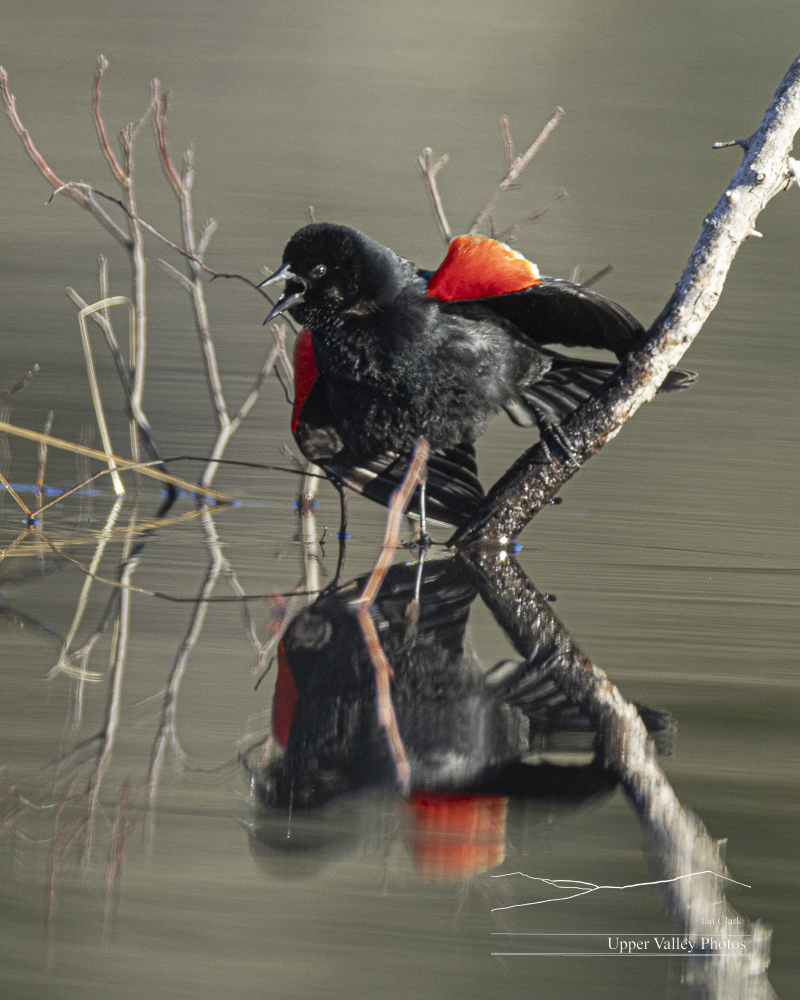
Wednesday morning found me back on the Middleton’s pond. And missing the balmy day before. It was a chilly 28°F as I pushed through a skim of ice to get on the pond. As soon as I cleared the ice, there were trout feeding at the surface. The osprey both made quick work of finding breakfast. And, there were loons.
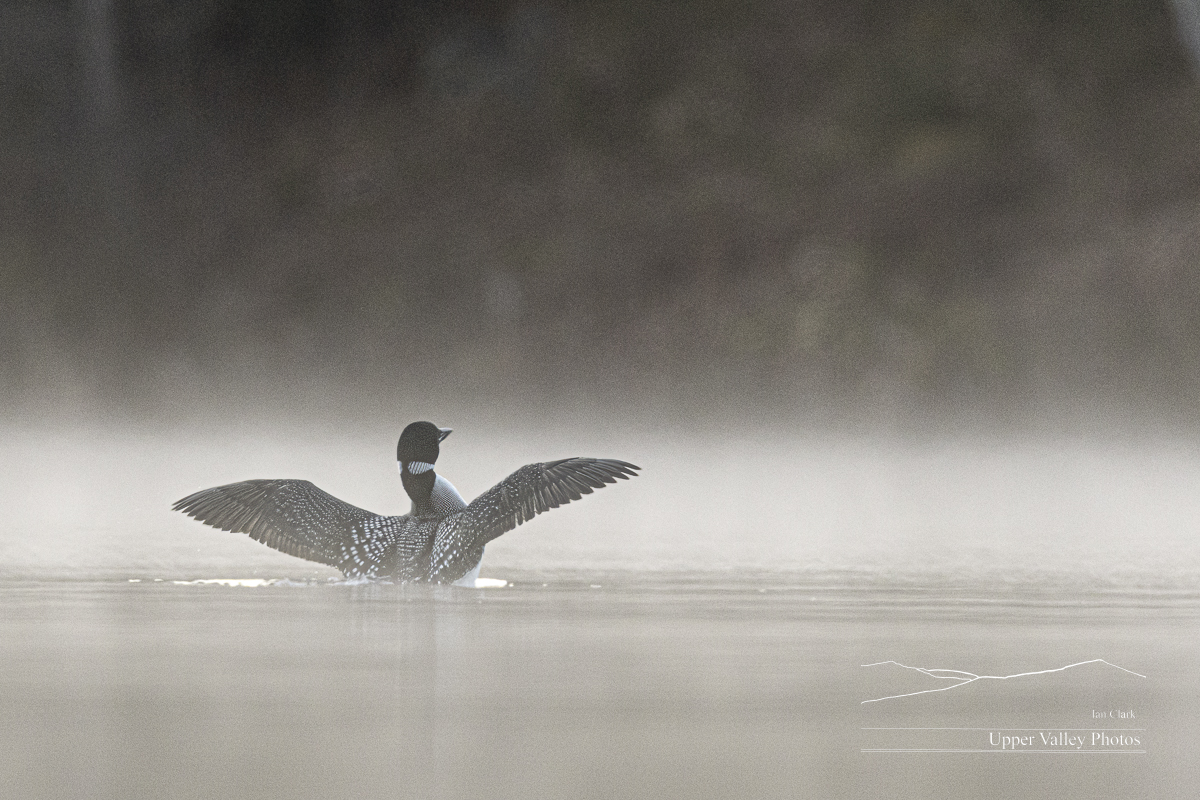
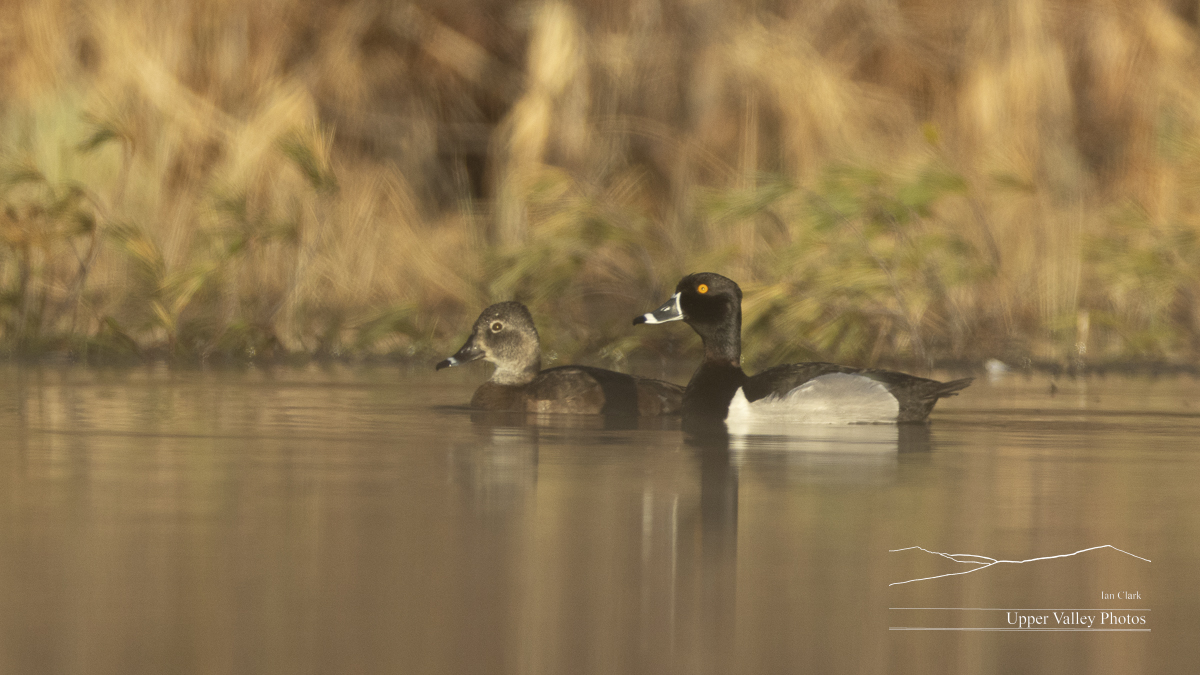
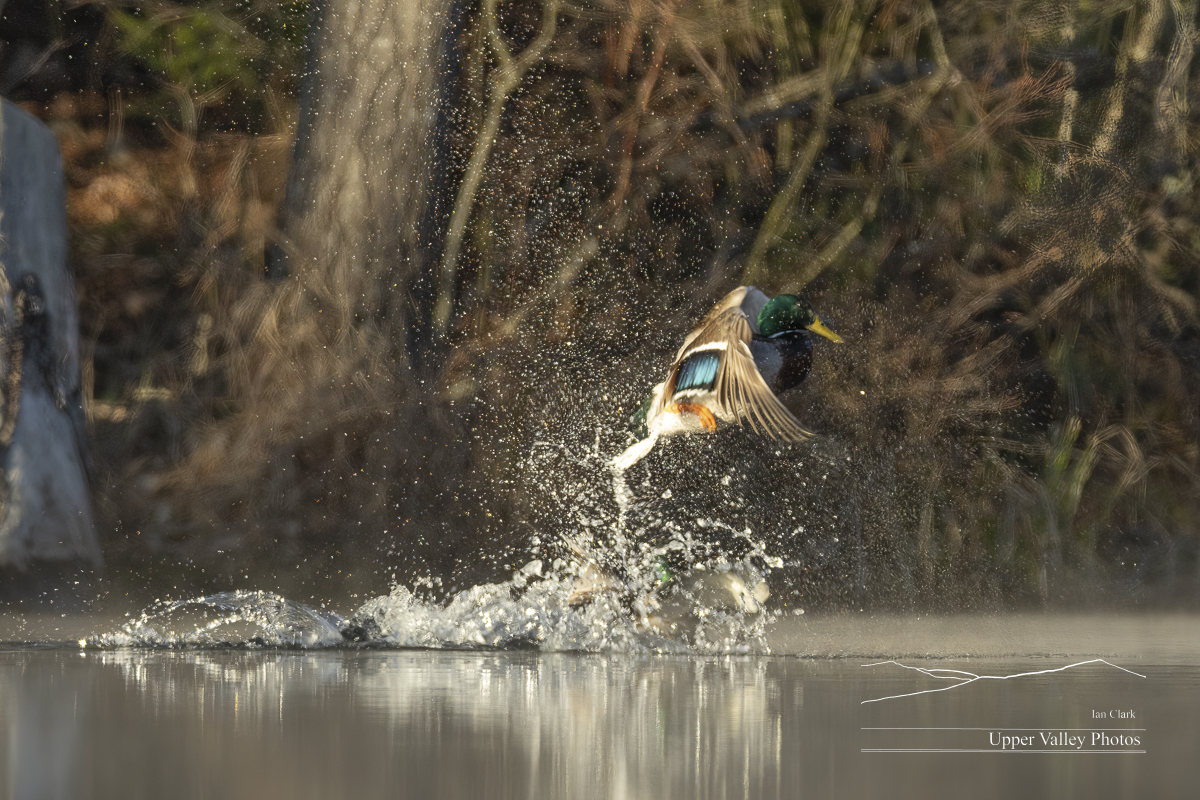

They also spent some time exploring along the shore. The hummock they’ve used for their nest site for several years washed away in the heavy rains last summer. They’ll have to find a new site.
At one point, one loon beached and almost seemed to be presenting. That would be about a month early. The second loon didn’t respond and they soon started off down the shoreline again.

This morning I headed to the Easton’s pond again. Our second loon has returned. As I was putting the boat in, another loon flew over and was challenged by the loons on the pond. A loon flew over the pond on two more occasions, both times flying off after being challenged. The home team spent the morning foraging and preening.
The highlight of the morning was finding three otters feeding and wrestling on the bank of the pond.
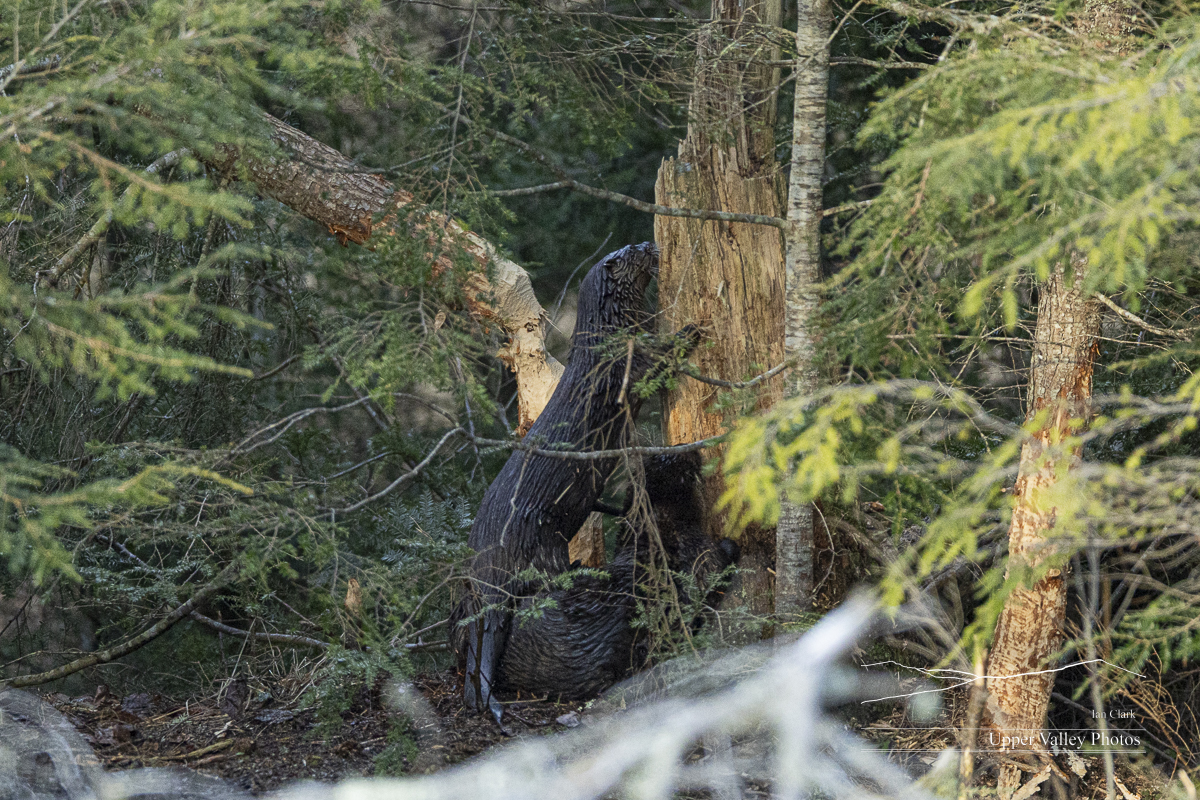
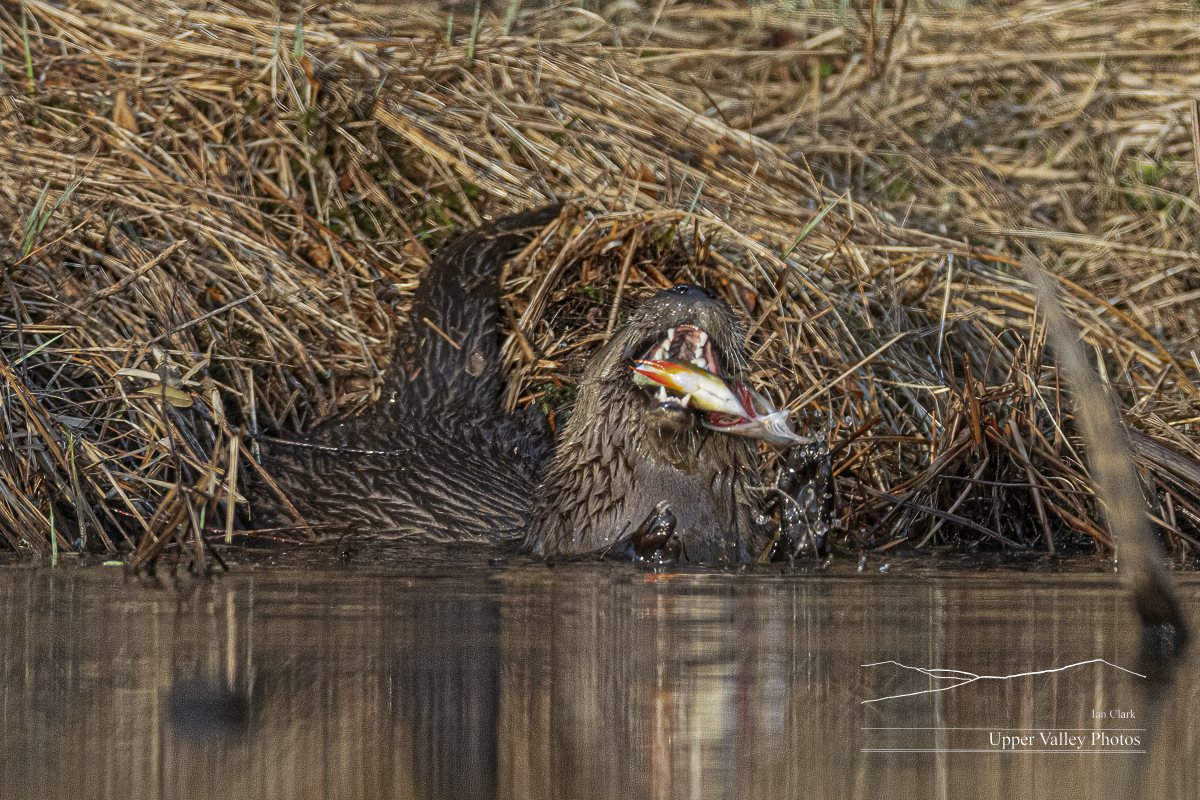


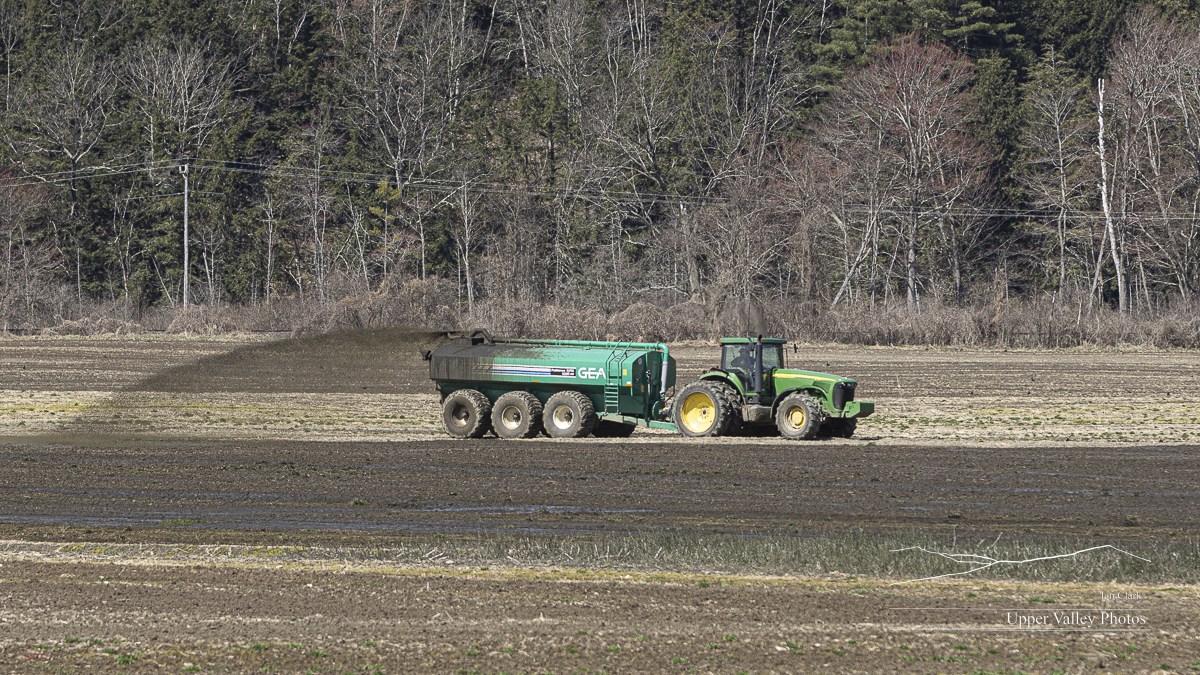
Our bluebirds are again building in our nesting box. I checked the cameras several weeks ago and all seemed fine. But now the camera in the box the birds are using isn’t working properly. We’ll have to skip watching the first brood – I’m not going to disturb the box to get at the camera until the the chicks fledge. Hopefully we’ll be back online for the second brood.
You can sign up to be updated when I add new posts, if you want to follow the loons through the season, go ahead and sign up. And, please share with your friends that might enjoy the wildlife.


Peregrine Falcons Have Returned
Peregrine falcons have returned to Vermont and are getting ready to nest. I was able to visit a pair in Caledonia County this morning. They spent some time seemingly discussing their nest site, with one promoting last year’s site, the other agitating for a ledge a couple dozen yards to the north. They interrupted the discussion to head out for a flying courtship display. Unfortunately, the display was out of camera range.
Peregrines were extirpated (locally extinct) in Vermont after the introduction of DDT. The state started a recovery effort in 1975 and the population is increasing again. The last year I could find figures for was 2022, when there were an estimated 60 pairs nesting in Vermont.
Peregrines are thought to be the fastest animal on earth. They can dive in flight. Estimates online range from 200 to 240 mph, without my finding anyone who claims to have actually clocked a flying falcon. But, seeing one dive is indeed impressive and the estimates are believable.
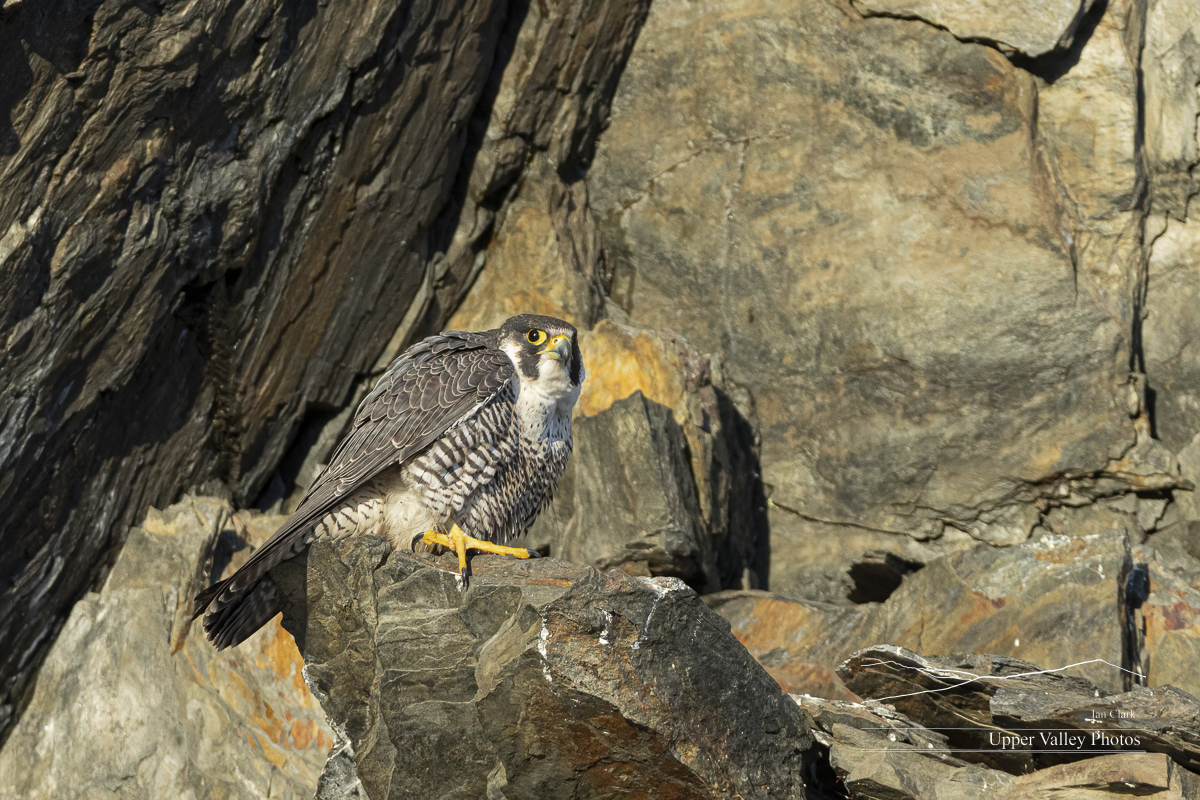

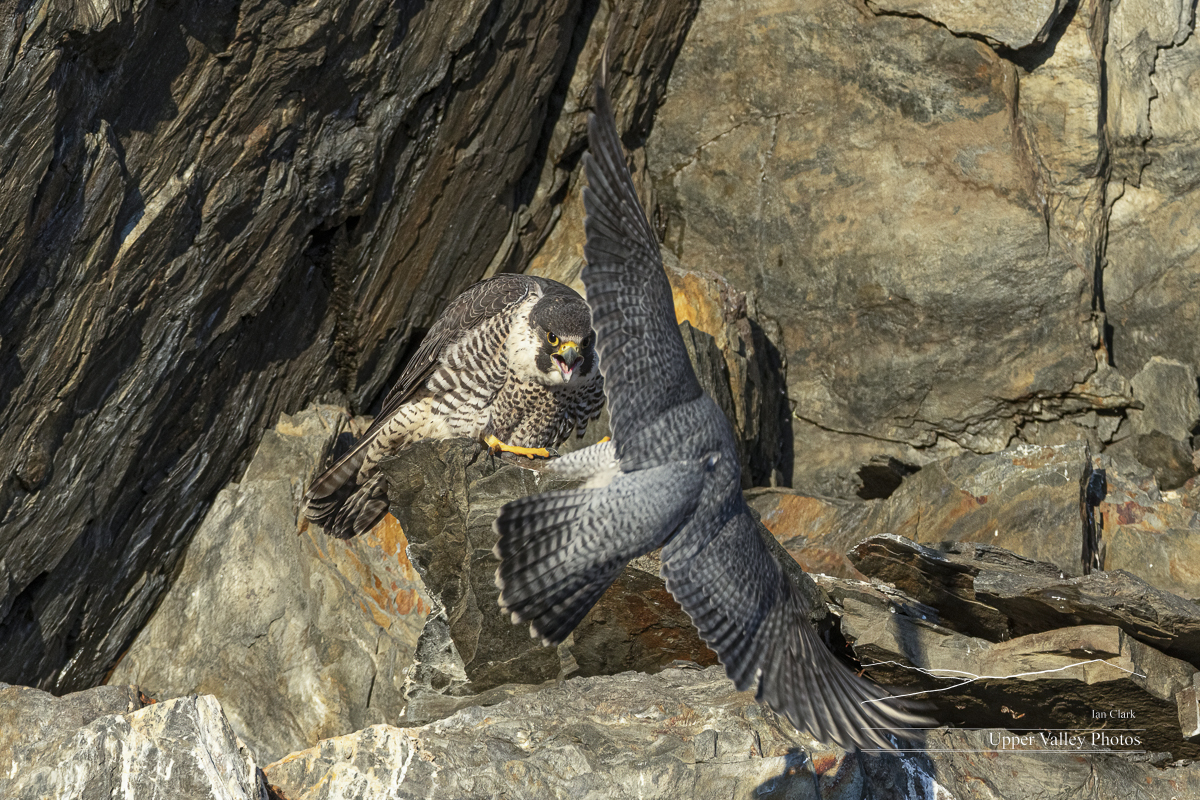
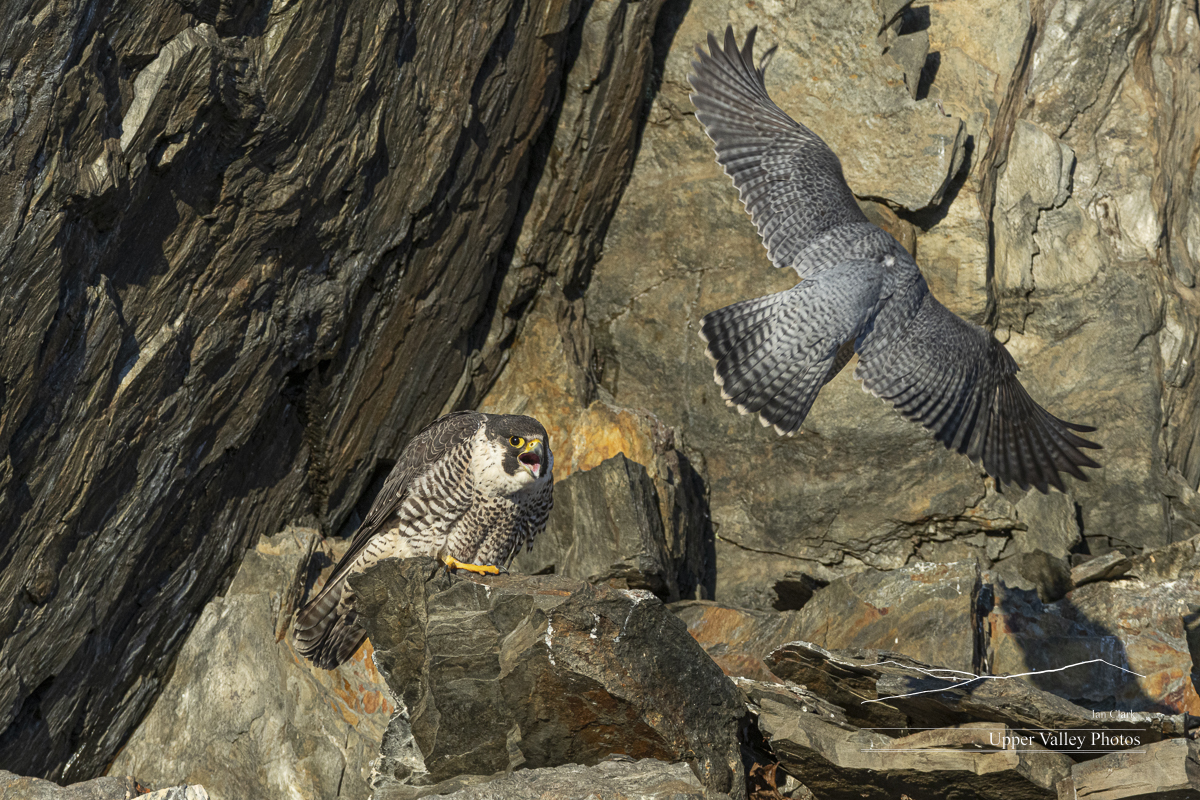

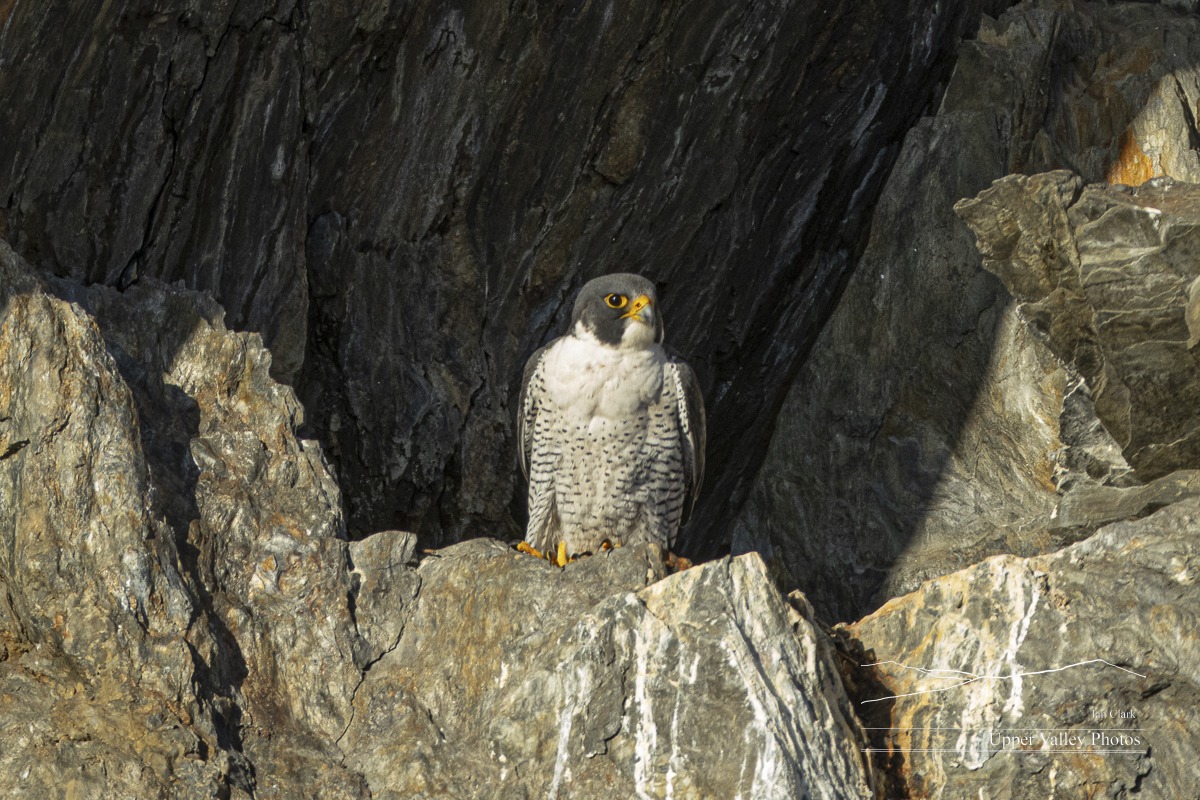

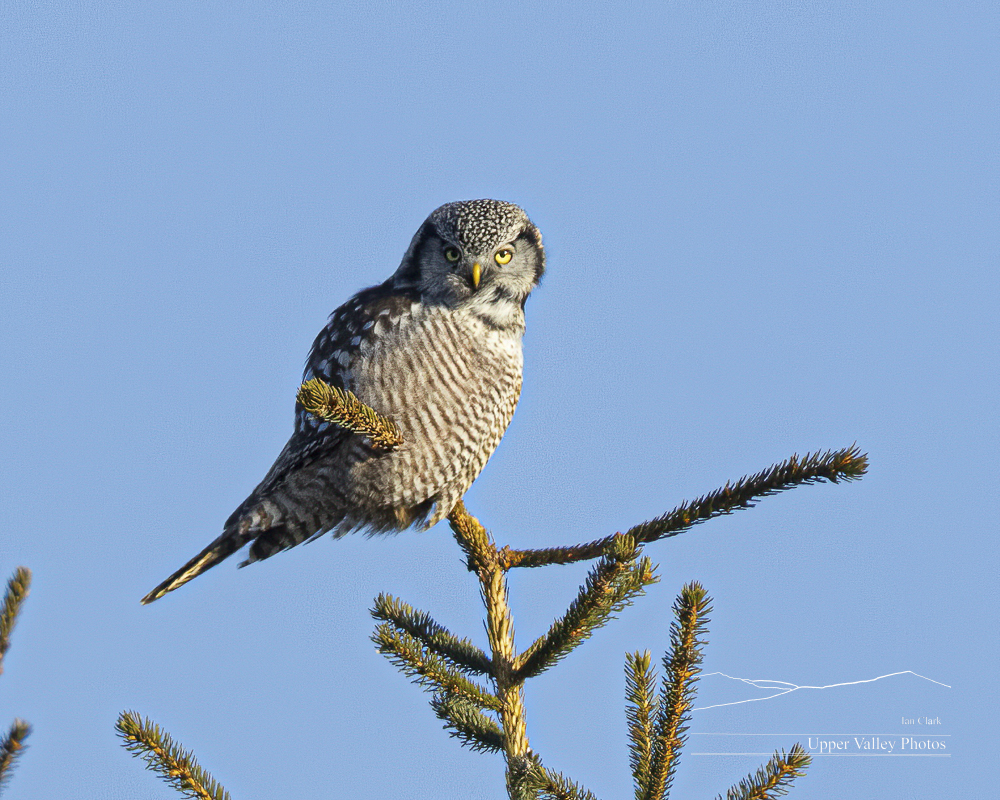

Northern Hawk Owl
The Piermont, NH, Public Library will be hosting me to present my slideshow, An Uncommon Look at the Common Loon, next Sunday, March 3, at 2 p.m. in the Old Church Building in Piermont. That’s right across Route 10 from the Library, not far south of the Route 10 and 25 intersection. Free and everyone welcome.
Northern hawk owls are small owls that live in the boreal forest, mostly north of the US. They’re occasional visitors to New England. I’ve heard of two in New England this winter. One has been persisting in Pittsburg, NH for the last couple of weeks. I went up to visit last Sunday.
Northern hawk owls are daytime hunters. Many owls have ears that are asymmetrical – they’re a bit offset from center on their heads. This allows them to pinpoint noises and allow them to hunt by ear. Northern hawk owls have symmetrical ears which lessen their ability to hunt by ear. They behave more like hawks and use exceptional eyesight – they seem to be able to see small rodents at half a mile. This means they’re out and about during the day, making photography much easier.
Easier, not easy. The owl visiting New Hampshire seems to prefer telephone poles and wires for perches – hardly photogenic.

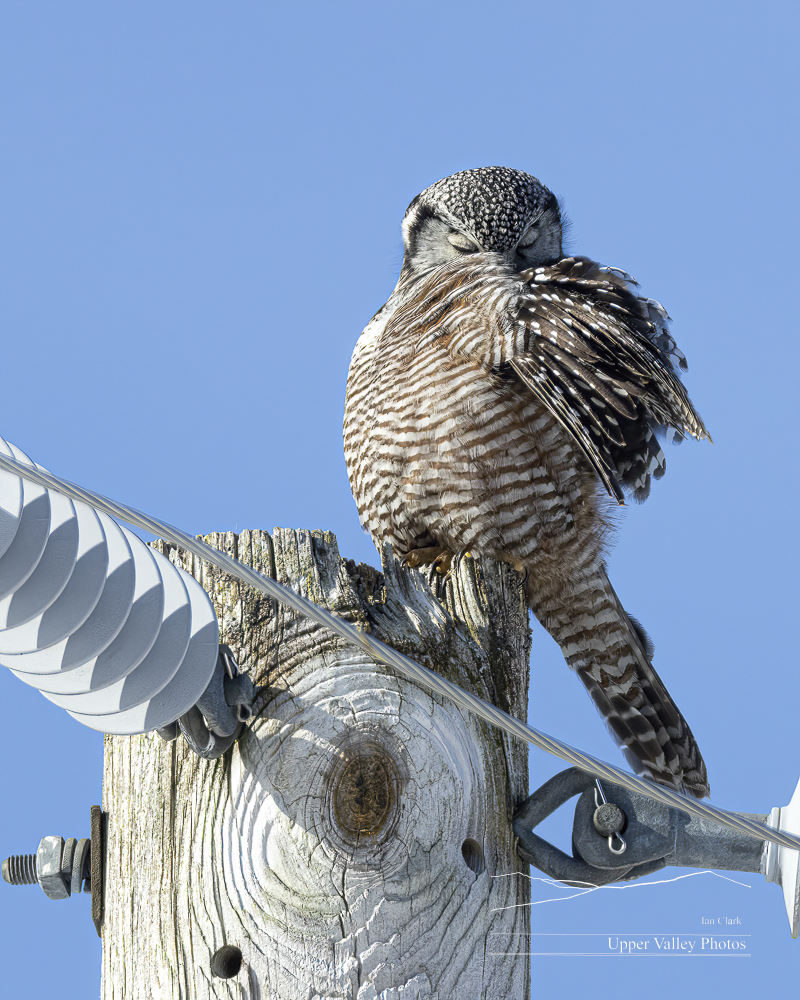
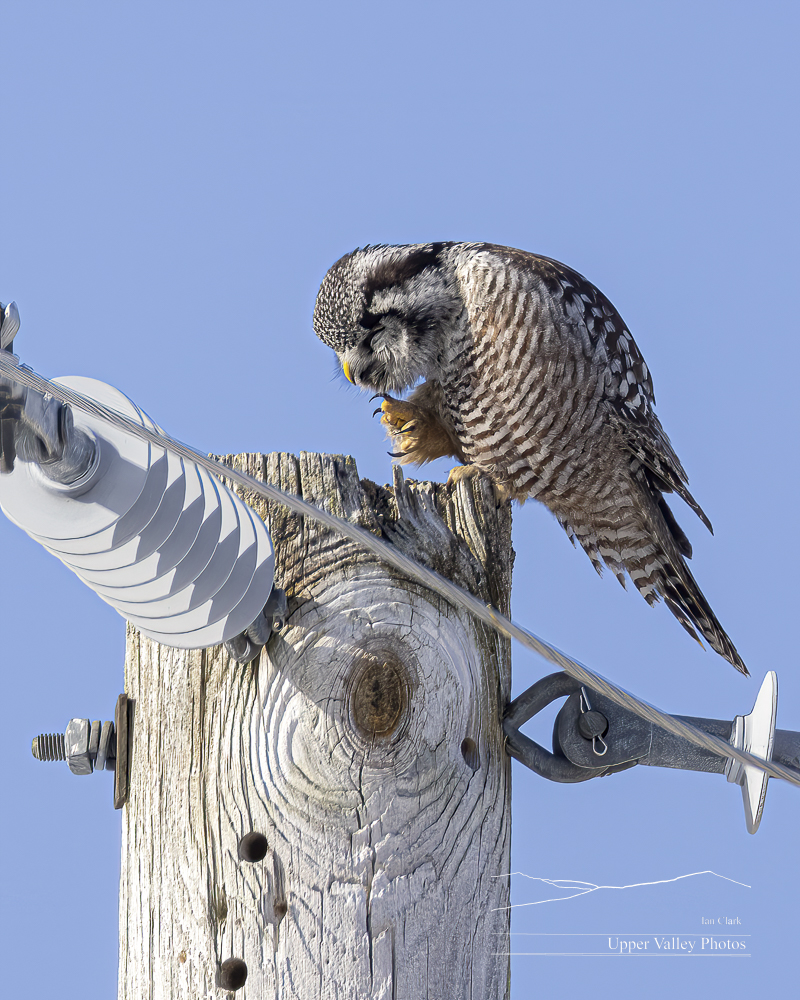
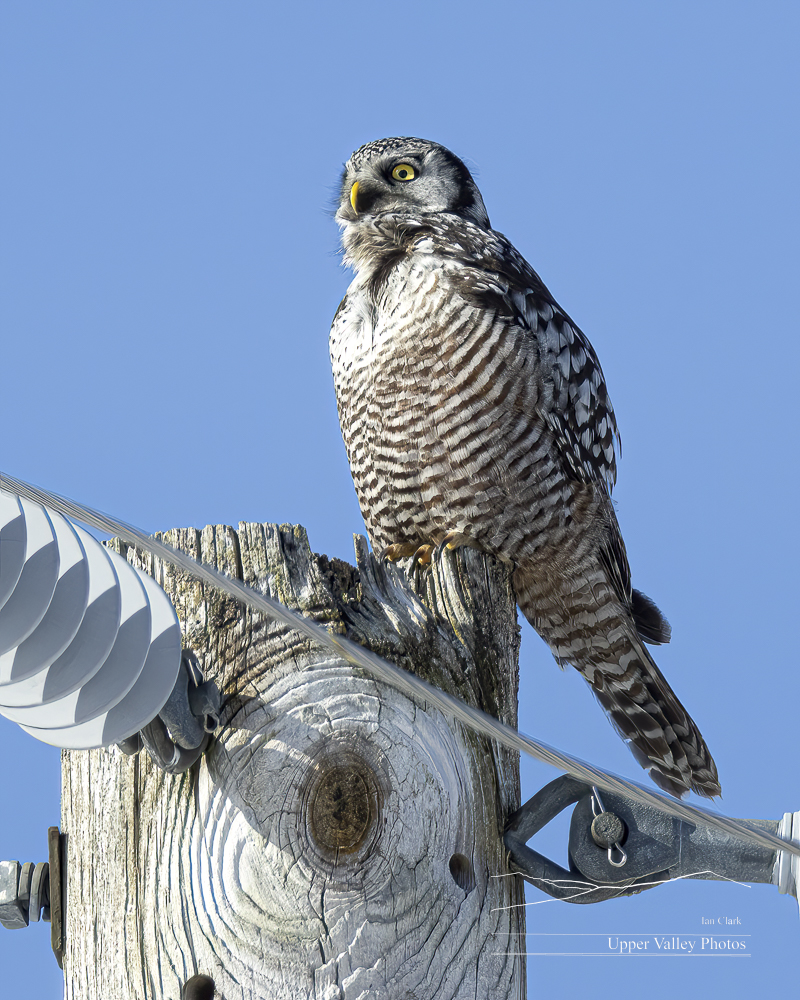





There were a couple flights of ducks along the river in Pittsburg. And, the bluebirds have been busy inspecting our bird boxes, we’re hopeful we’ll host them again this spring.
Upcoming Events
I hope everyone had a wonderful Thanksgiving. Just a quick update to let you know about a couple upcoming evenings.
I’ve got a slideshow of great loon photos, An Uncommon Look at the Common Loon. The Walker Lecture Series will be hosting me in Concord on Wednesday, November 29, 2023, at 7:30 (I’m the second speaker, I should start closer to 8:30). Free and everyone welcome.
All the details on Walker’s site: https://www.walkerlecture.org/schedule.
And, I still have some 2024 Wildlife Calendars available.
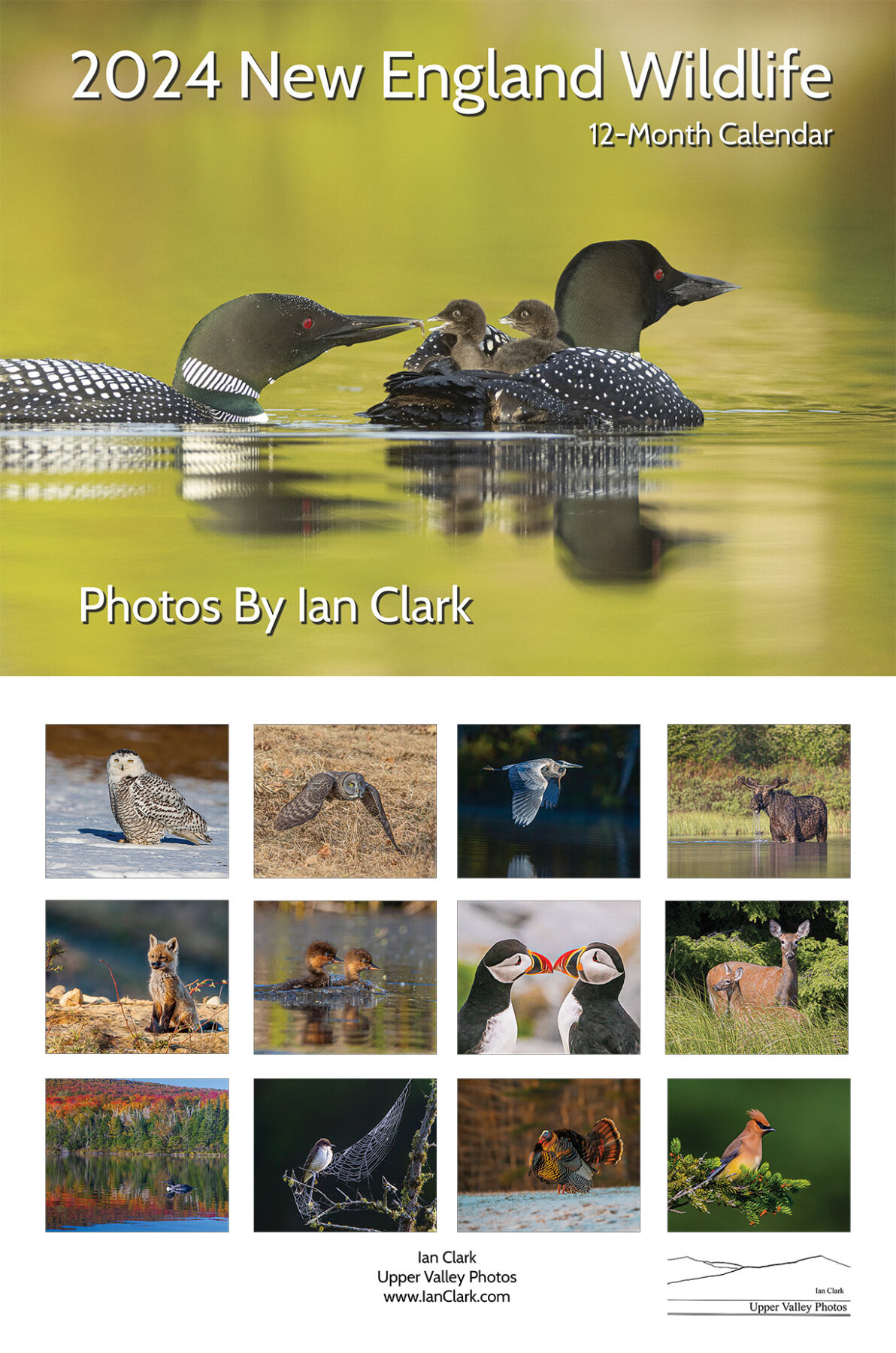
Last, I’ll be up at the Burklyn Arts Council’s Craft Fair in St. Johnsbury next Saturday. I’ll have calendars, lots of note cards and prints, large and small. Stop by and say hello.
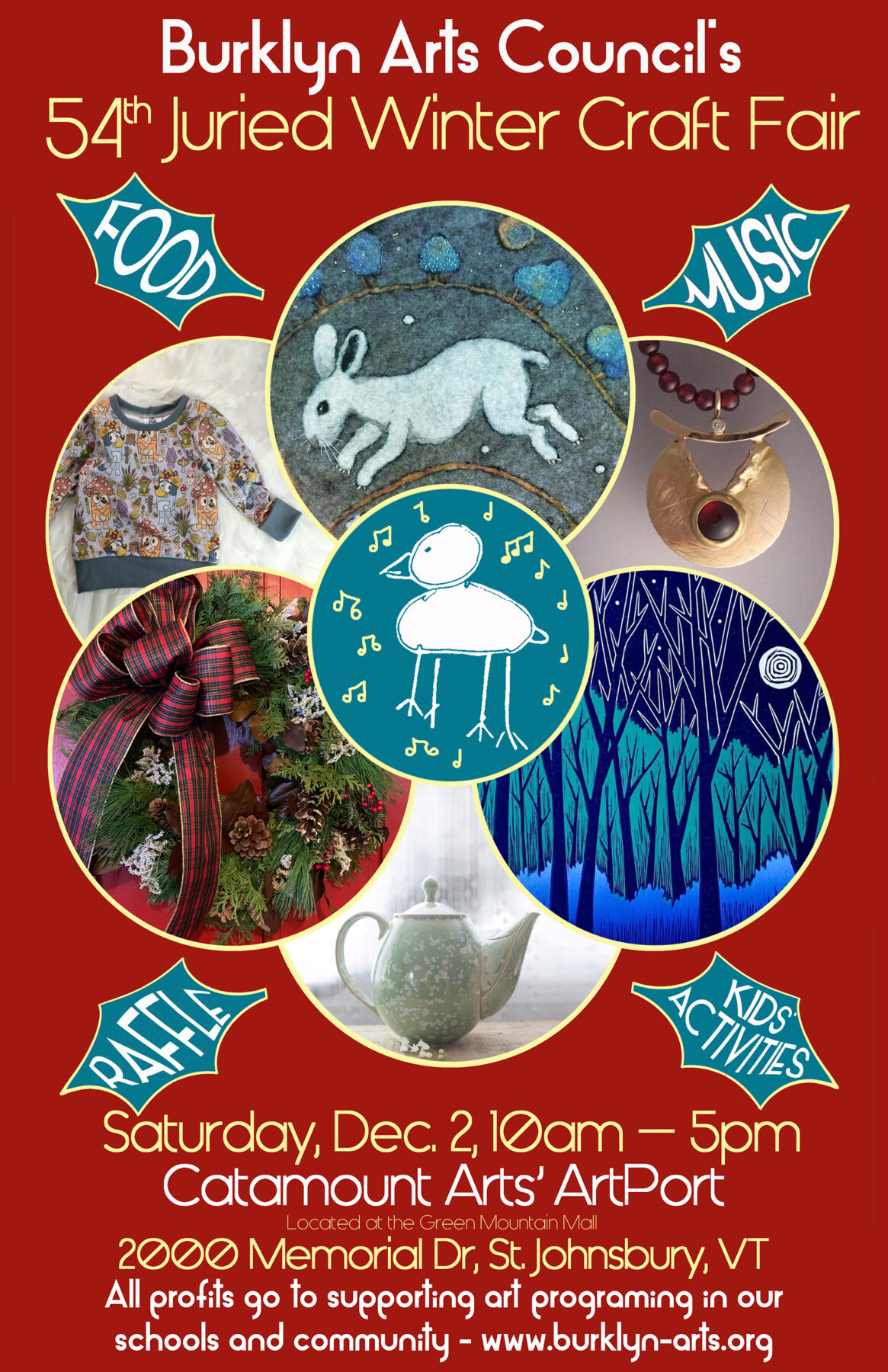
One Loon Chick Left
Thursday morning, I headed up to check on the Eastons. When I las visited, the parents weren’t on the pond and the chicks were practicing takeoffs, but couldn’t quite get airborne.
The adults usually stick around this pond until the last week of September, with the chicks departing in the first week of October. Looks like the parents took an early leave this year, with one chick following.
The chick on the pond was foraging lazily when I arrived. I watched for a time before hearing a loon calling overhead. I was expecting one of our parents to drop in to check on things, but the loon appeared to fly over.
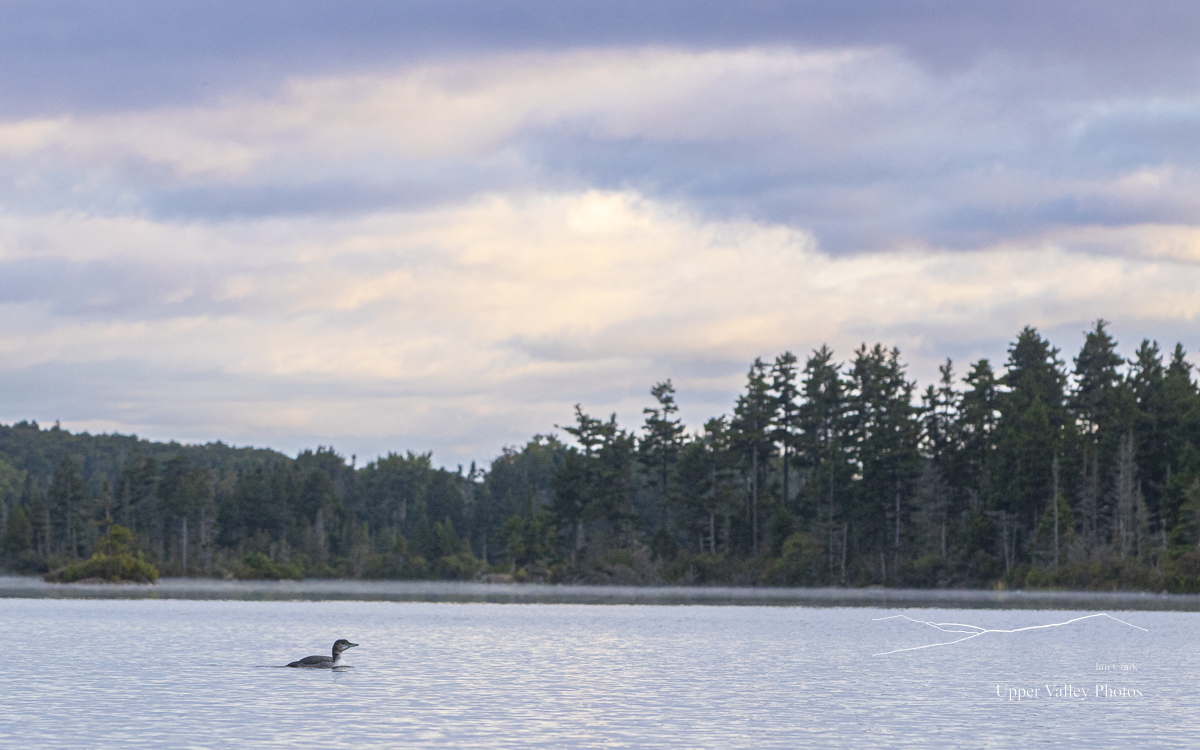
After a time, another loon was calling overhead – or maybe the same one that flew over before. Our chick tried to call. He’s first attempt sounded like someone stepped on a goose. But he quickly found his voice and yodeled.
That’s interesting for a couple reasons. First, only male loons yodel, so we know he’s a he. Second, that’s the response of an adult loon to an intruder. No longer is our chick hiding to protect himself.
The intruder landed at the far end of the pond. The exchanged wails and yodels for a time.
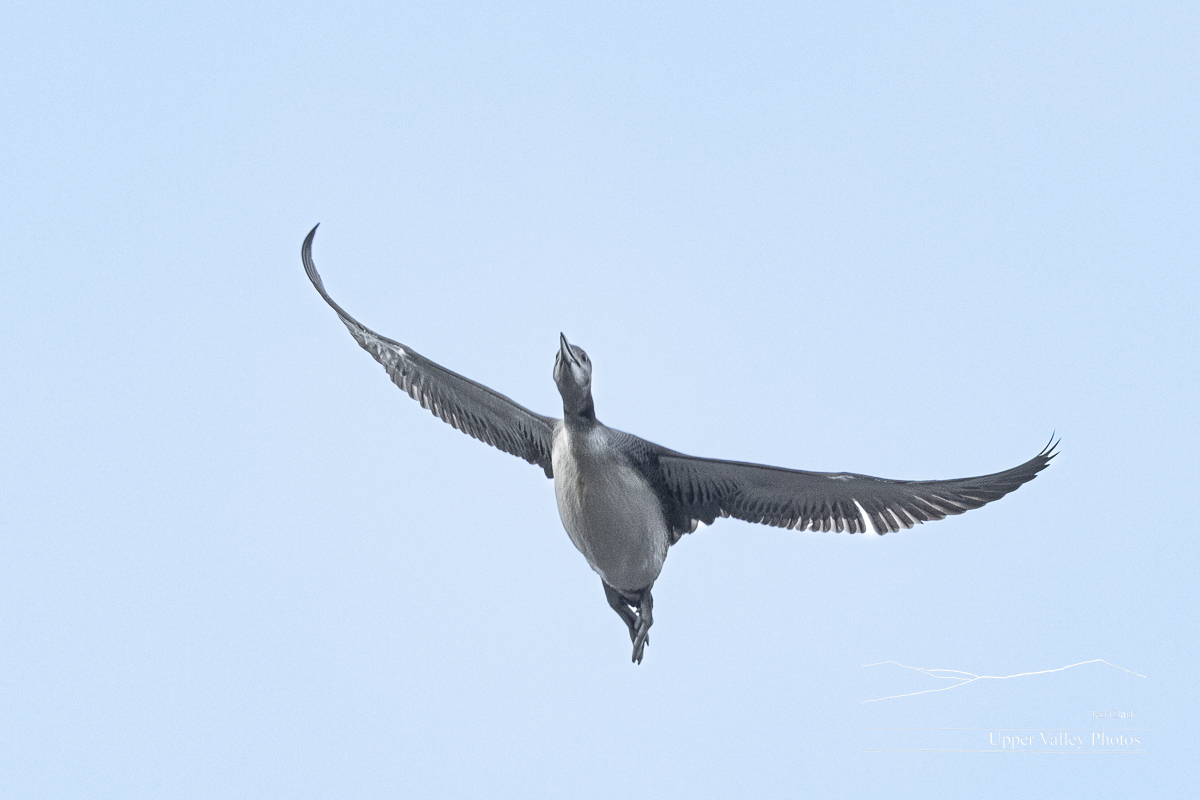
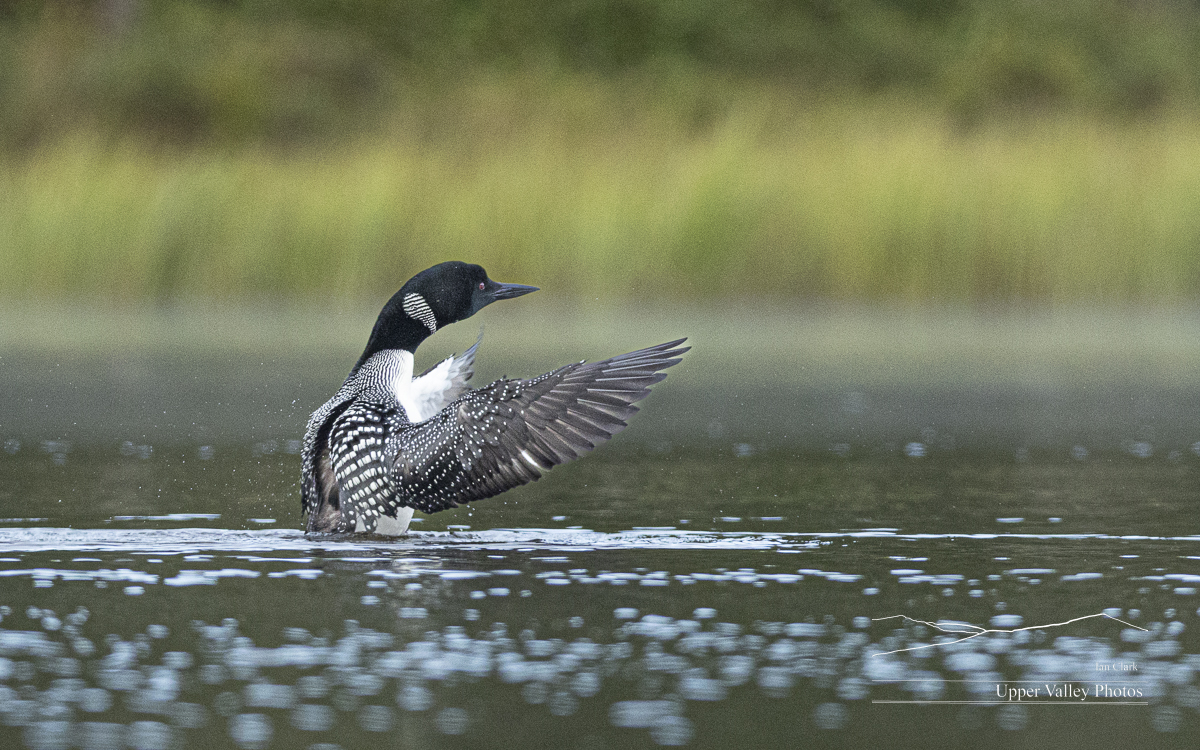
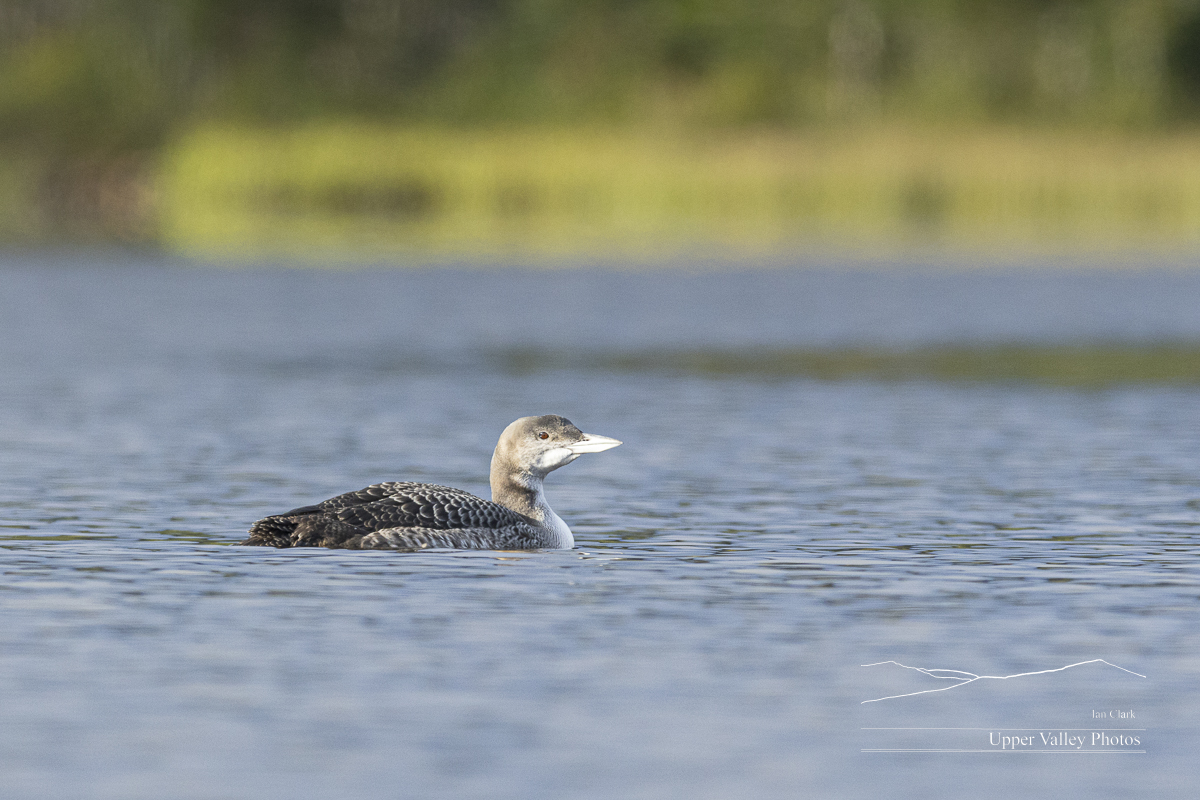
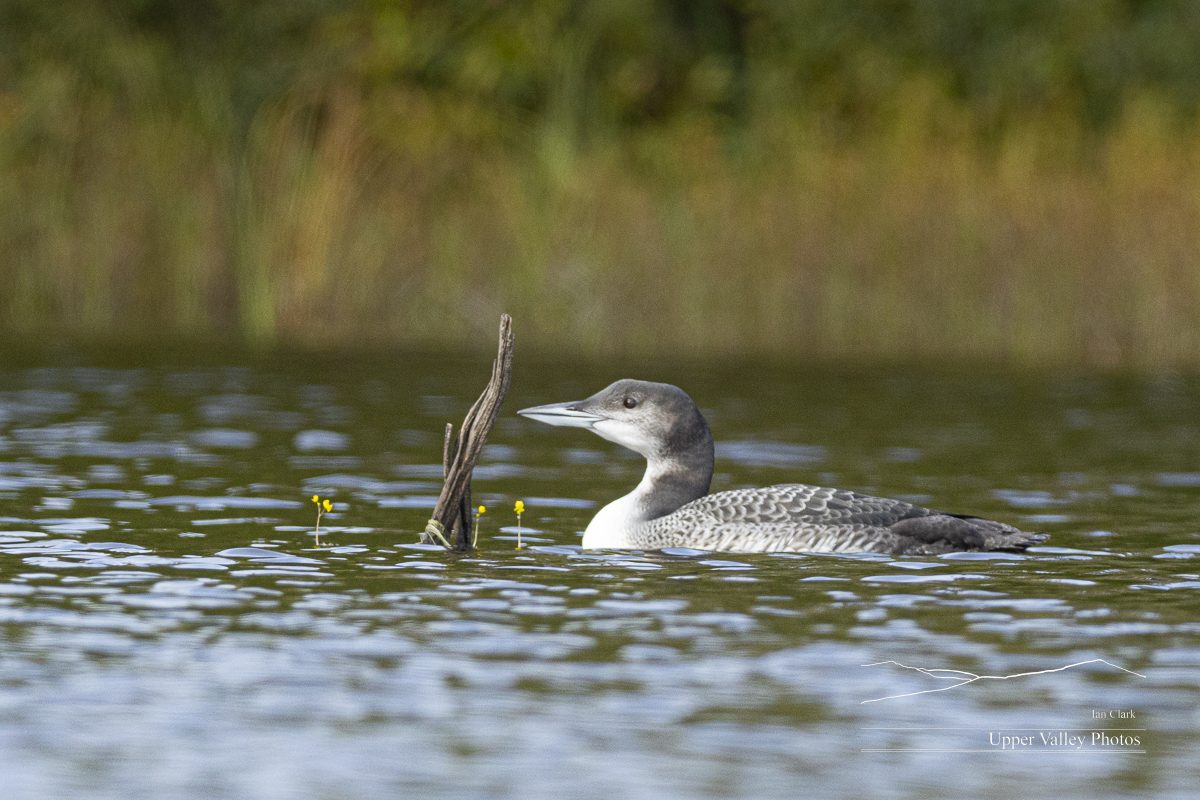
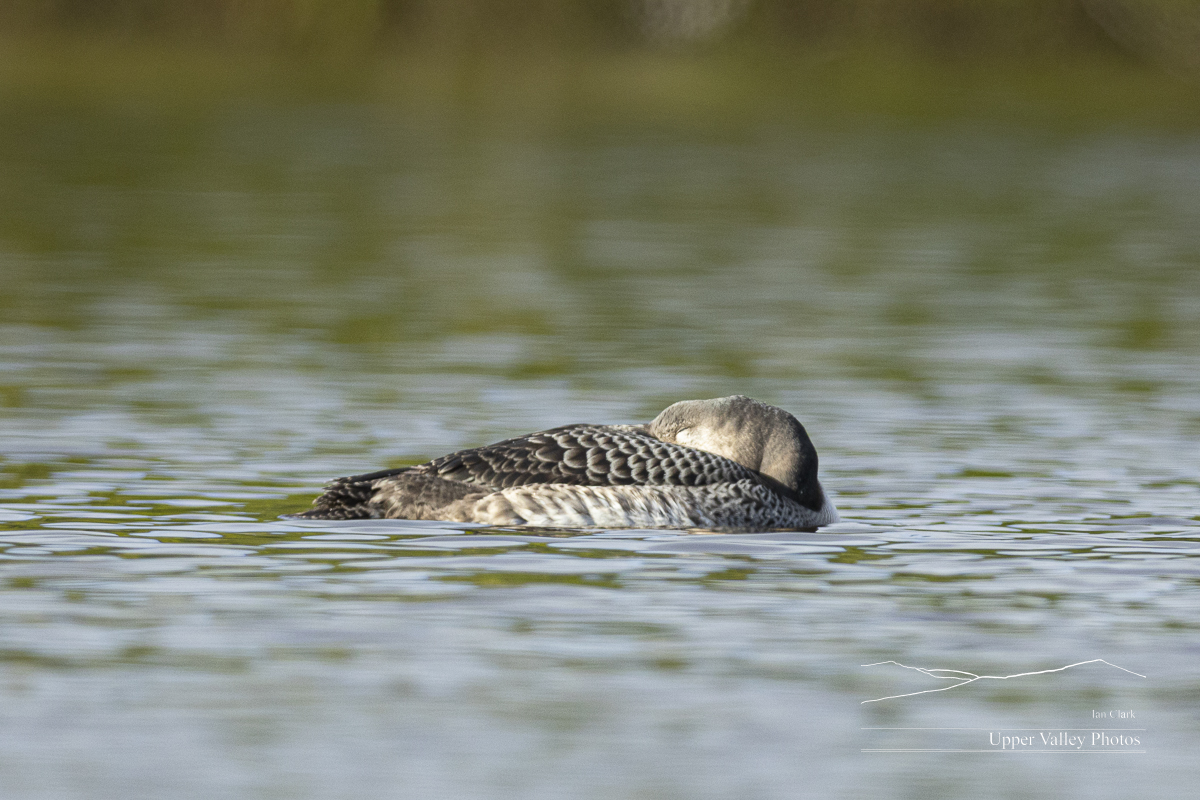

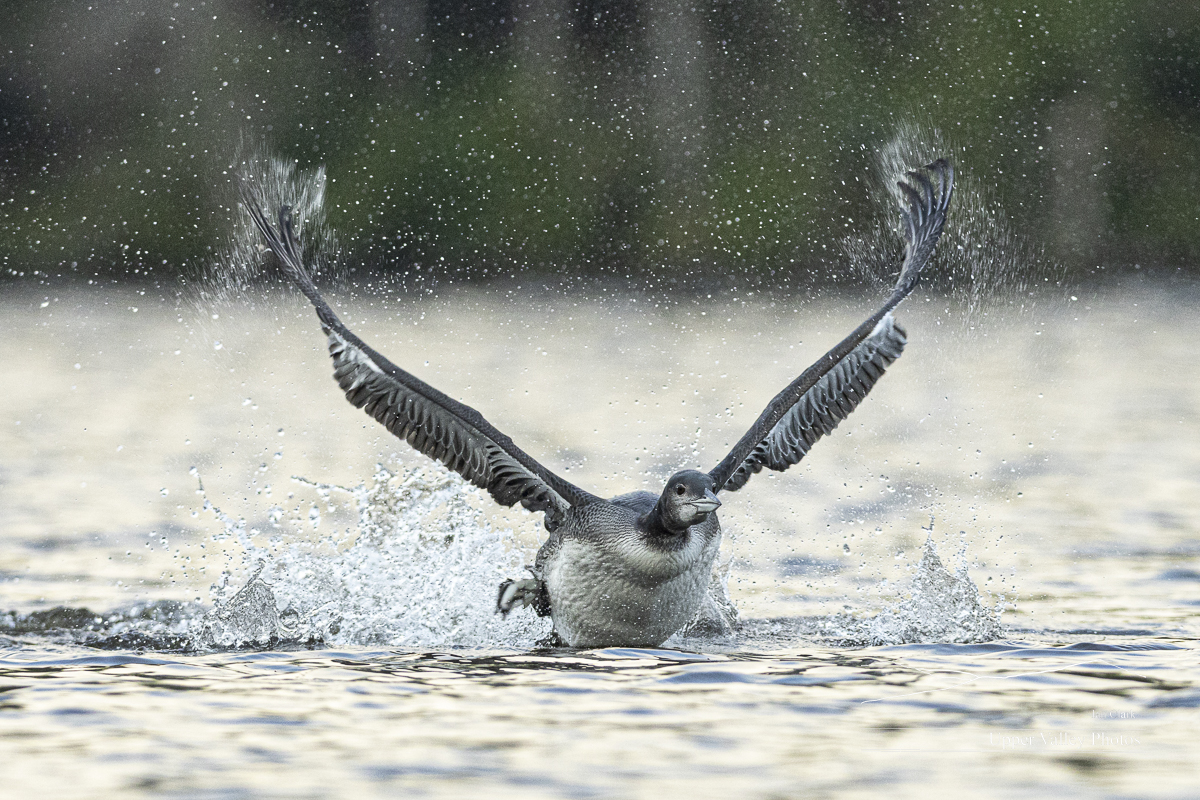
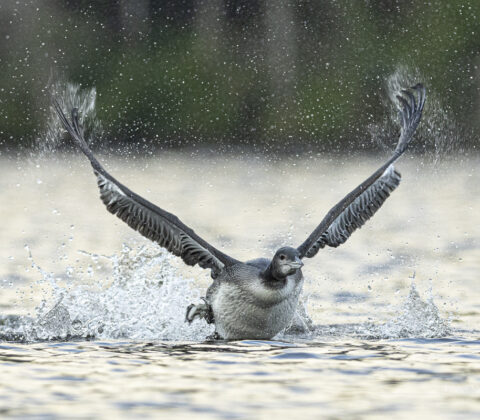
Learning to Fly, Checking in on the Loons
Our loon chicks are now 12 weeks old. They’re almost ready to take care of themselves. This week, they’ve been practicing adult calls, postures and they’re trying to fly. I was able to visit the Eastons twice since the last post.
I’ll be down at the Fall Crafts at Lyndhurst Show in Tarrytown, NY this Friday, Saturday and Sunday. Stop by to check out all the new images in prints and note cards. All the show details here.
Last Friday, the Eastons’ pond was above most of the fog at sunup. As I headed down the pond I met one chick coming up.
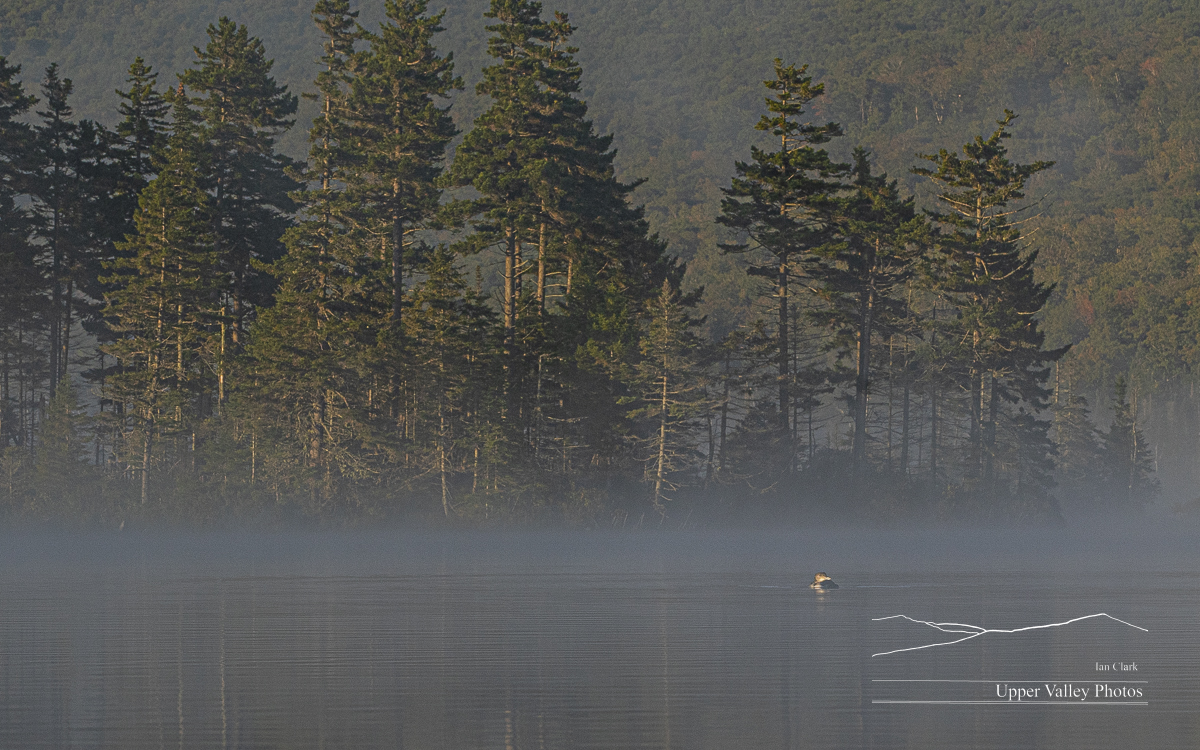
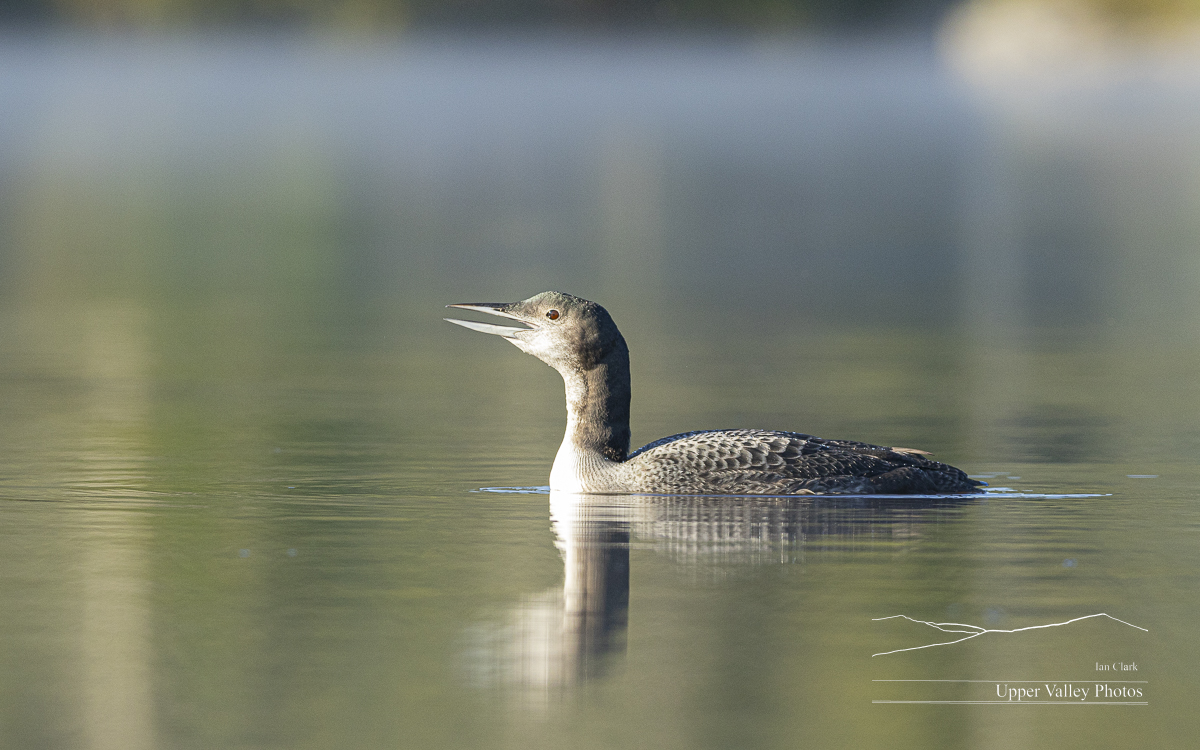
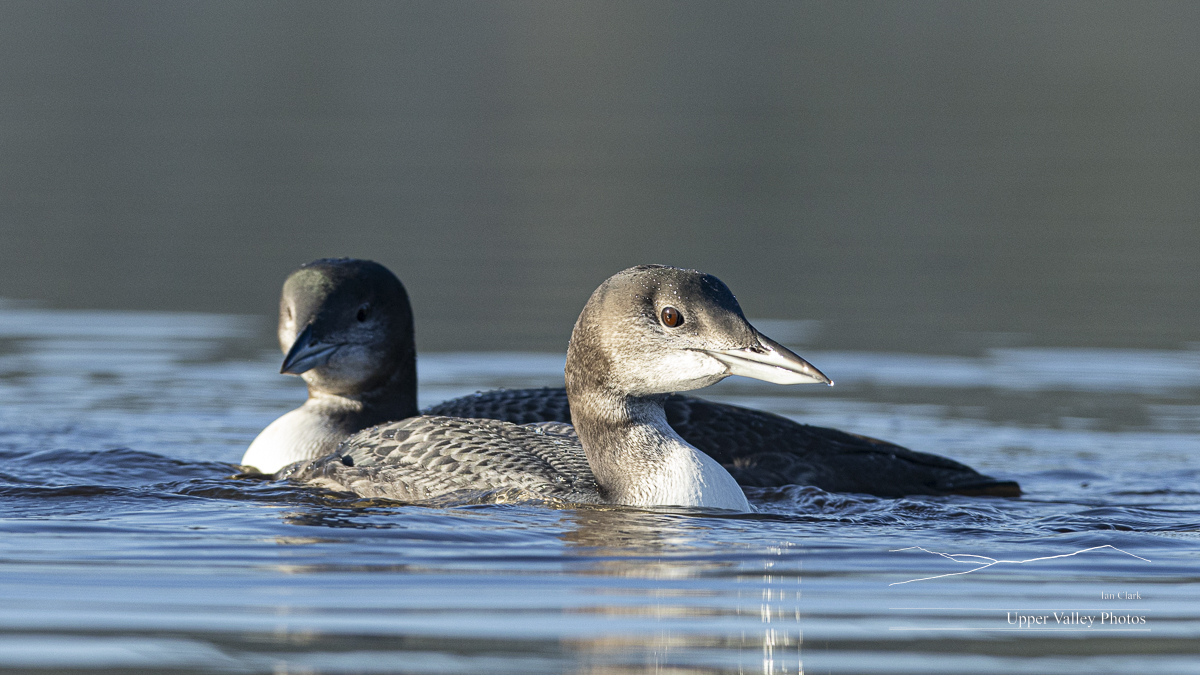
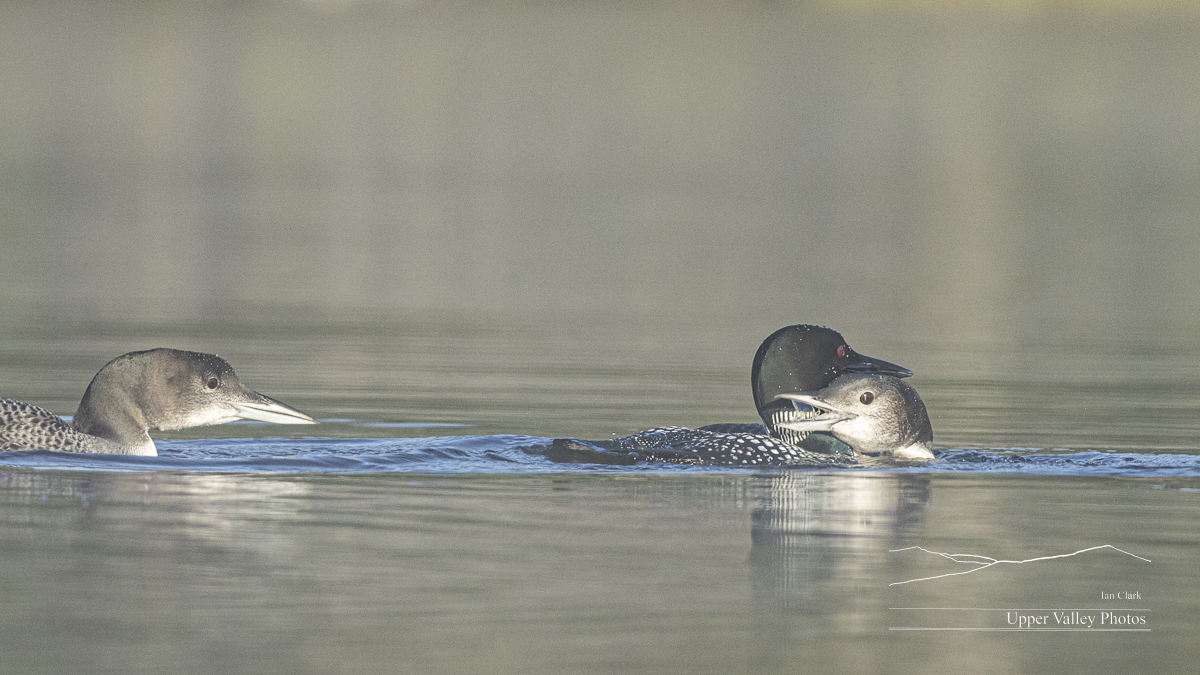
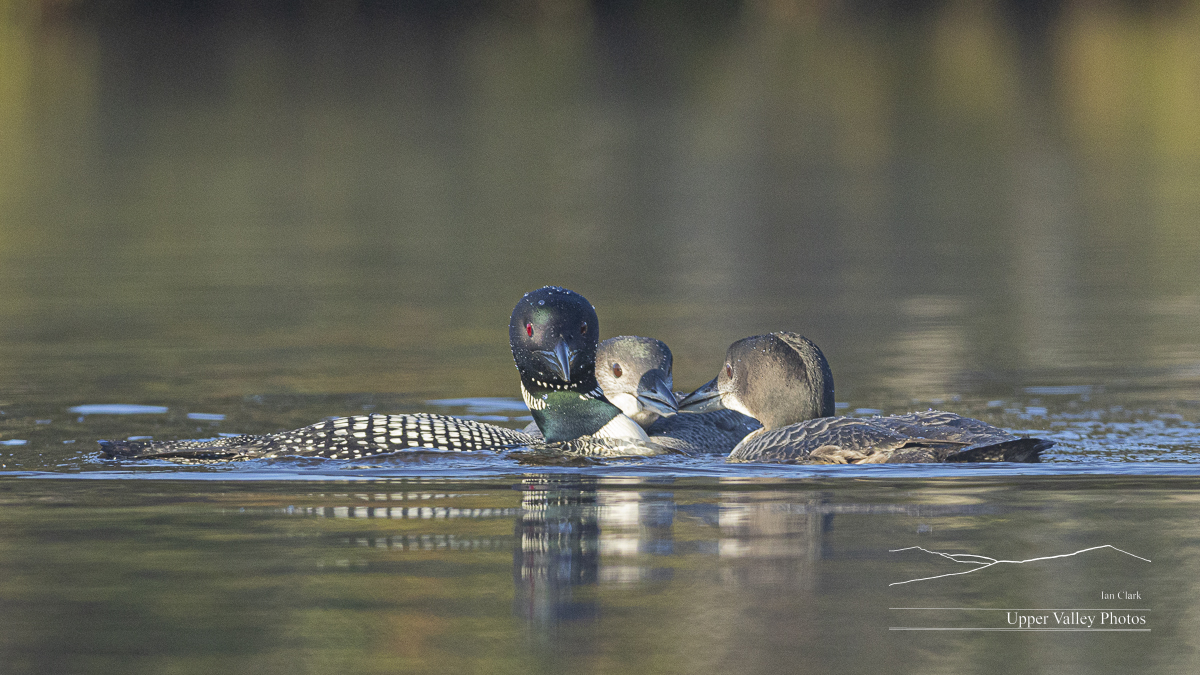


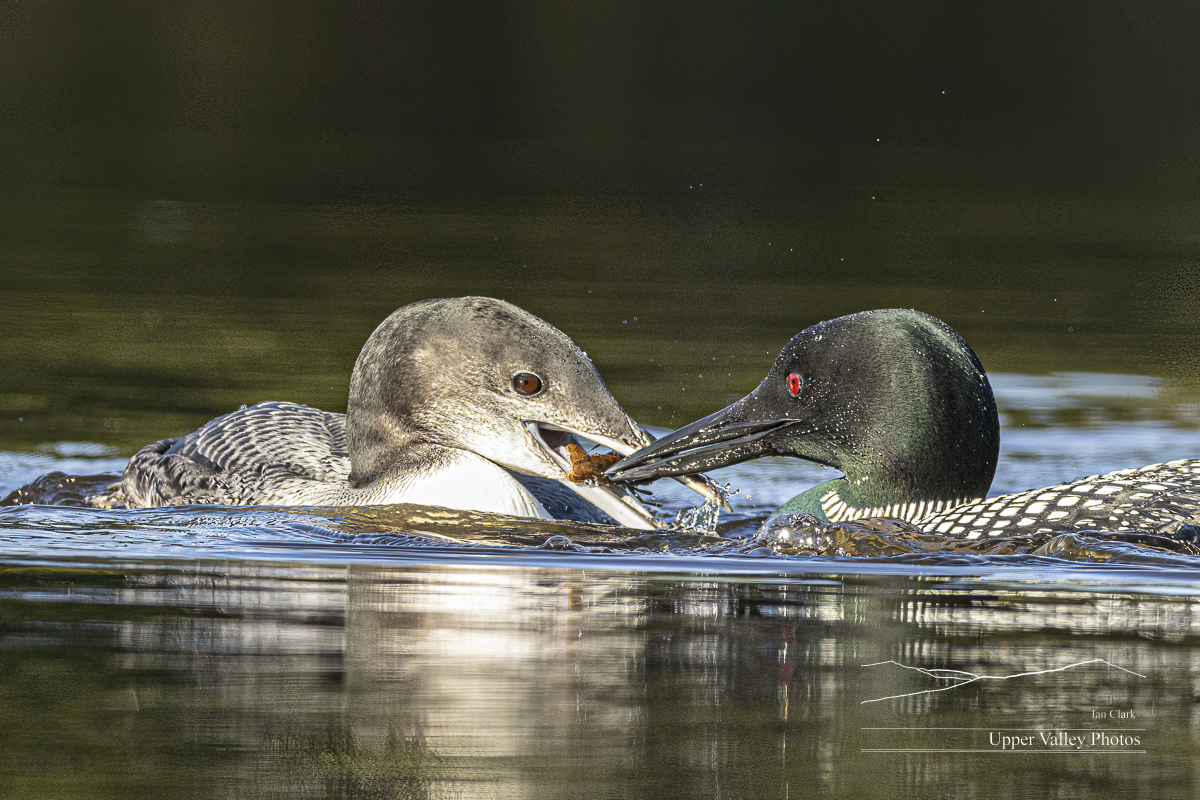
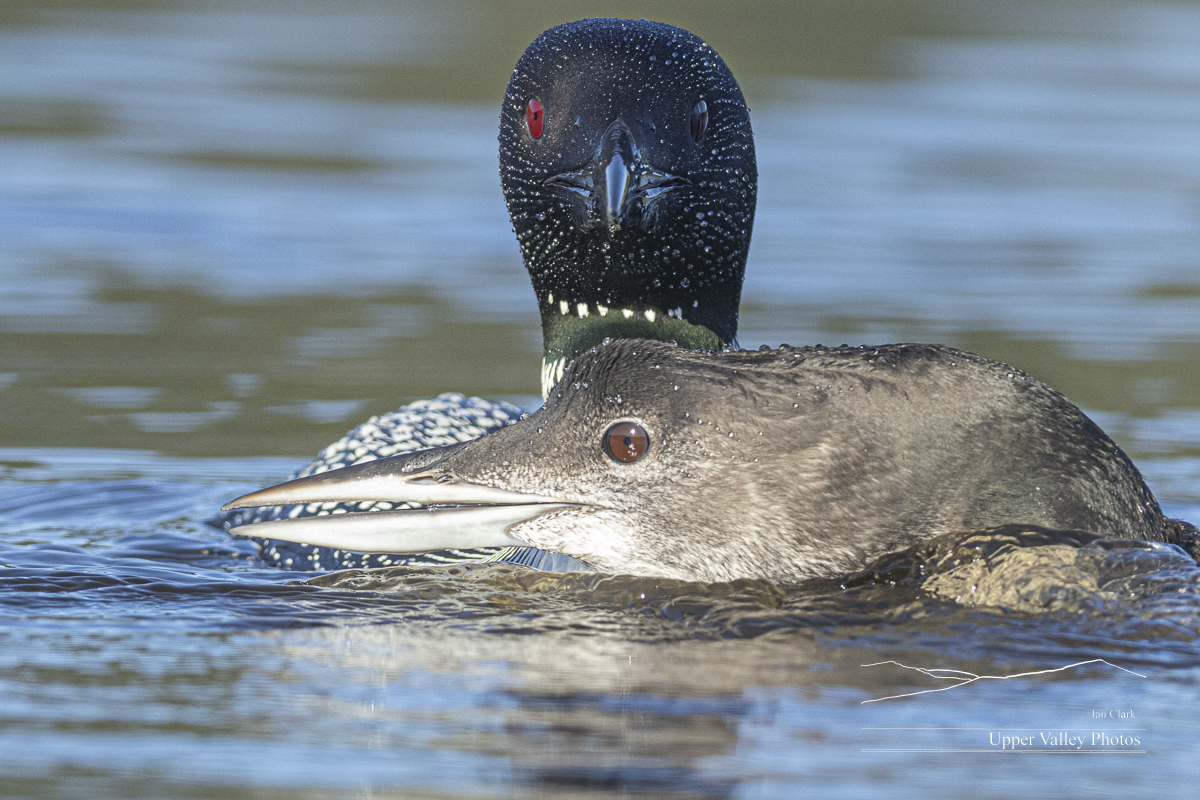
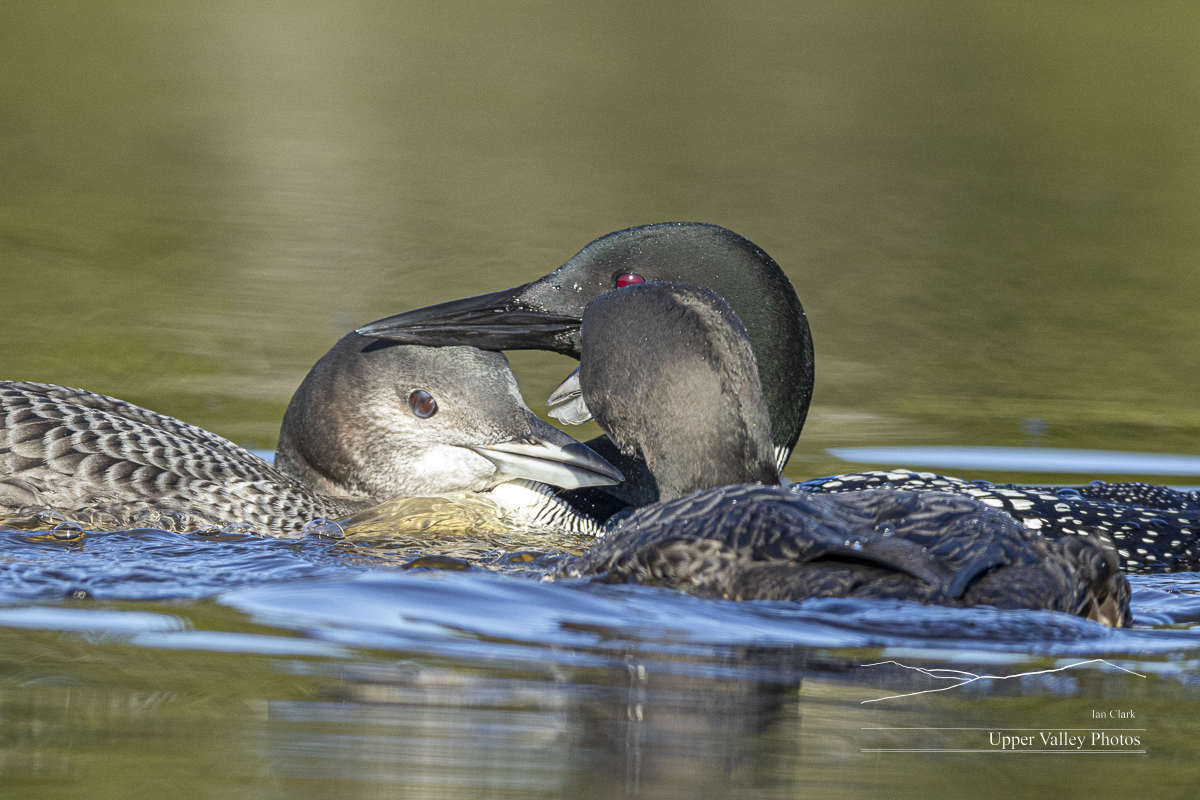
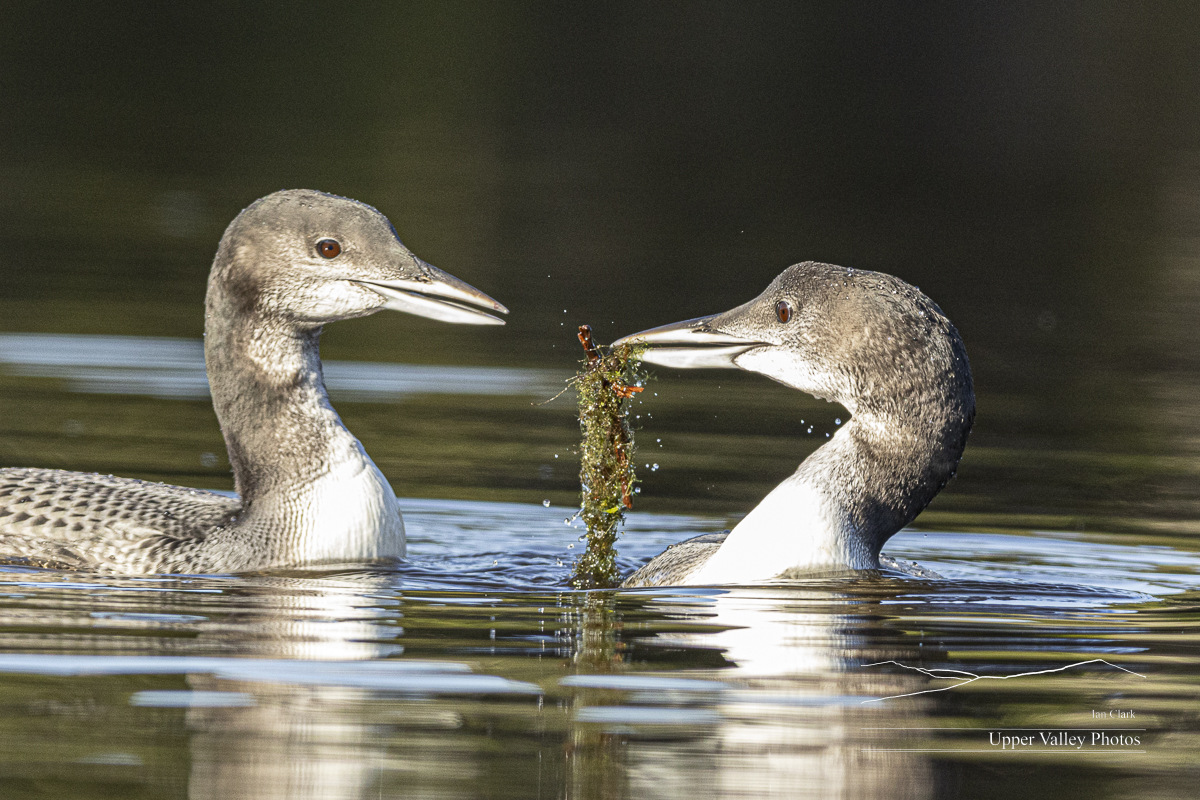
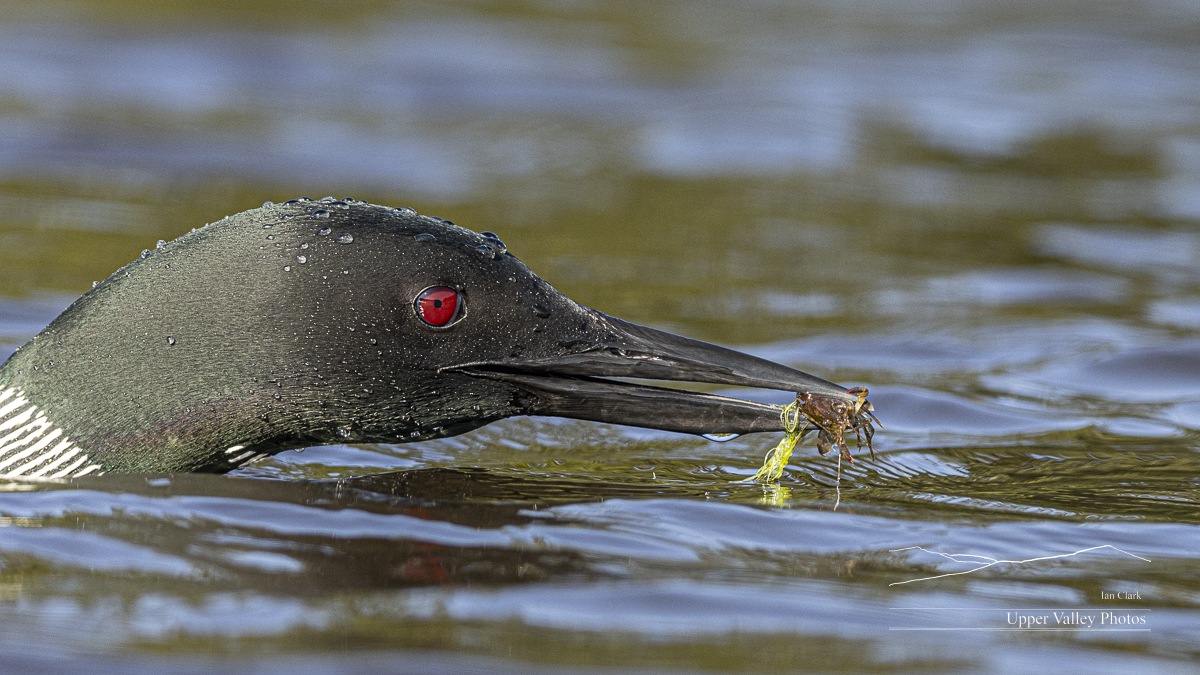
I returned to the pond Tuesday morning. The pond was mostly above the fog again. Beautiful blue skies and the hills to the west were in full sunlight. The pond was stuck in the shadow of one stubborn thick cloud.
The chicks were alone on the pond, both parents were elsewhere. The chicks were foraging about two-thirds of a mile apart. Both successfully feeding themselves. As the sun came up, a breeze grew and the chicks took time to practice flying.
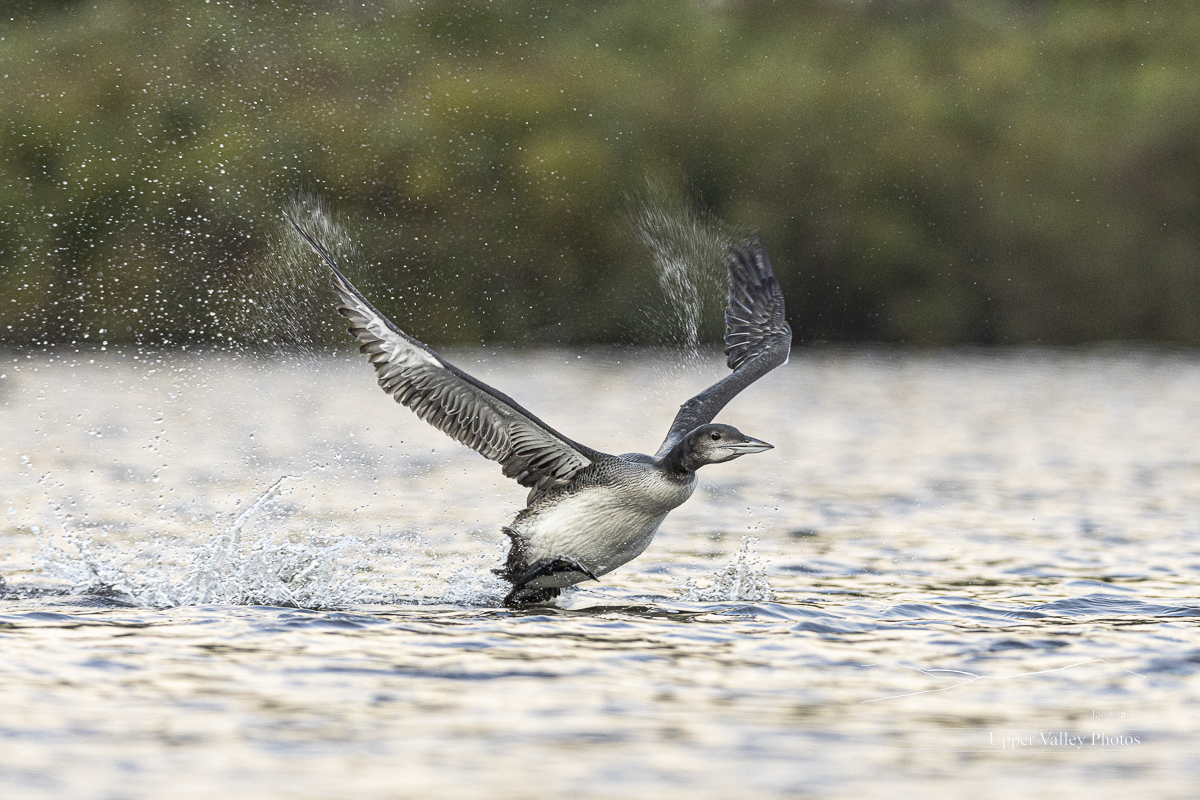
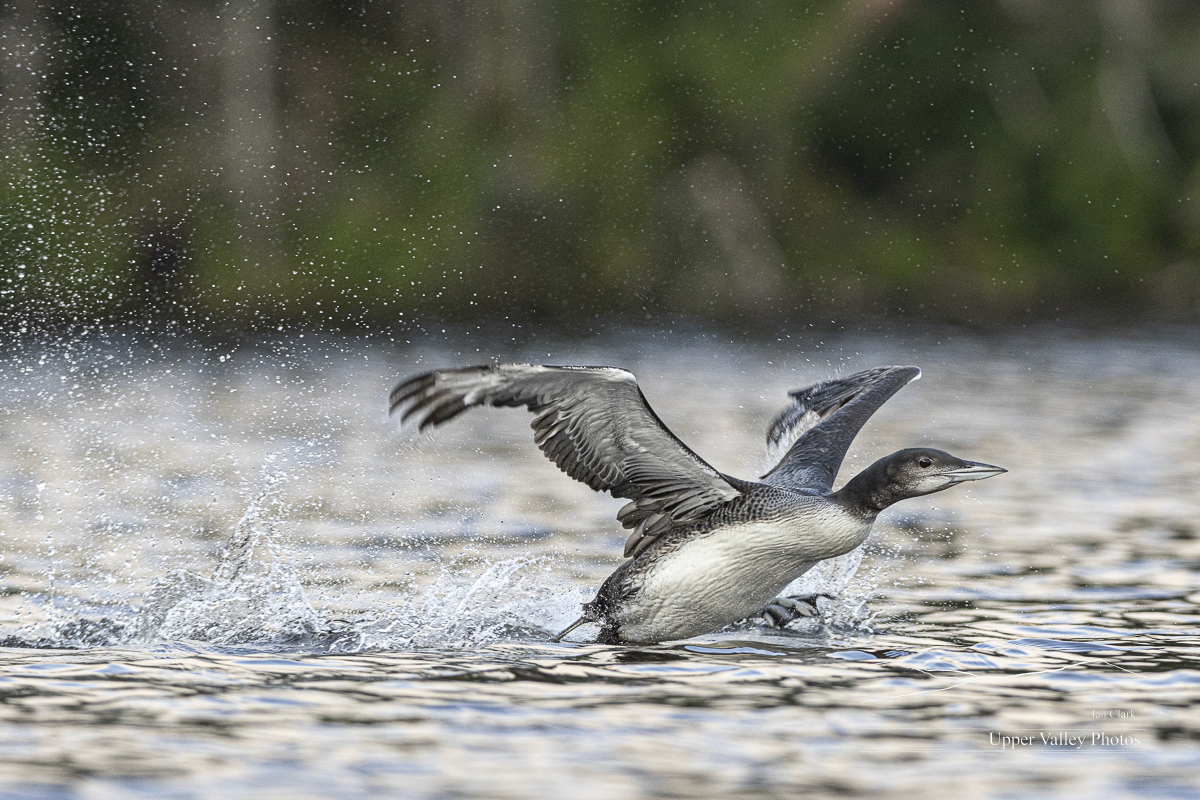

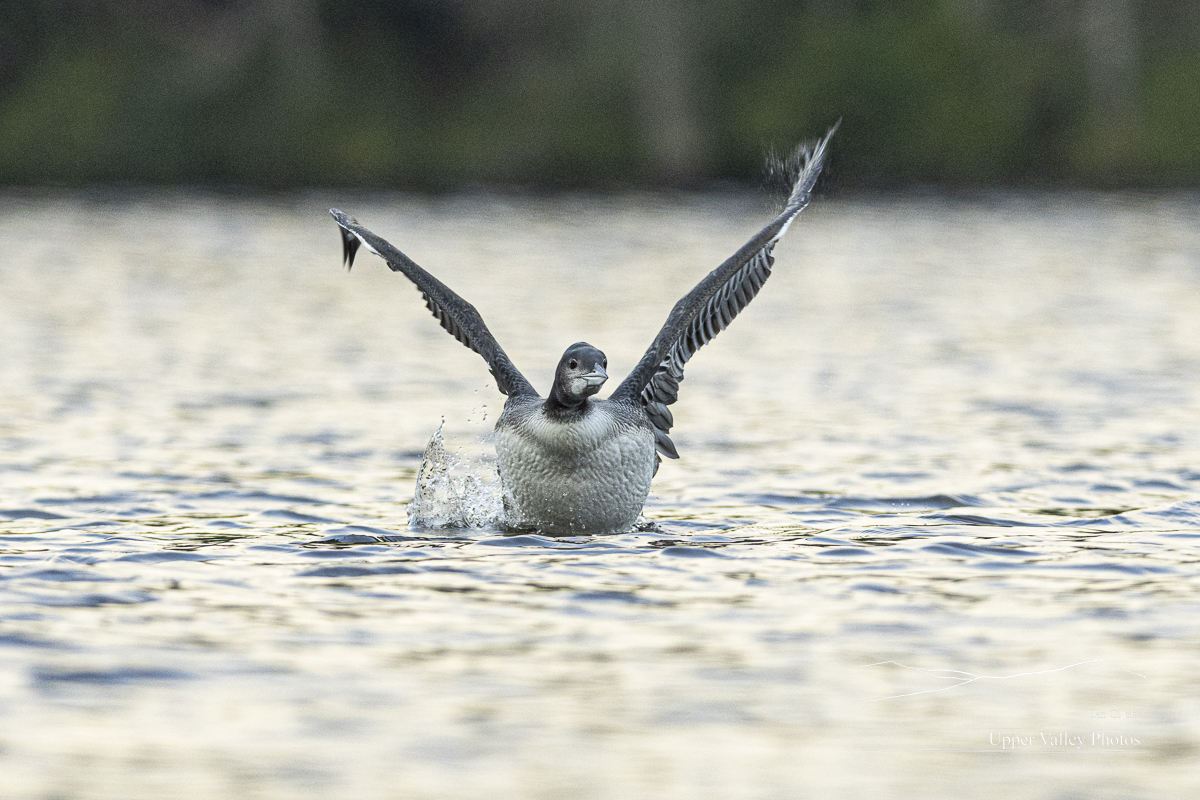
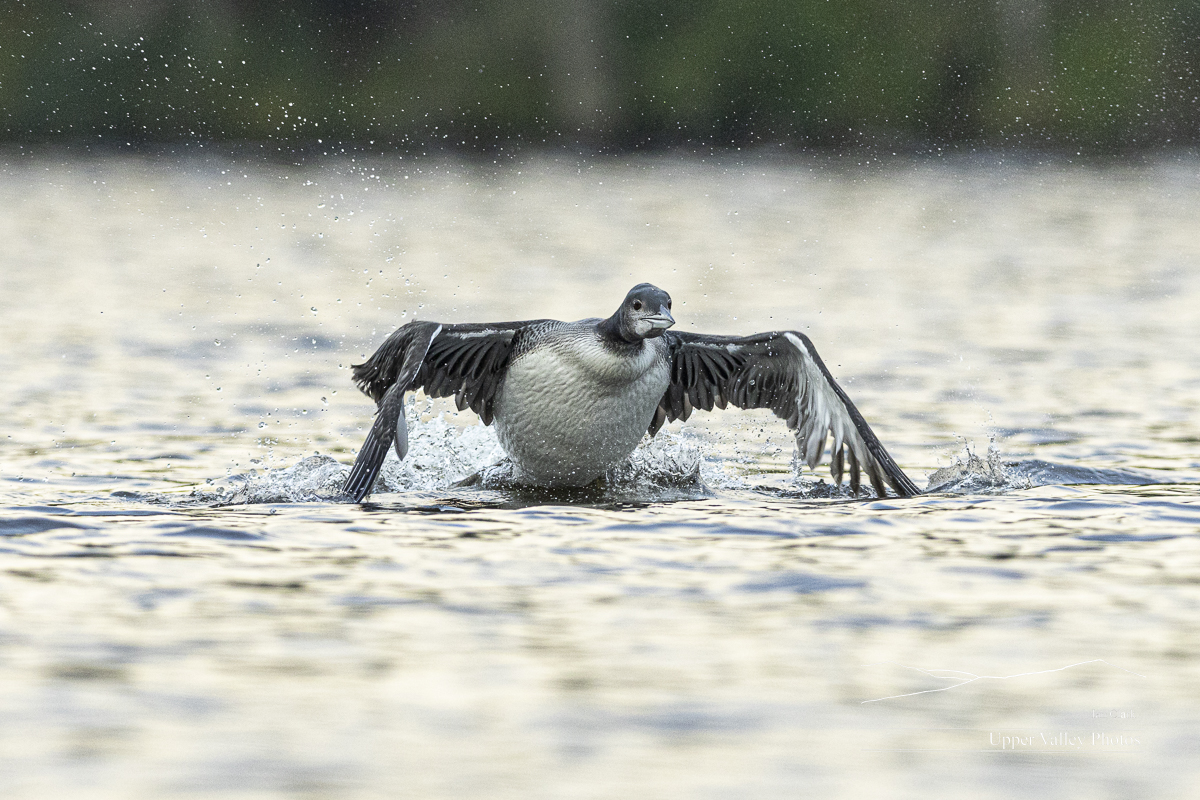


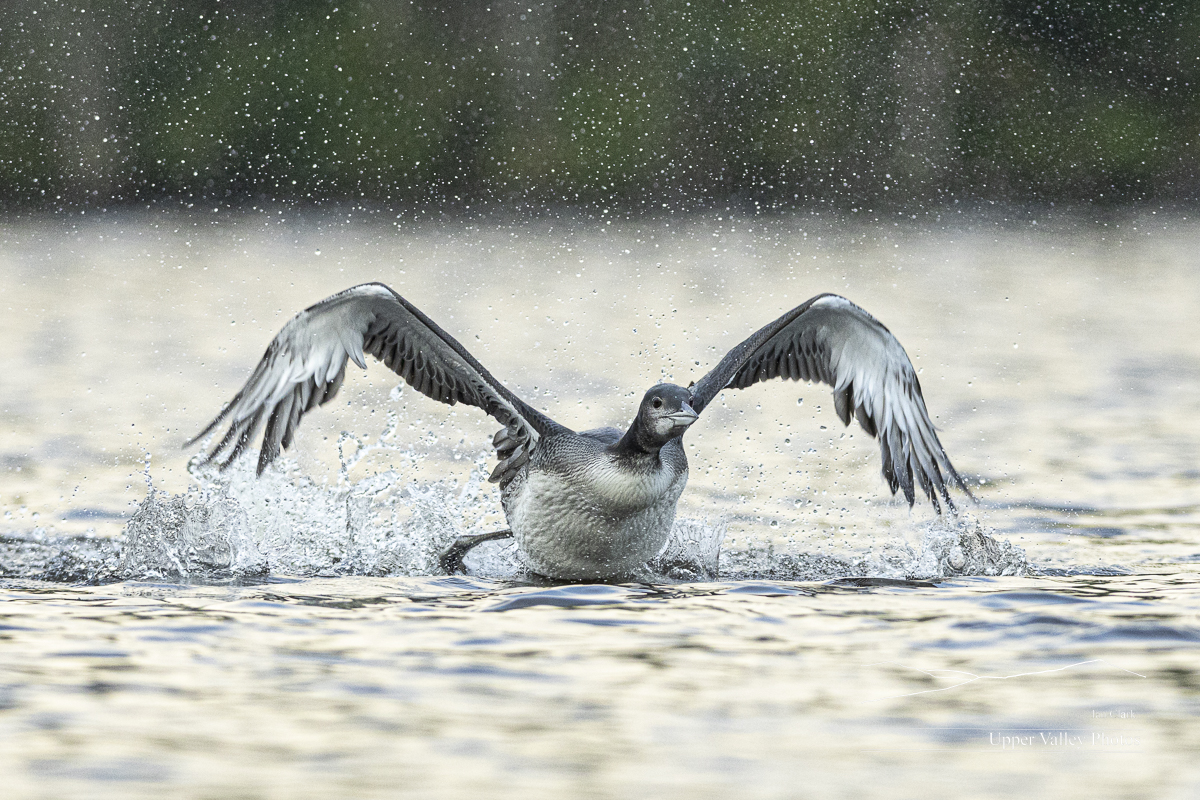
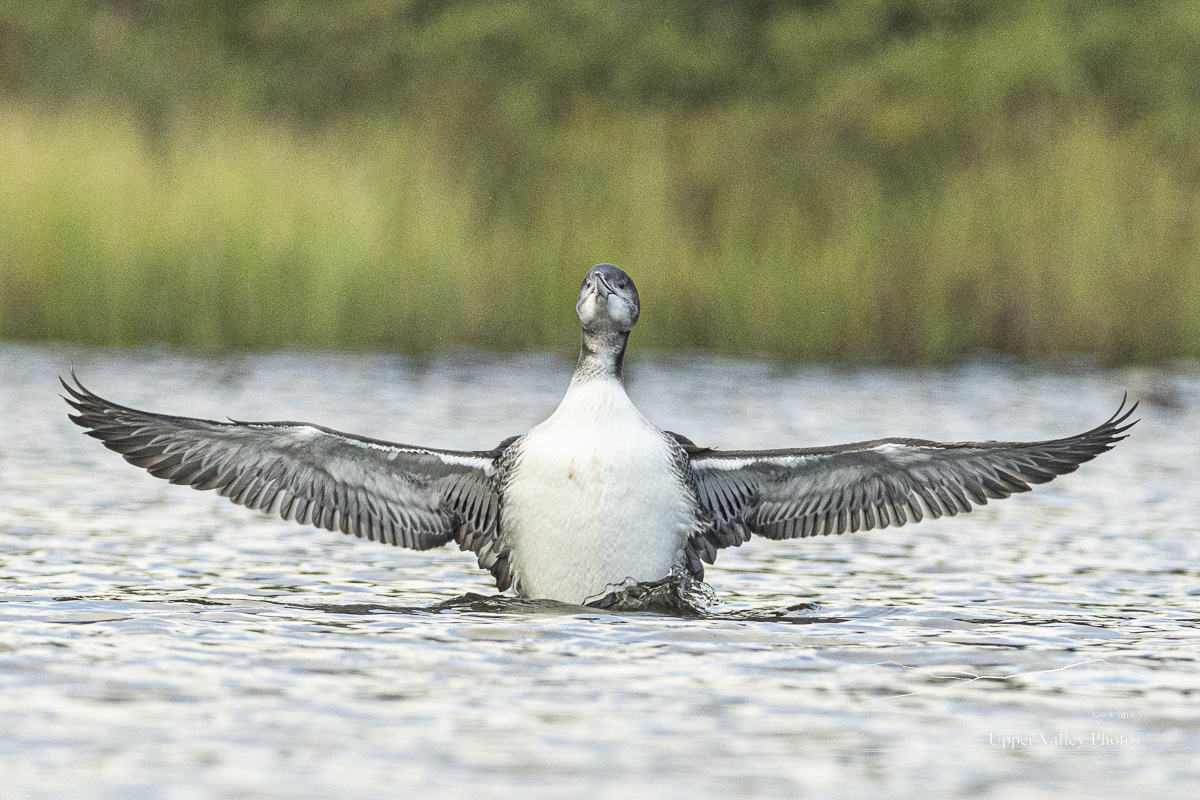
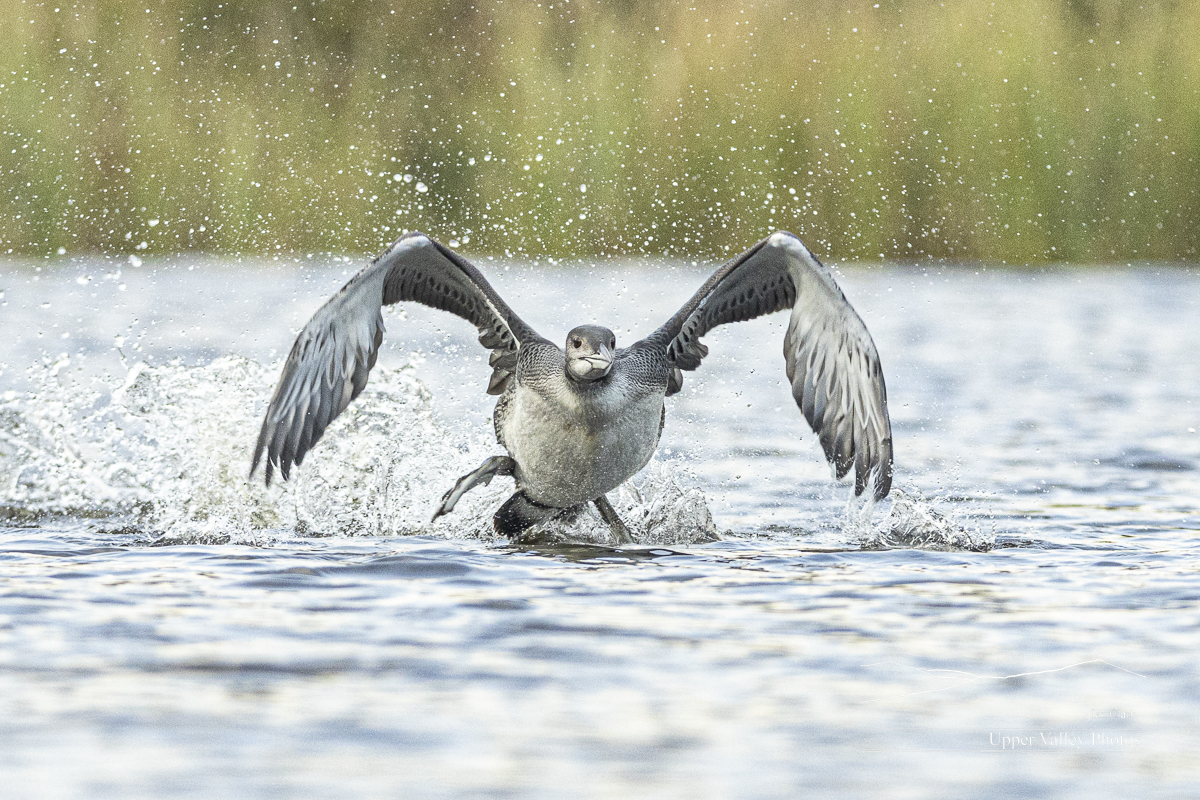


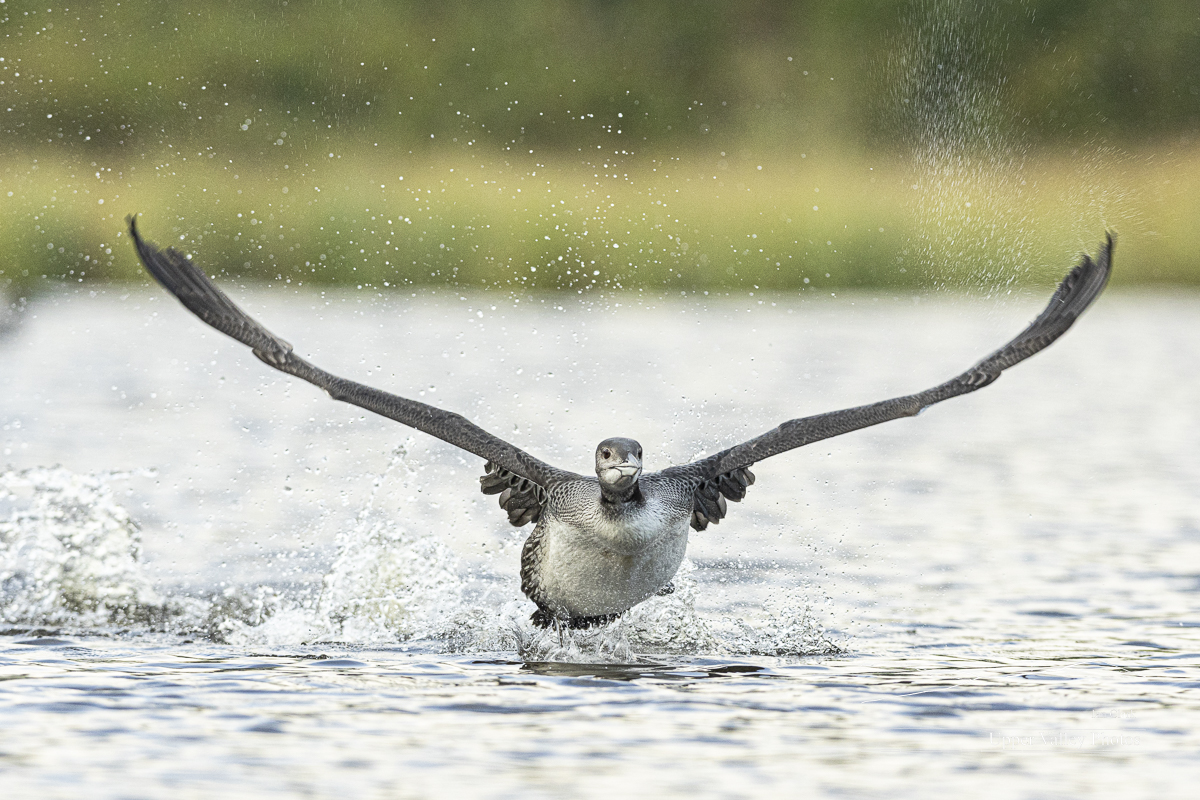
The Middletons appear to have scooted from their pond, they haven’t been spotted in almost a week. The Westons were doing well as of this past weekend. Both chicks are growing and getting independent. I’m hoping to get a chance to visit them before they head out.
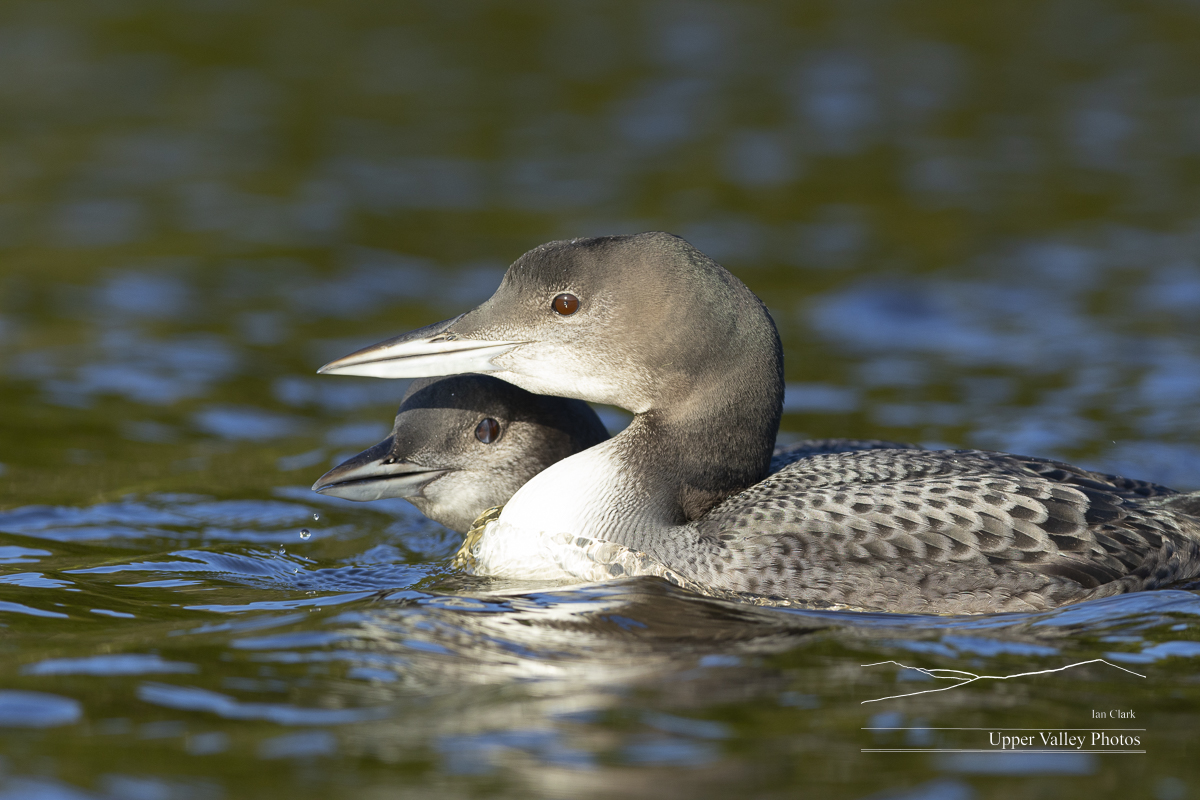

Loon Chicks at 10 Weeks
Monday morning there were stars above and a thick fog over the river in the valley below. I decided to risk a trip to visit the Eastons. Most of the trip to the pond was slow going through the fog. As I started to climb towards the pond, I rose back above the fog to find a beautiful morning.
Dad was foraging by himself near the boat launch, he paddled in close to hoot softly to me before returning to feasting on crayfish. Mom called a couple times while I was getting the boat in the water. This is the pond where Dad is banded, letting me tell who is who if I can see a leg.

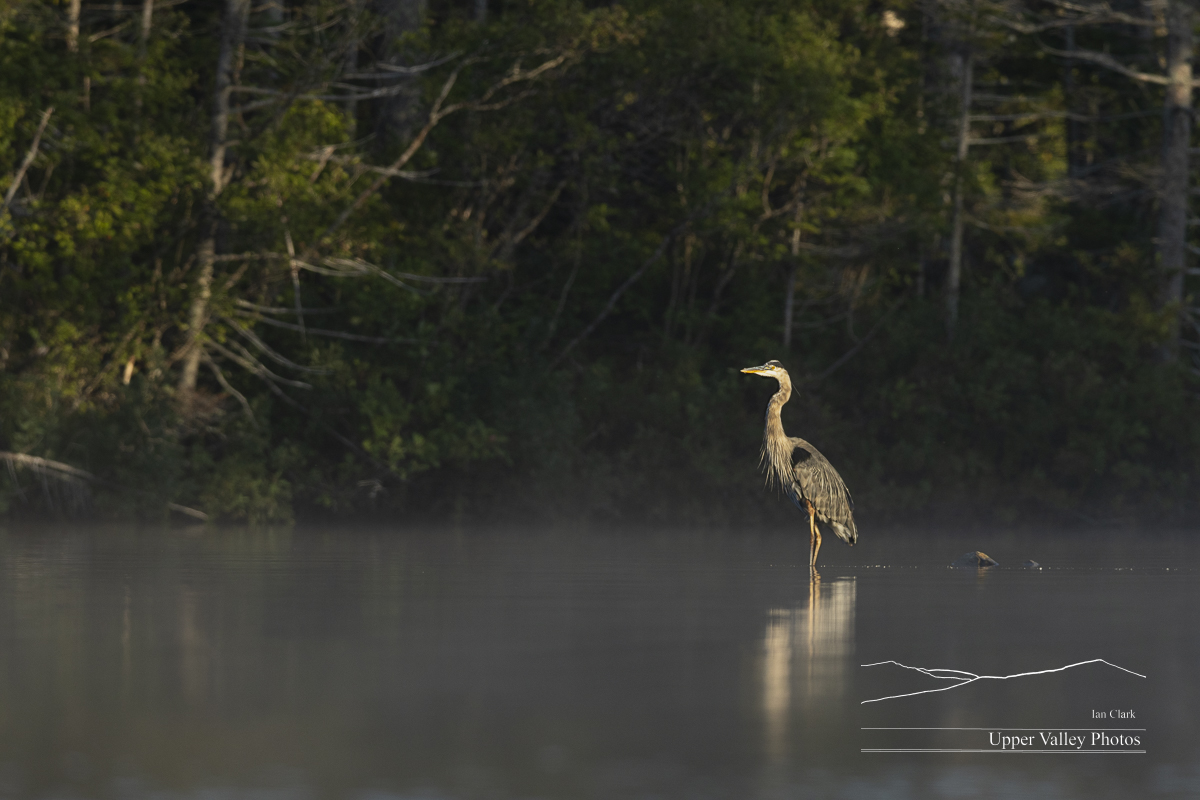
The chicks were keeping mom busy. They’re very demanding, poking and pulling feathers whenever she got near. She didn’t spend much time on the surface, she’d dive quickly when a chick got near. I’m convinced this is why the parents leave the pond before the chicks – they just want some peace.
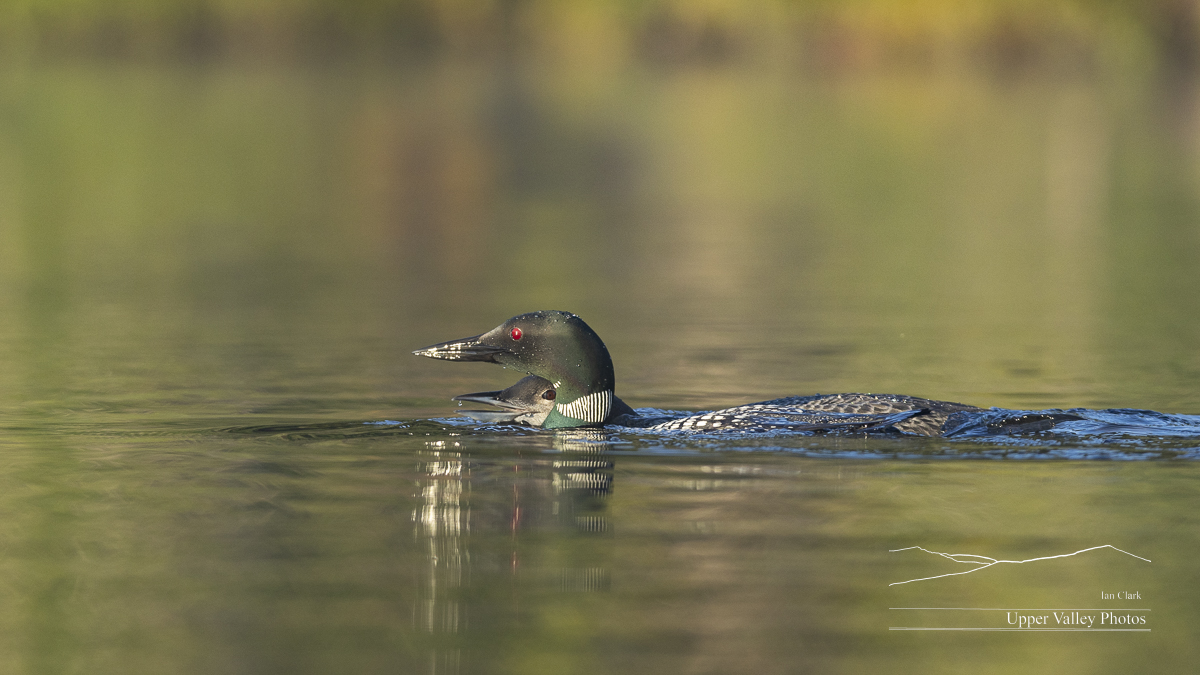
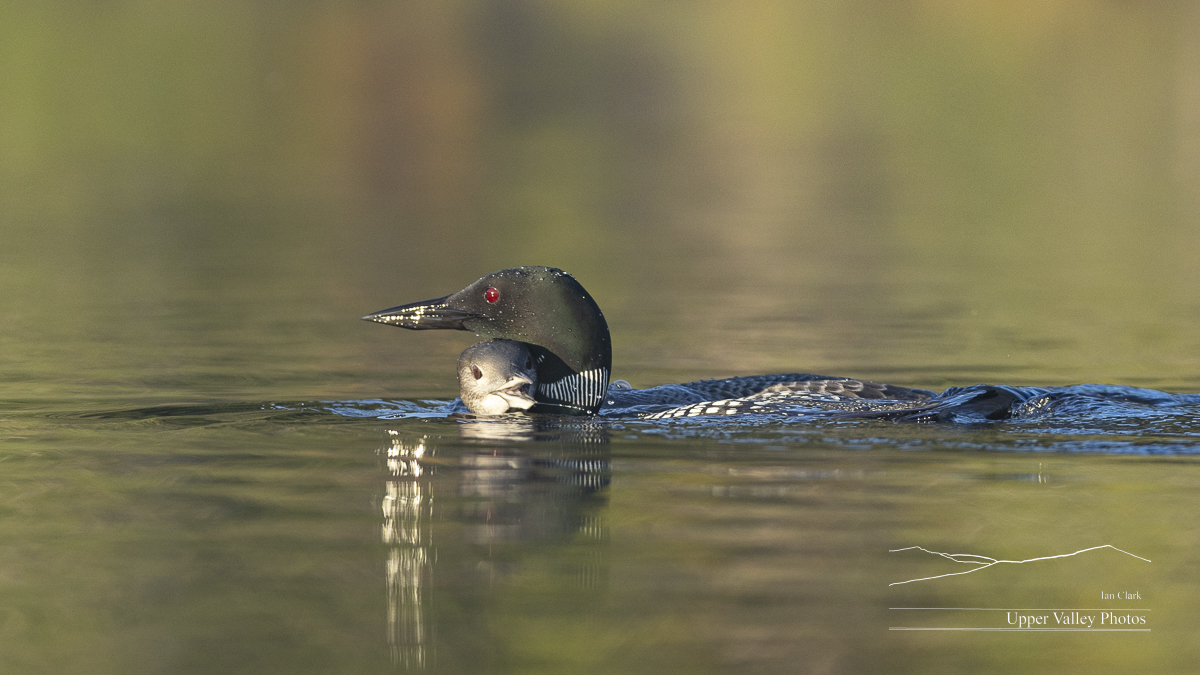

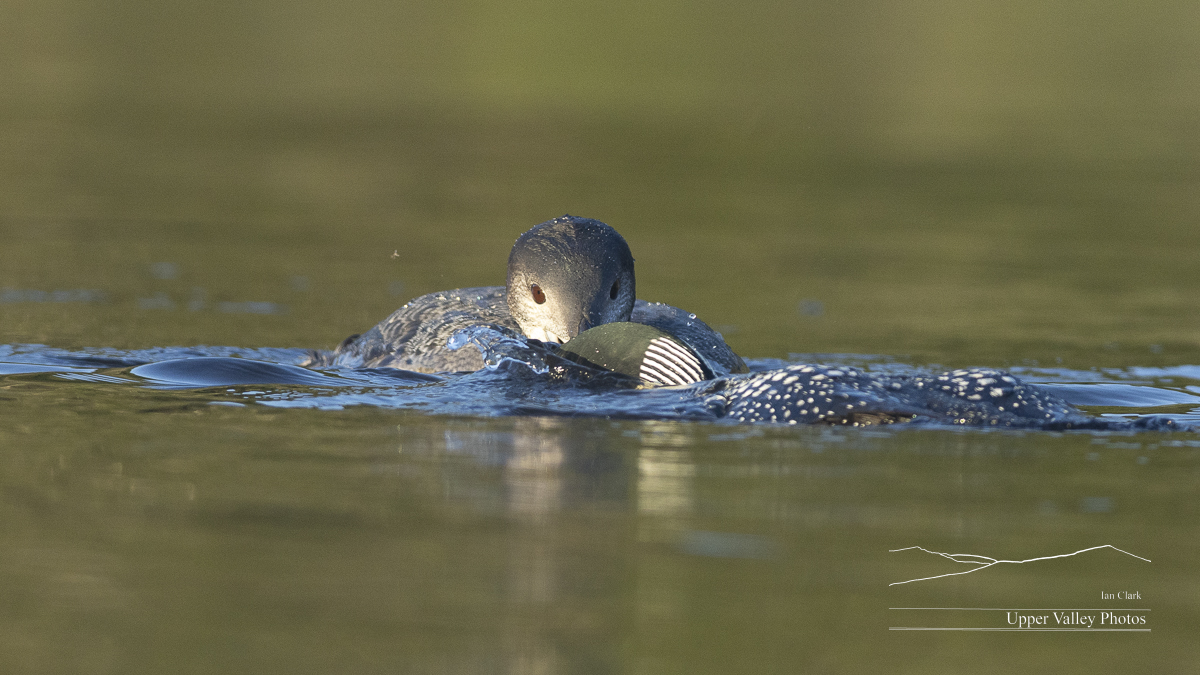

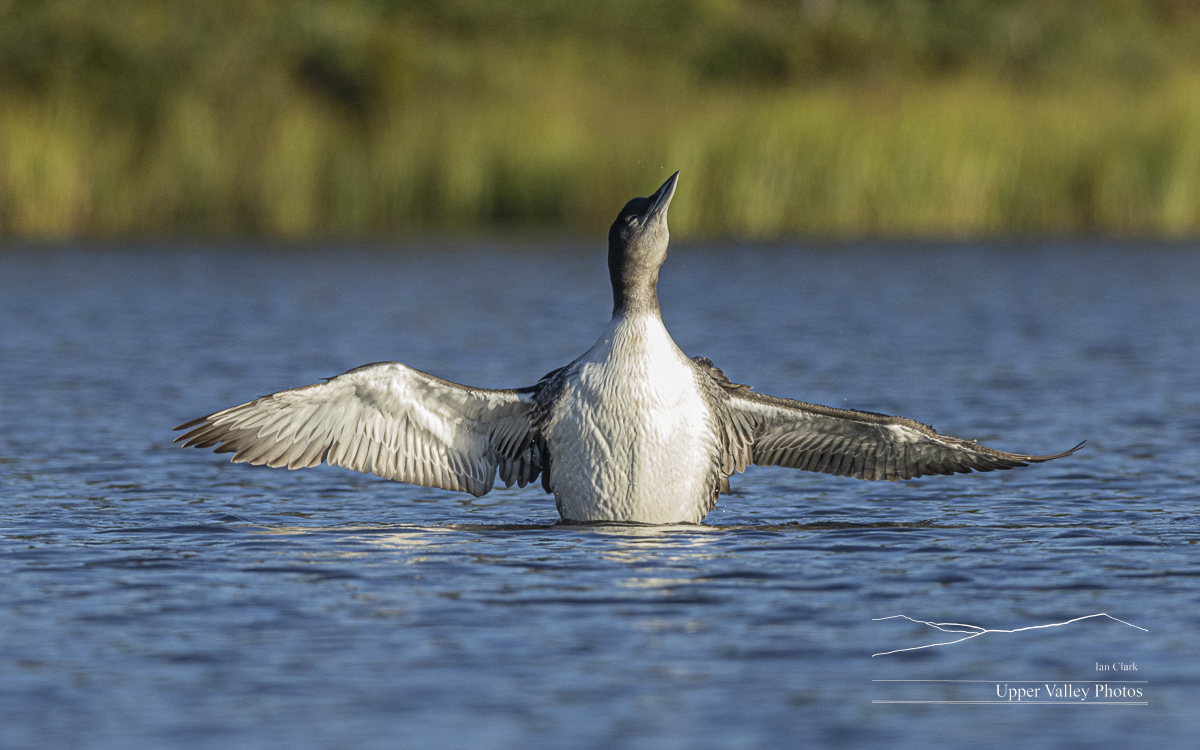
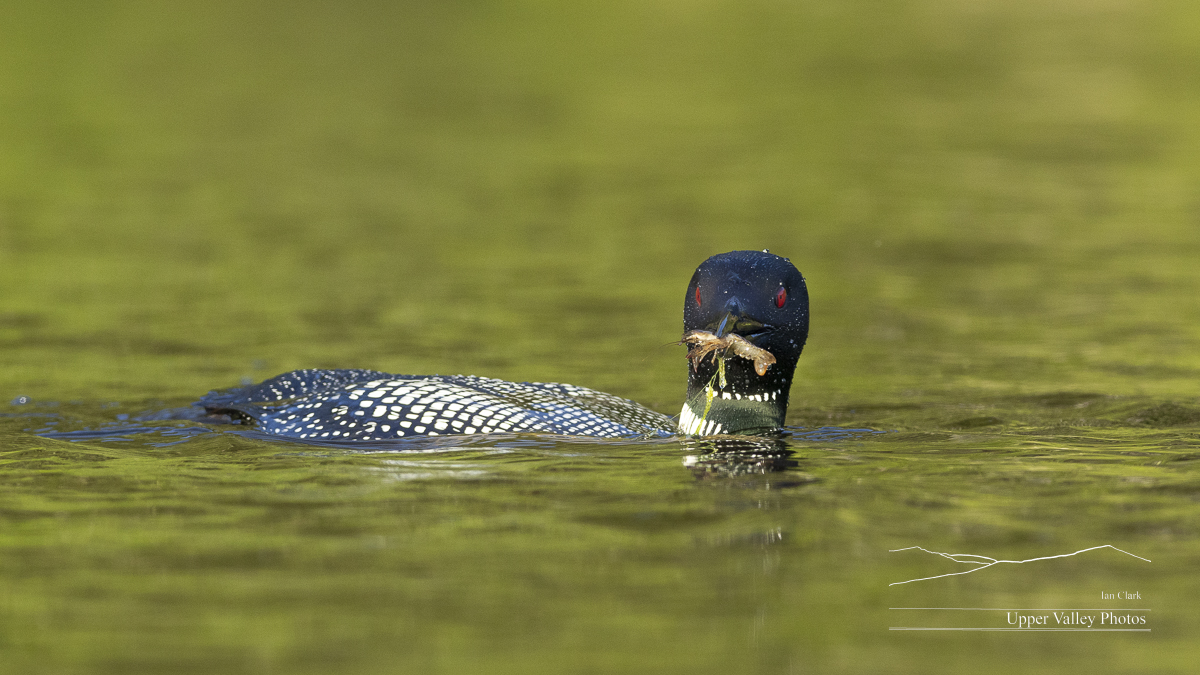


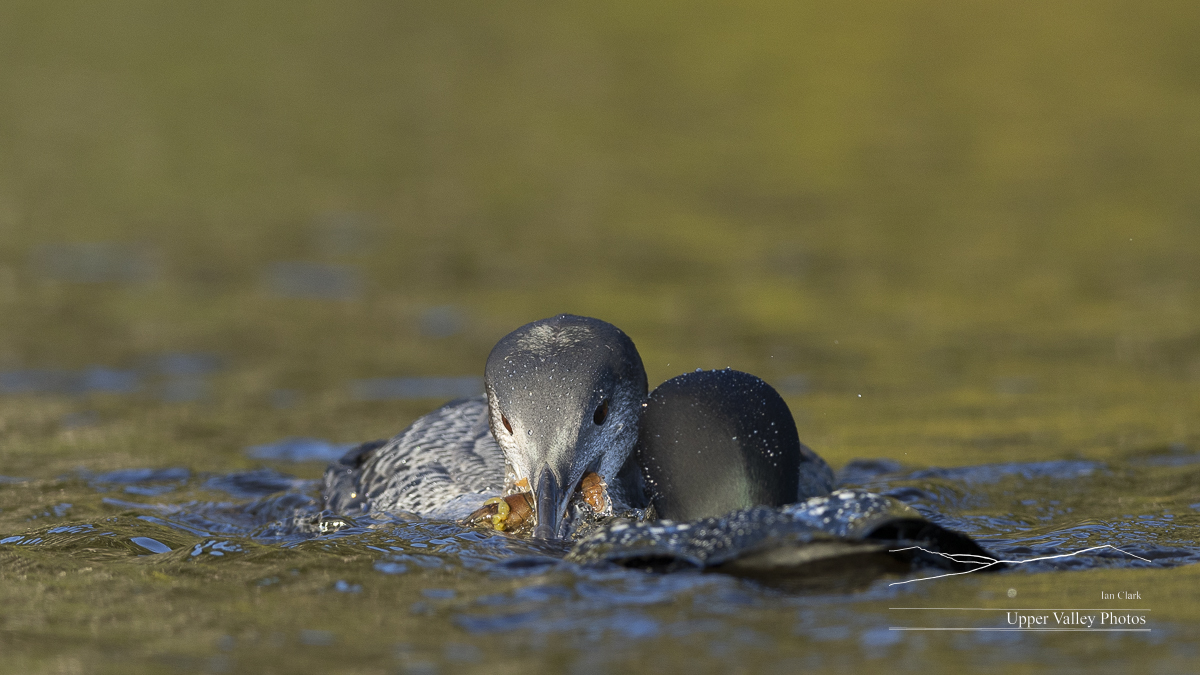
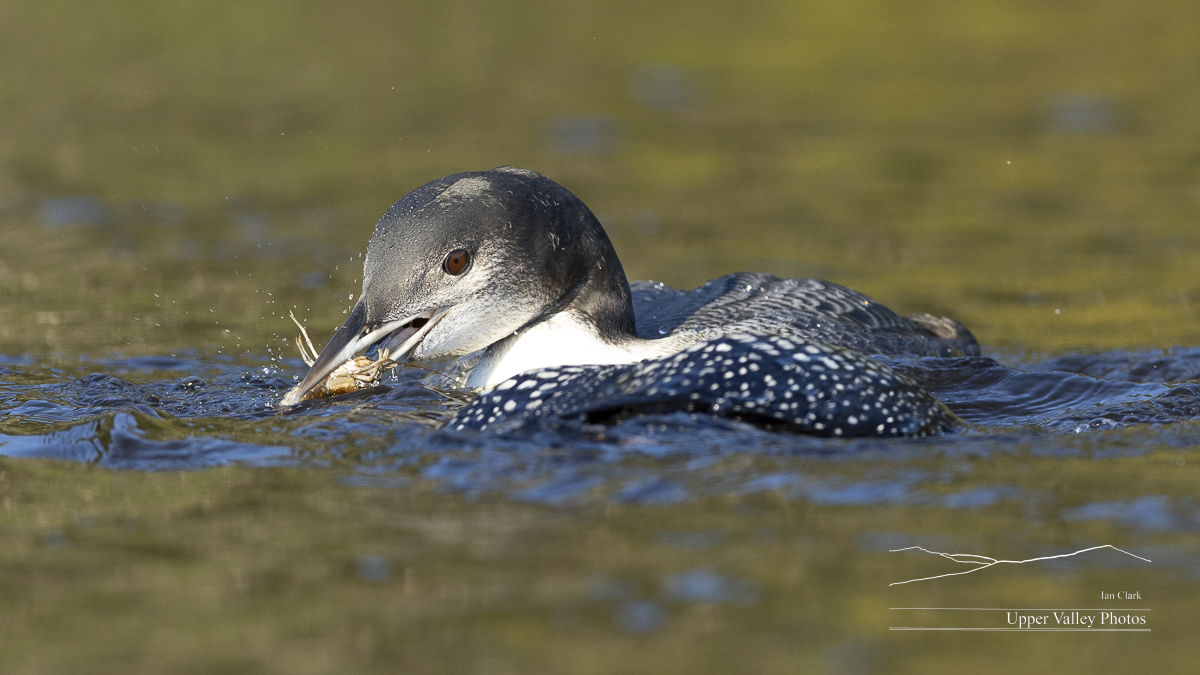

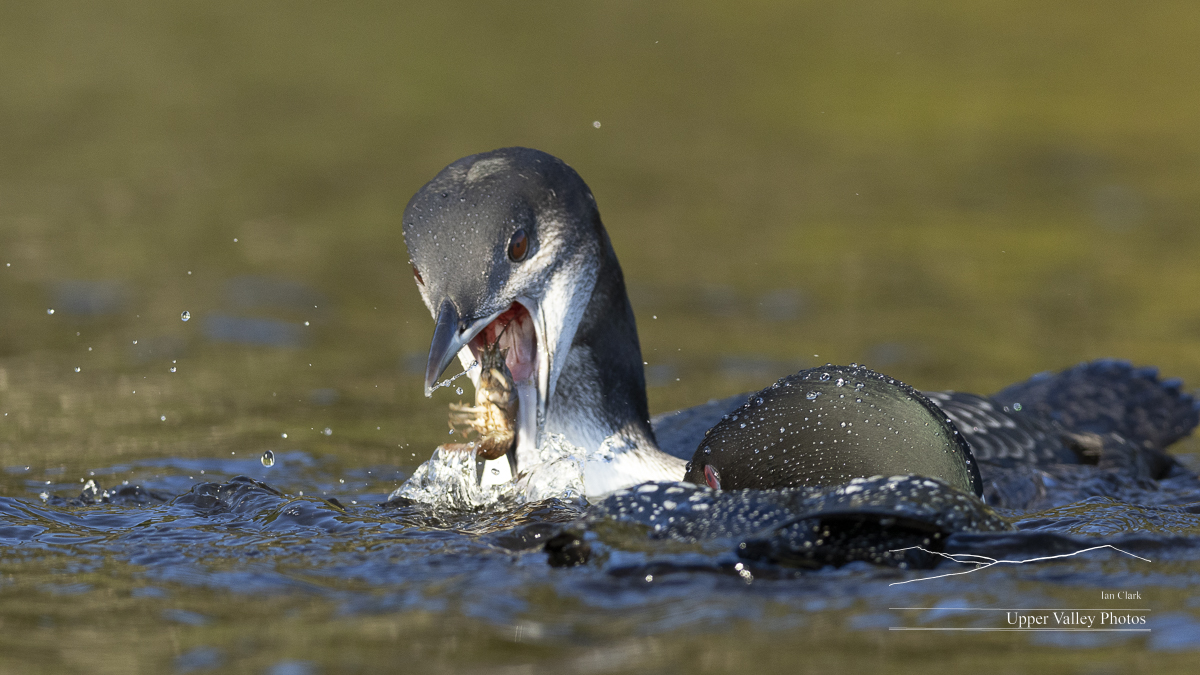

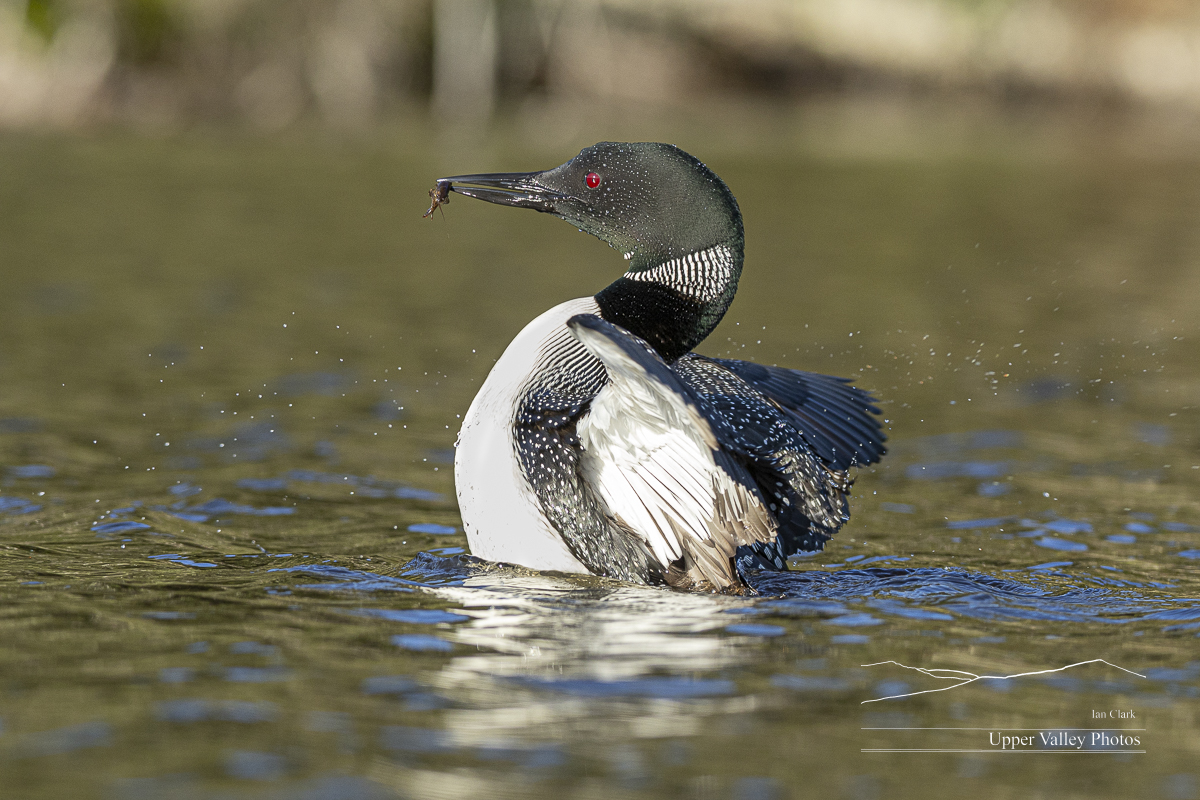


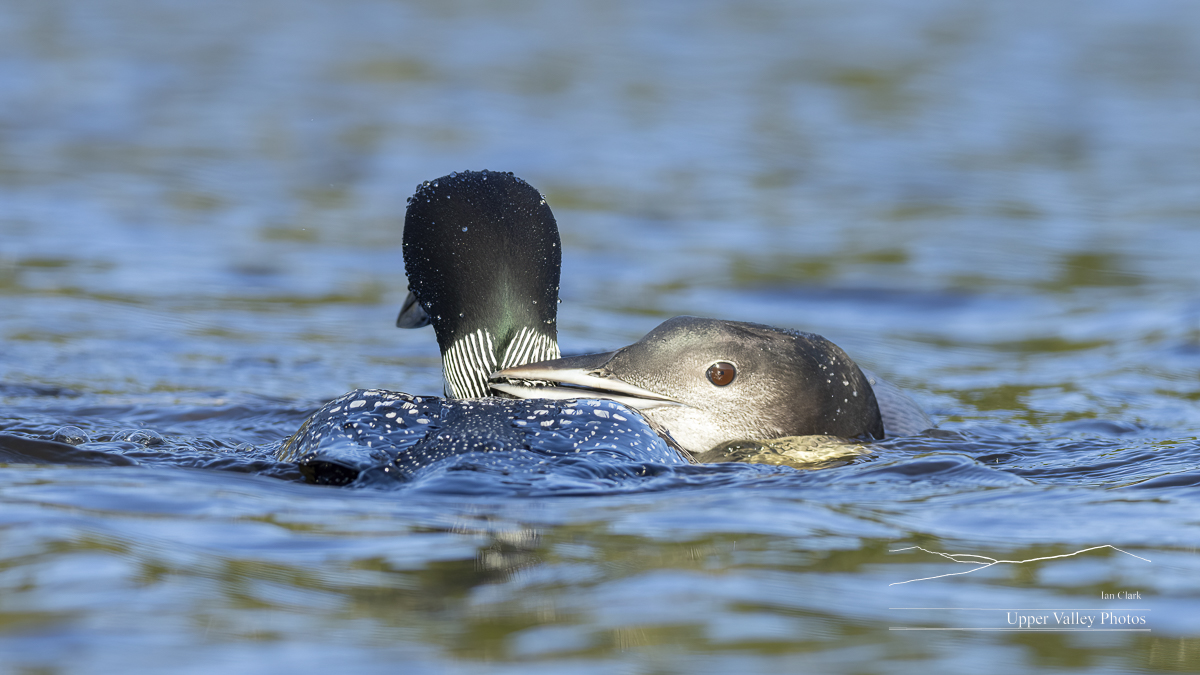
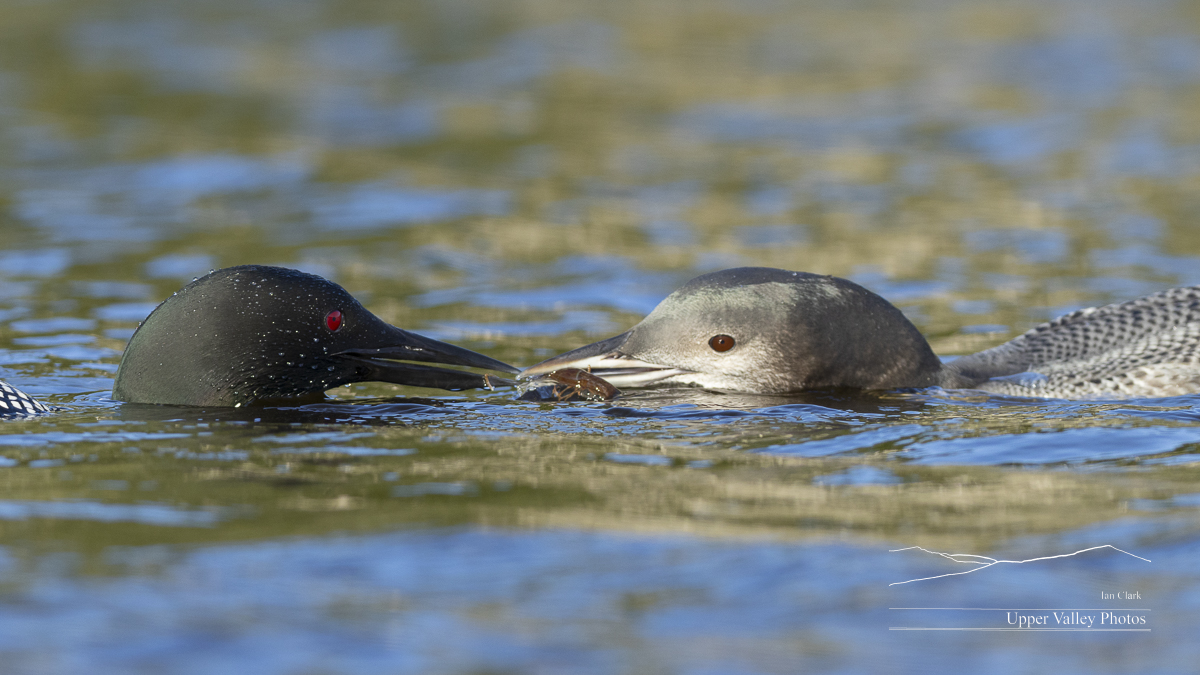
Heading back to the boat launch, I pass dad who is lazily paddling along, seemingly enjoying the peace and quiet on this end of the pond.
I was surprised the fog hadn’t shown up on the pond, there’s usually a period where the pond gets foggy as the fog lifts from the valley. Driving back towards home, I discovered why – the fog was still sitting heavy on the river.
Back at the house, the goldfinches have discovered the thistle I left for them.
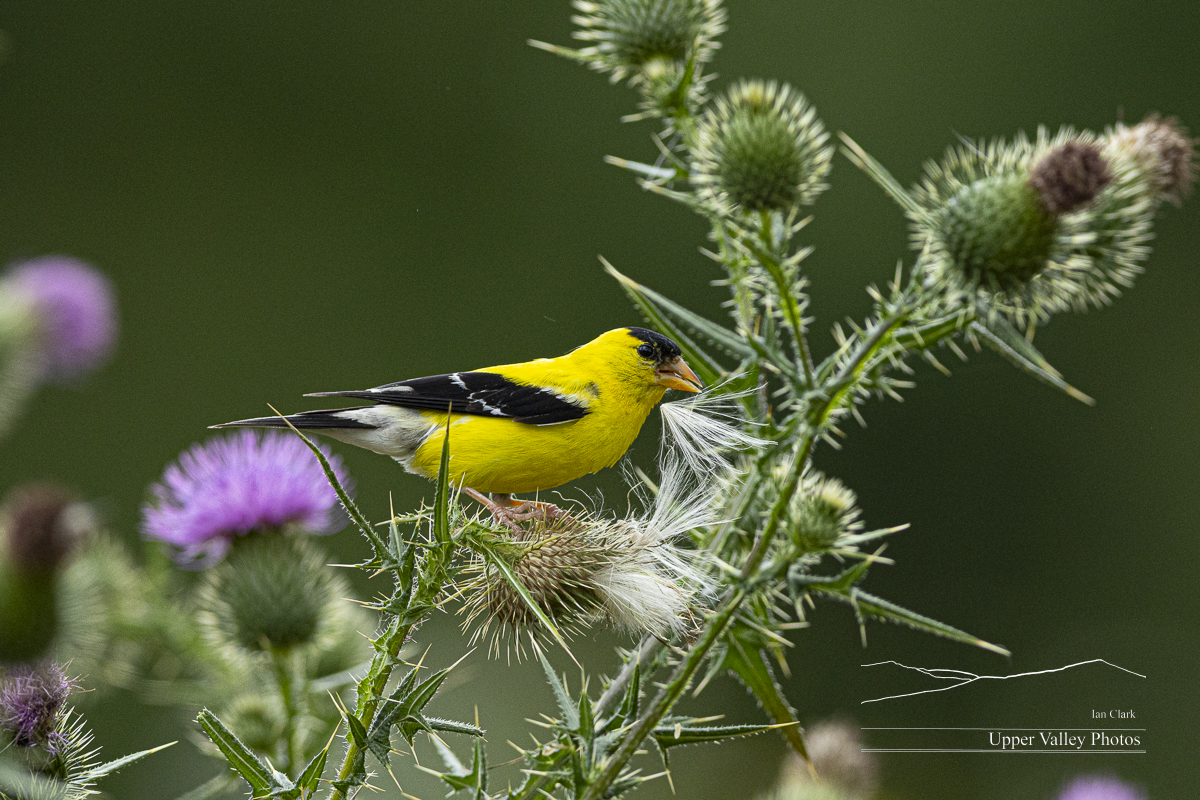
Loon Chicks Now Nine Weeks Old
Thanks to everyone who stopped by to say hello at the League of NH Craftsmen Fair. Nice to know there are actually people out there looking at my blog. My next show will be the Fall Crafts at Lyndhurst in Tarrytown, NY September 8, 9 & 10.
The weather and my travels have kept me from checking in on the loons since July 24 when I found the Eastons fighting with a pair of intruders challenging them for the pond. Sunday morning dawned without rain and only a light breeze. I headed back to check on the Eastons.

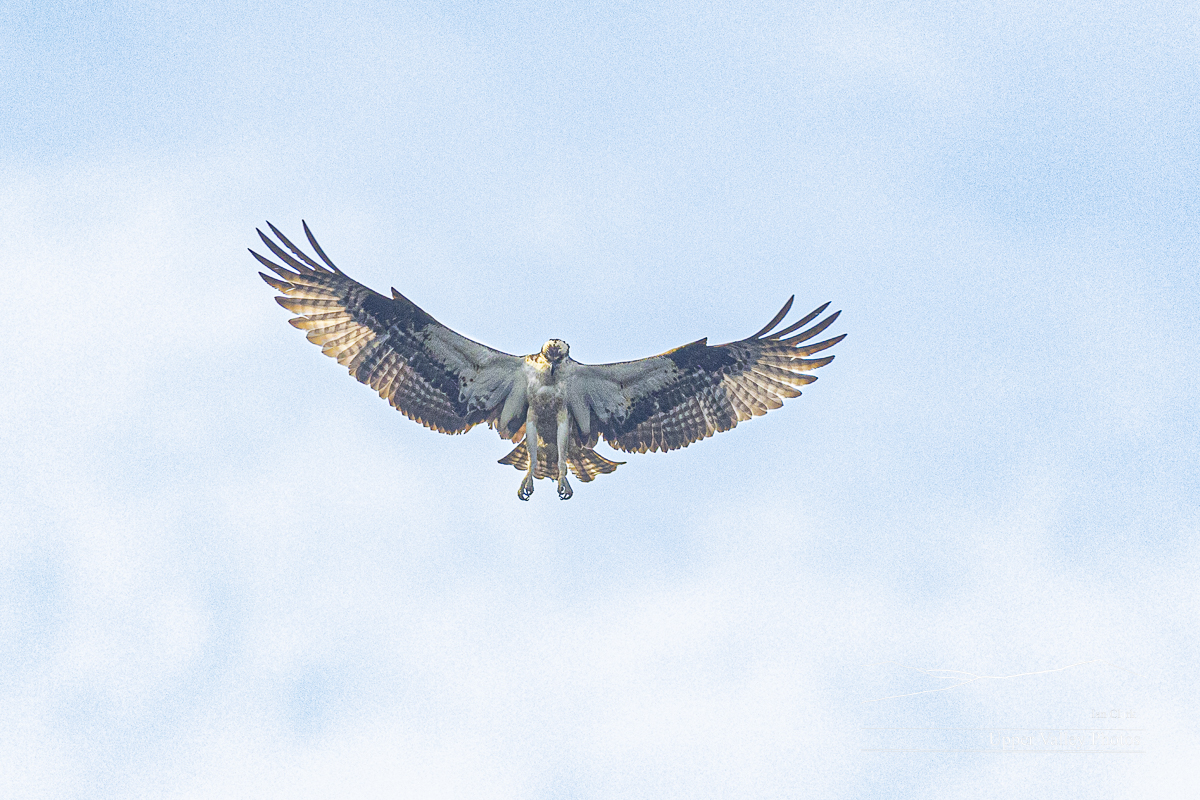
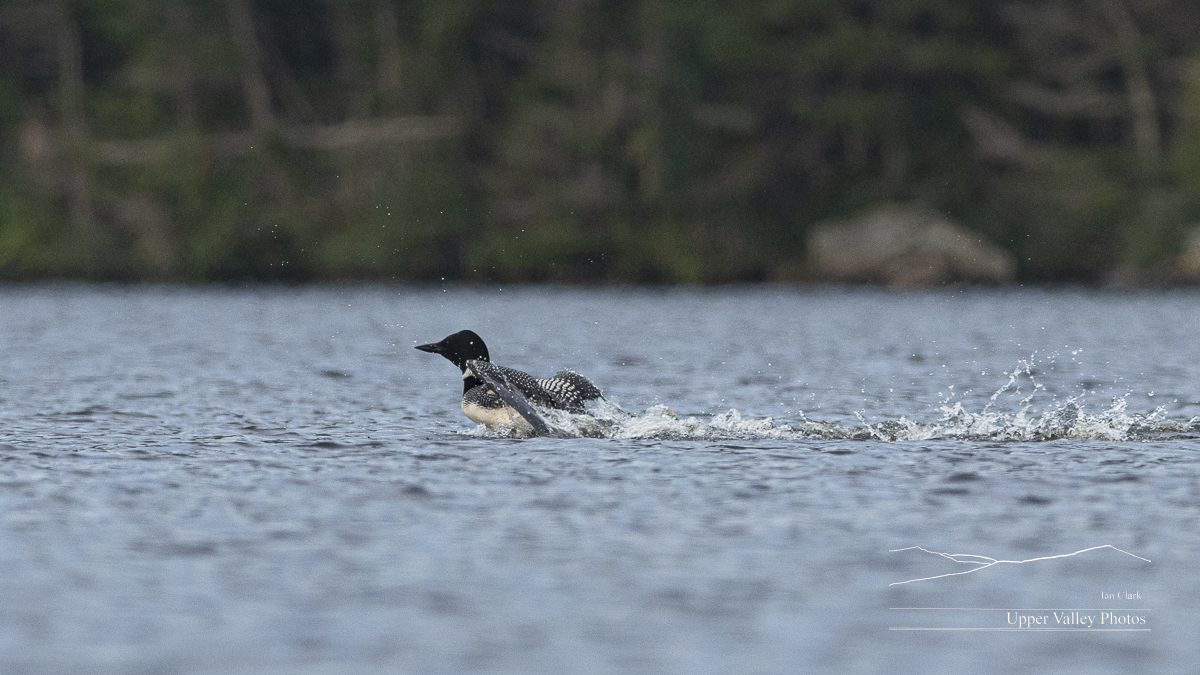
Sometime later, they headed back north and rounded a corner out of sight. A loon flying south appeared and circled to gain height to clear the hills as it departed. Mom took off and followed a few moments later.
Dad gathered the chicks and headed back south, foraging along the way. One chick was almost exclusively feeding itself while the second was putting dad to work.
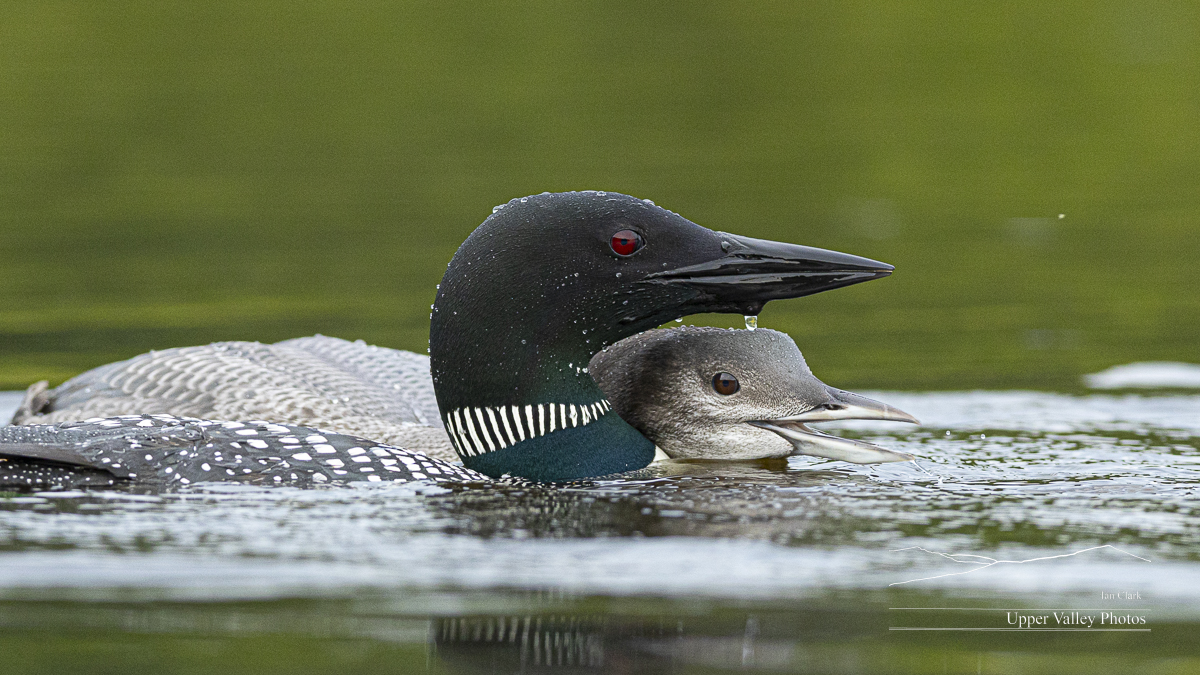
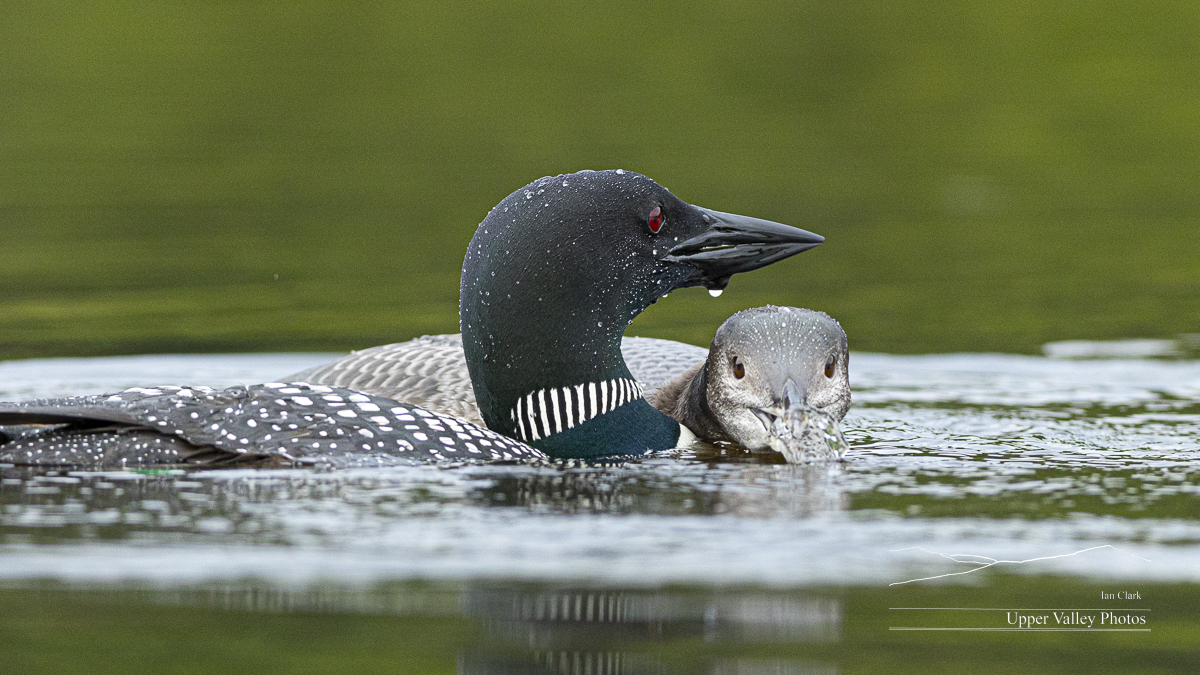

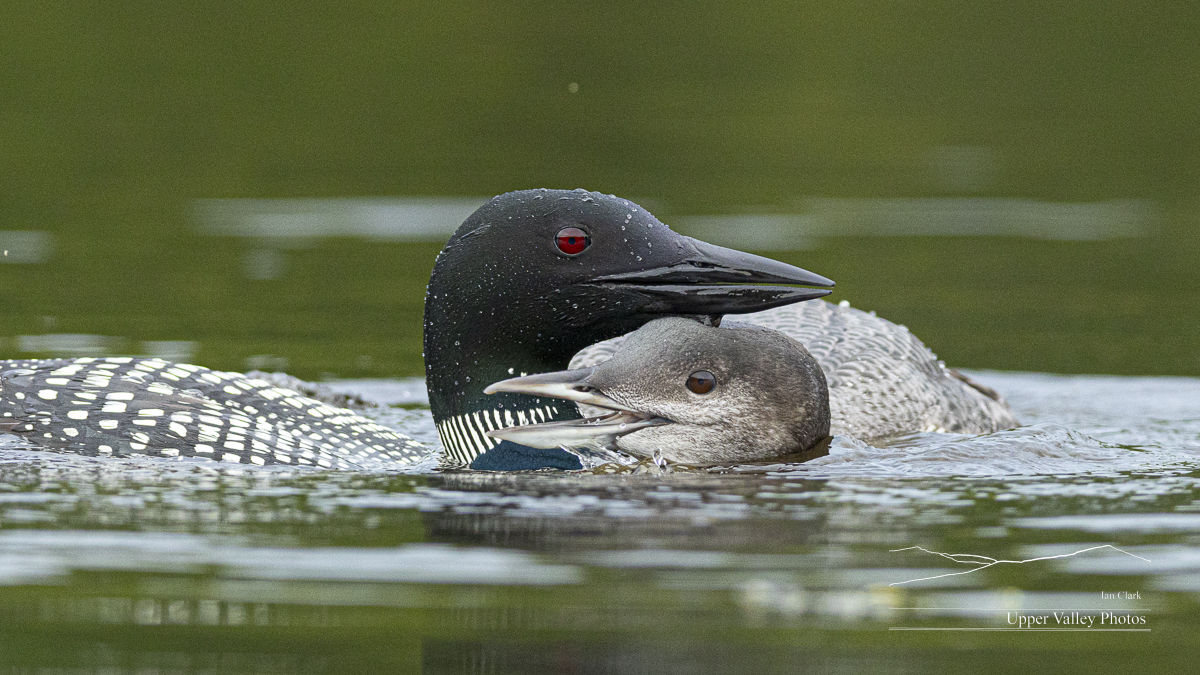
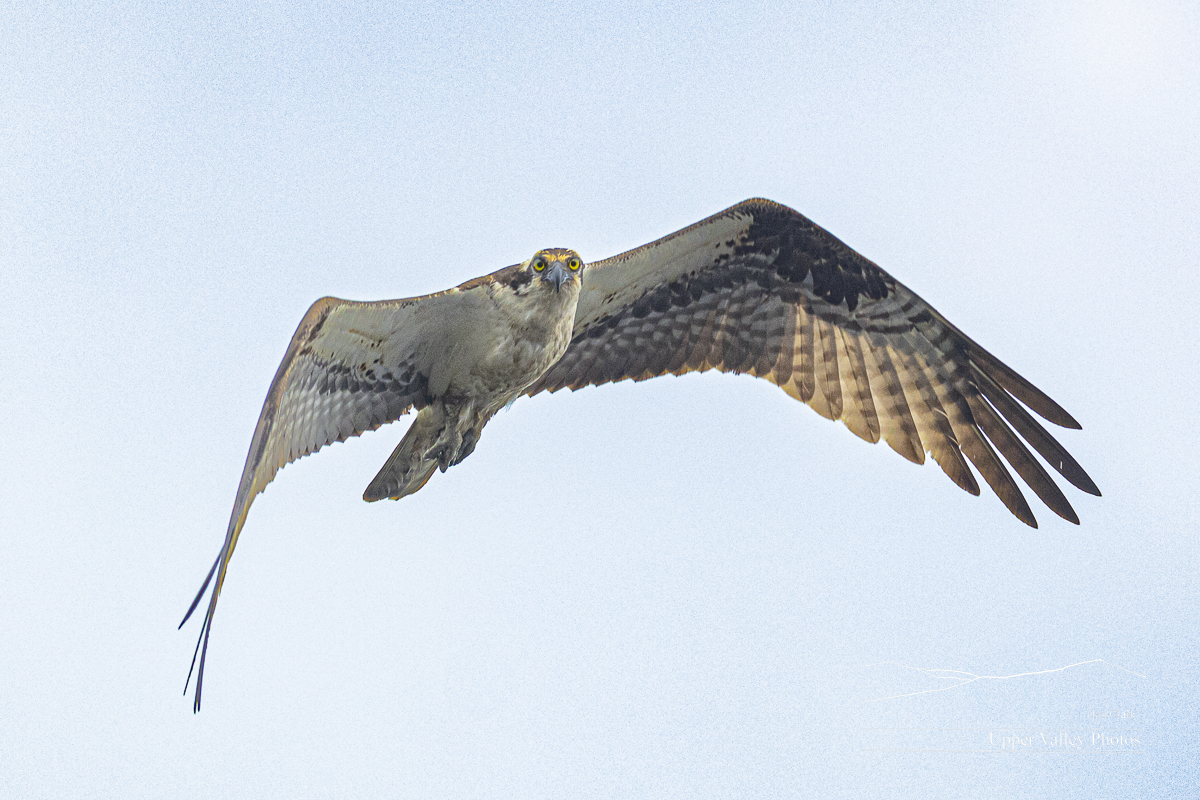

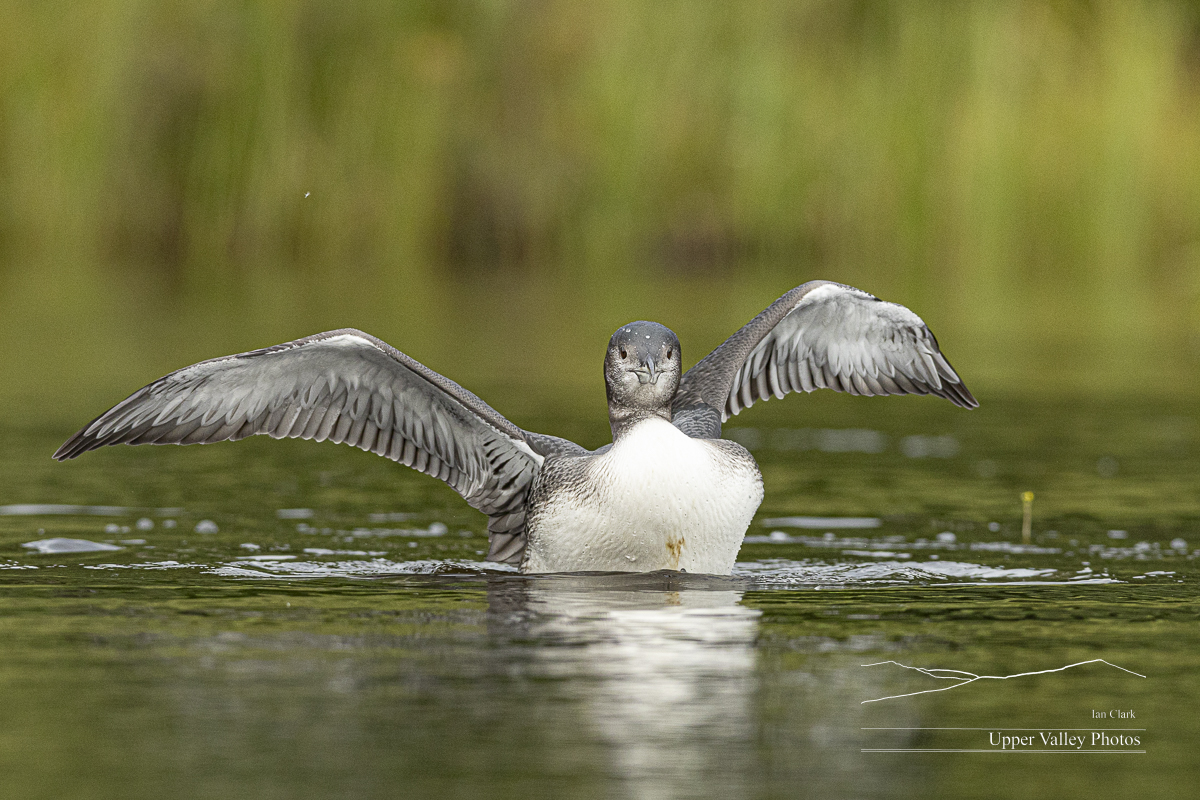
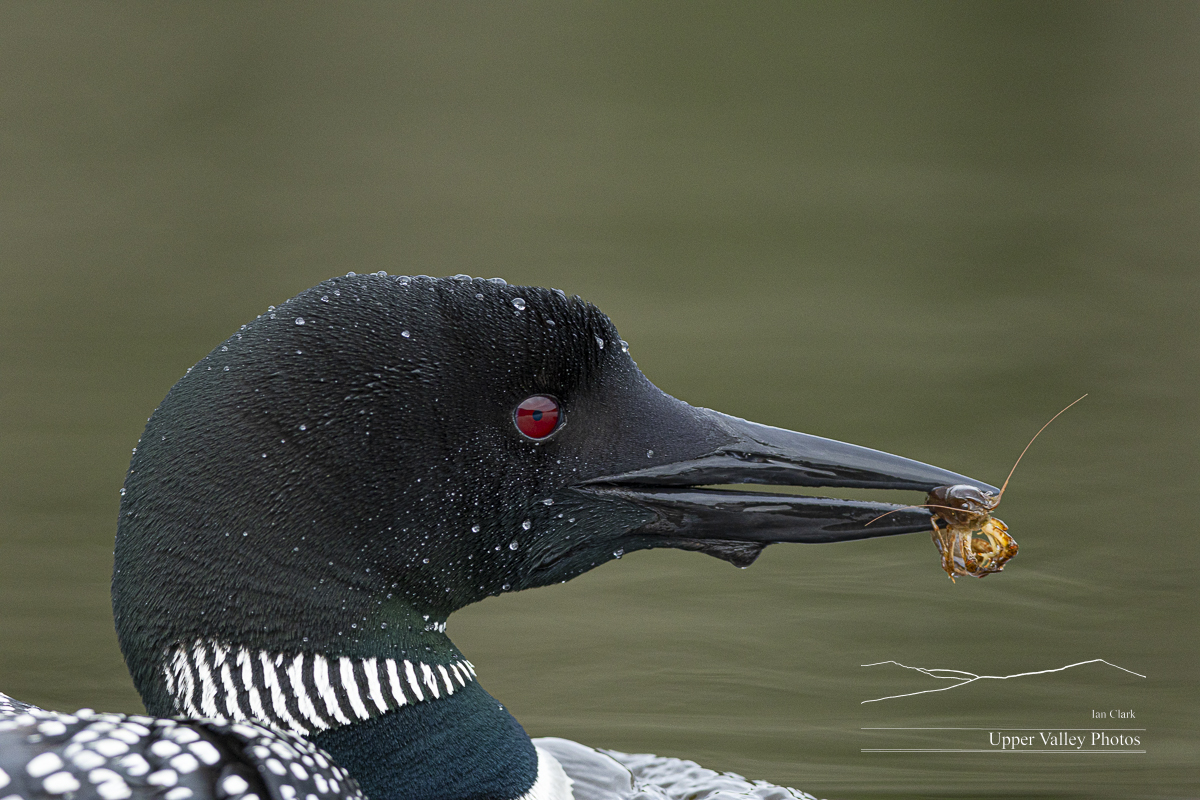
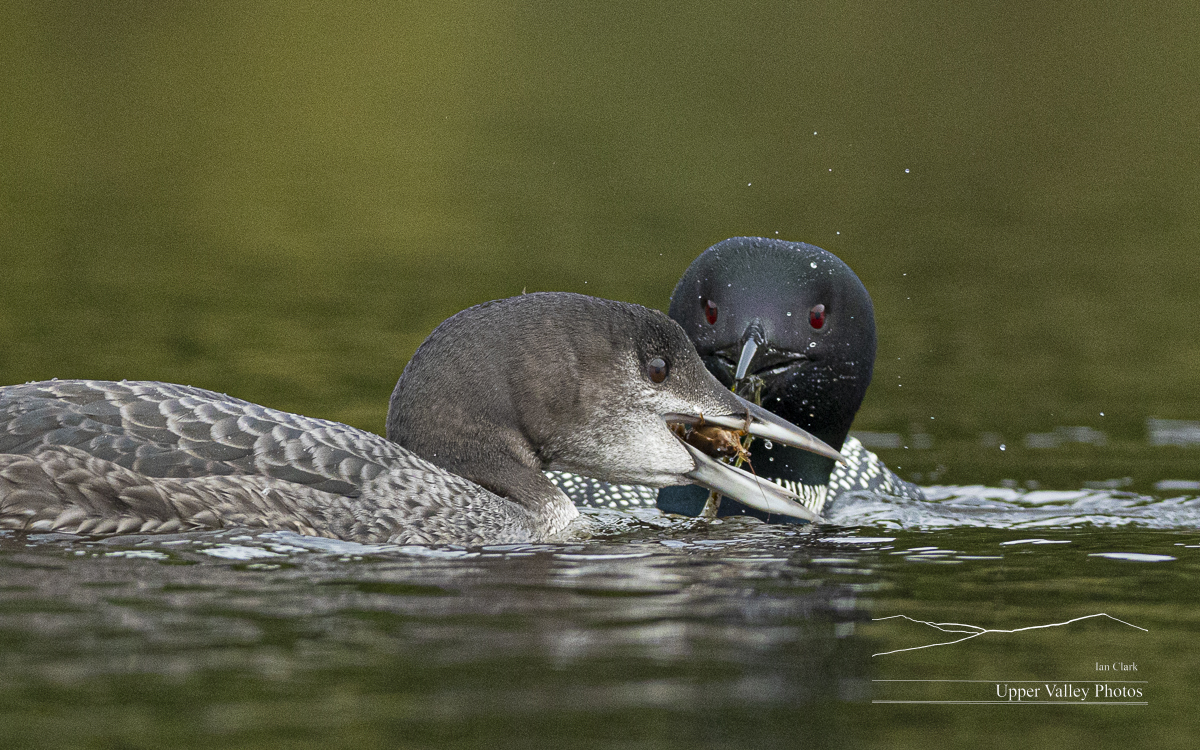

Our osprey made another dive that missed and circled a few times before heading off to the north.
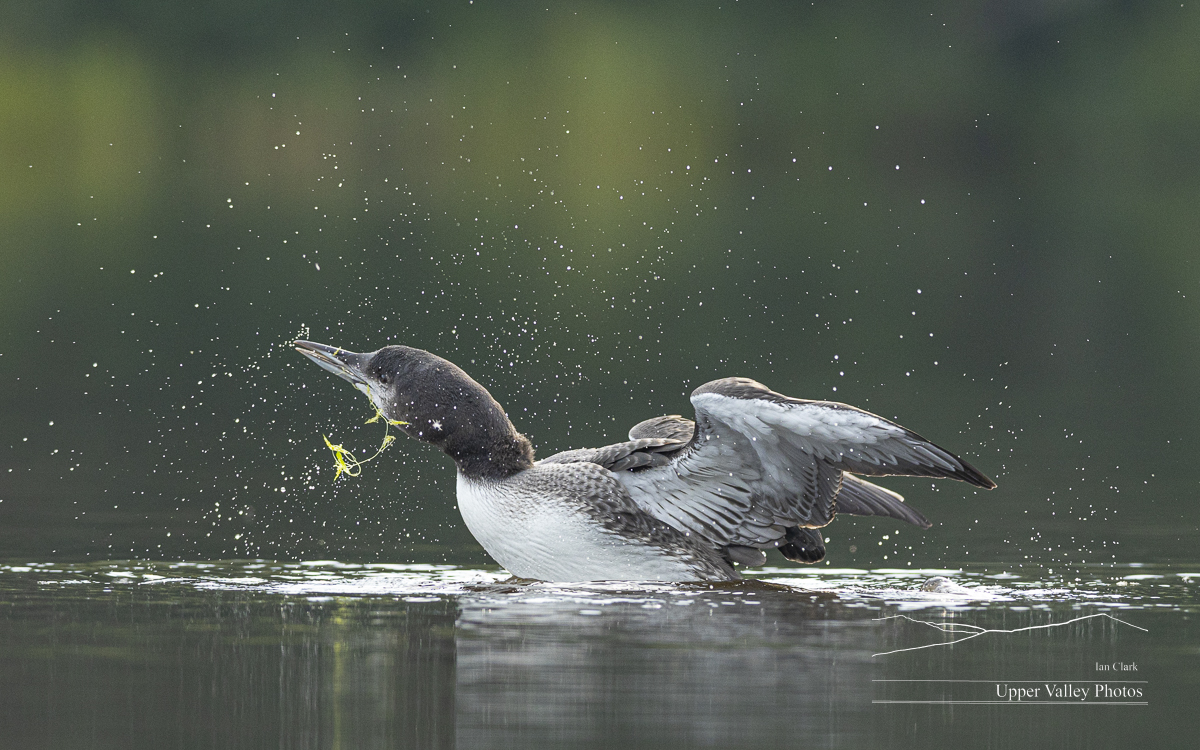
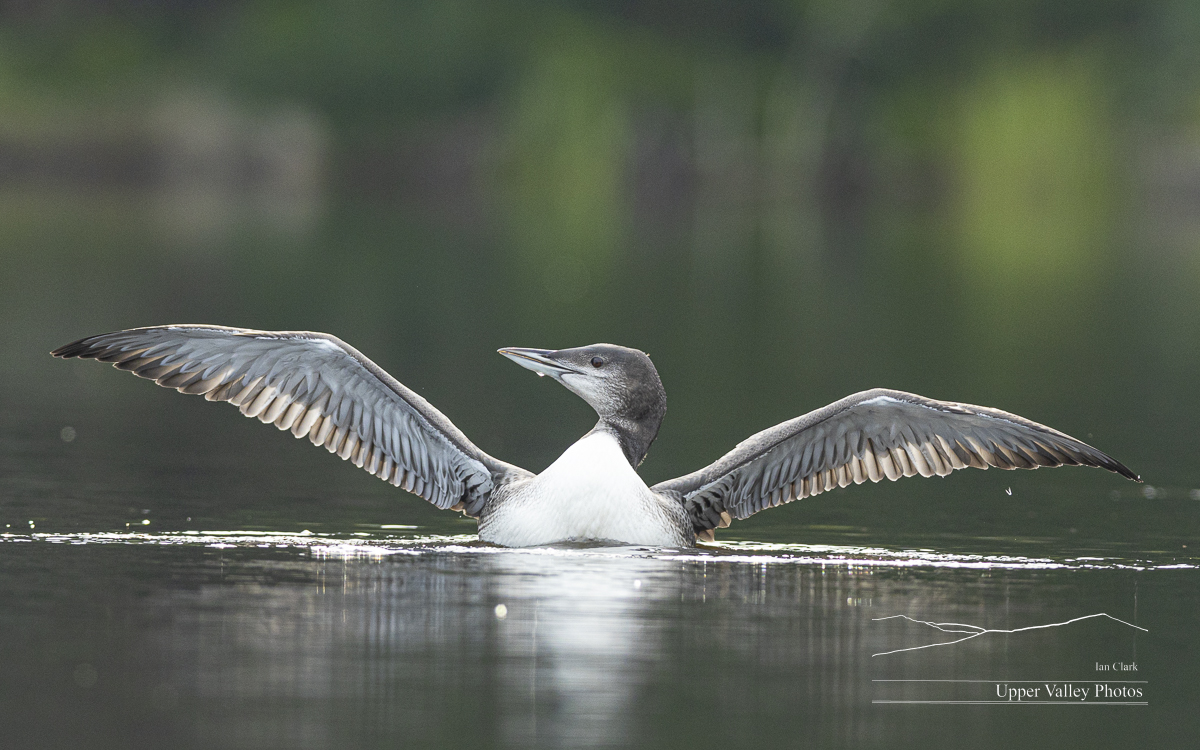

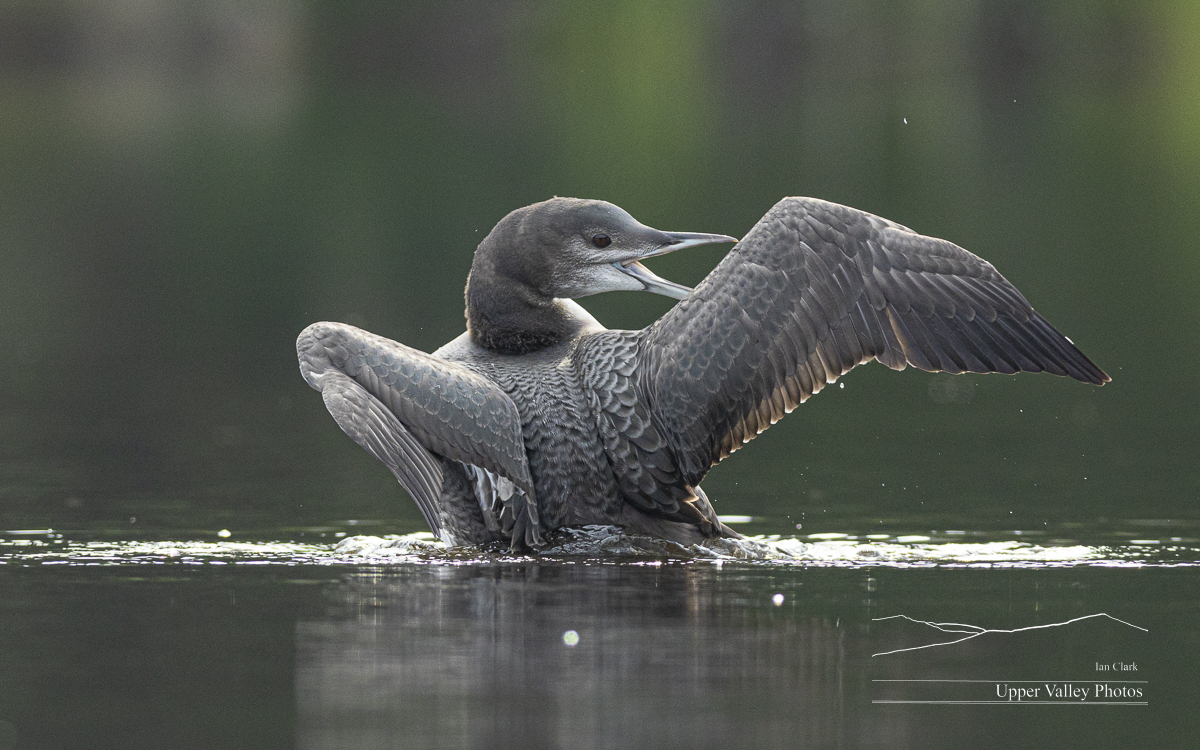
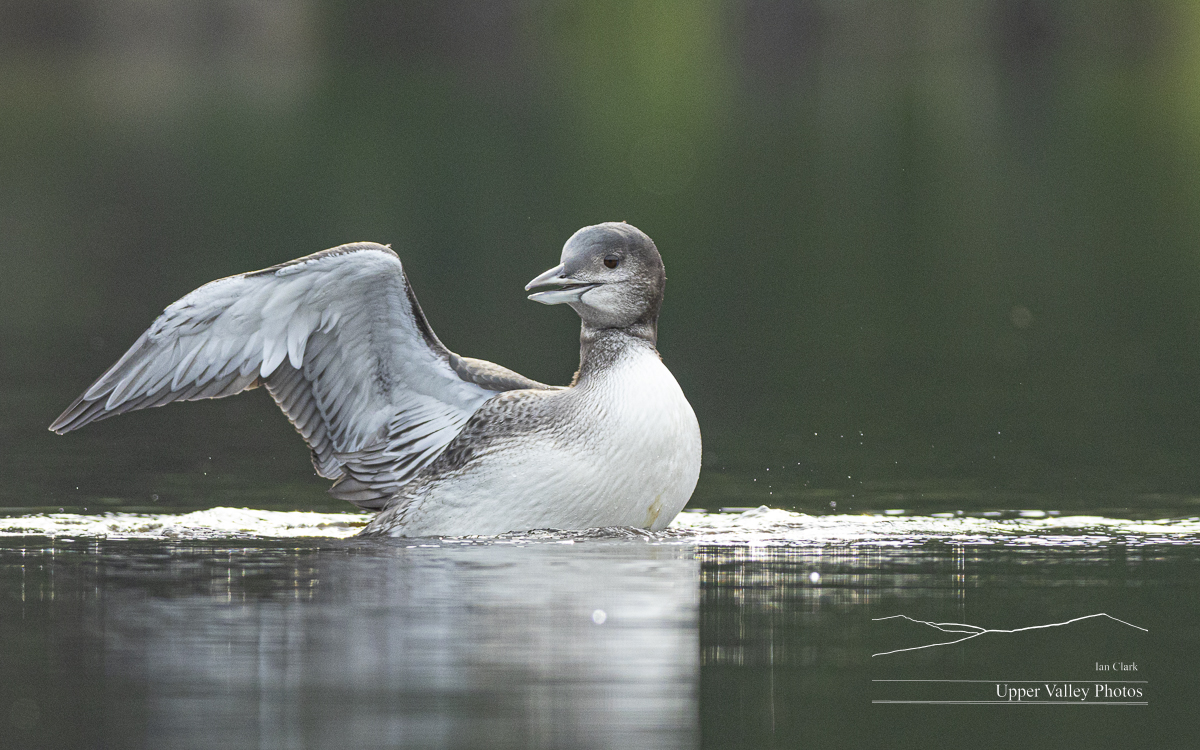

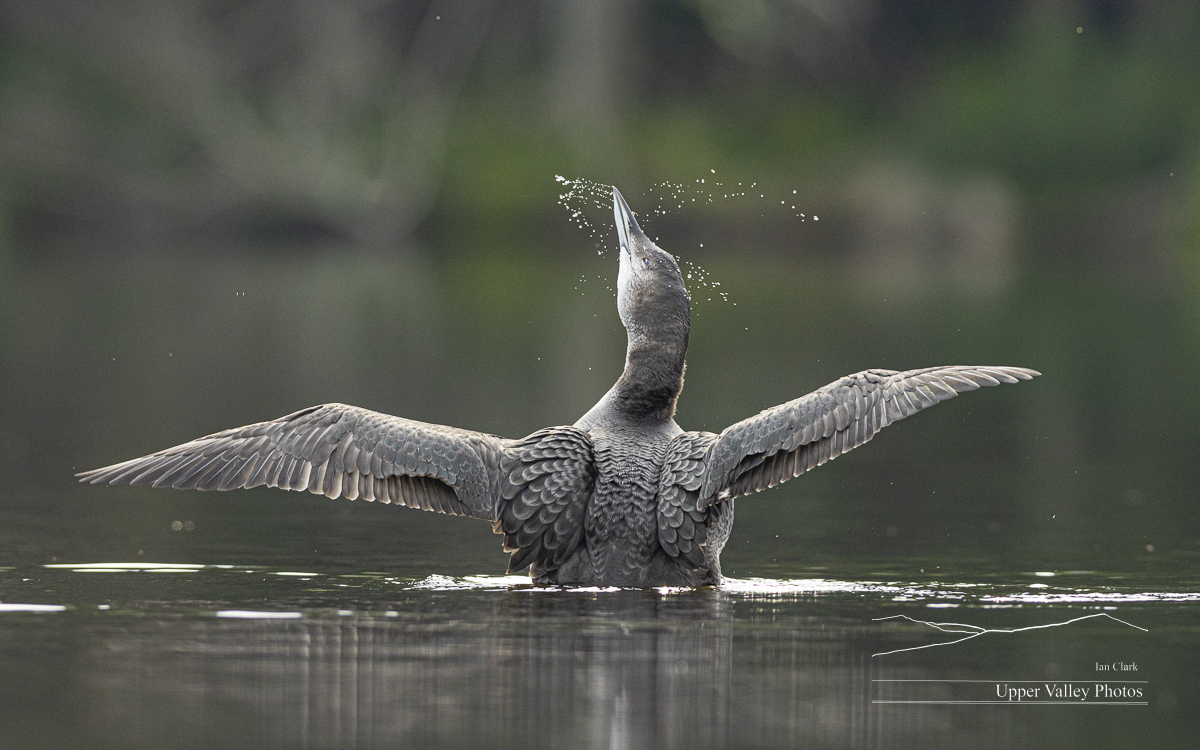
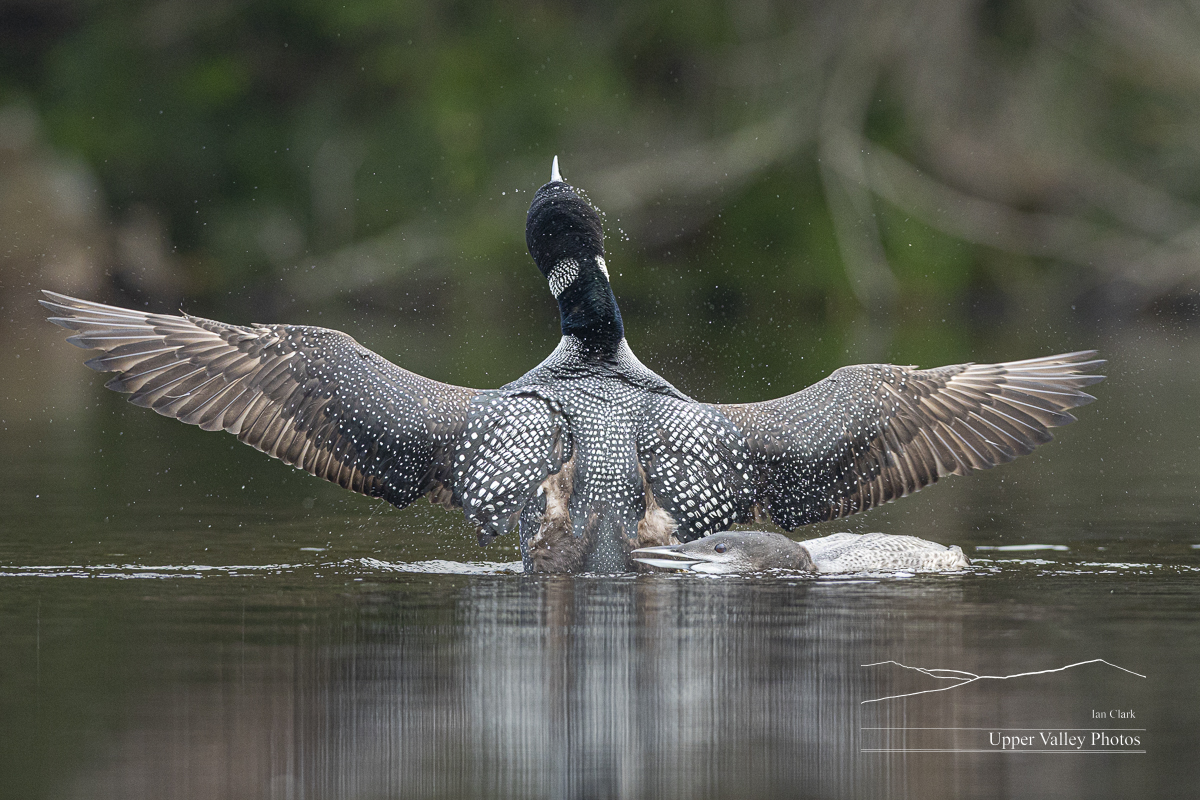


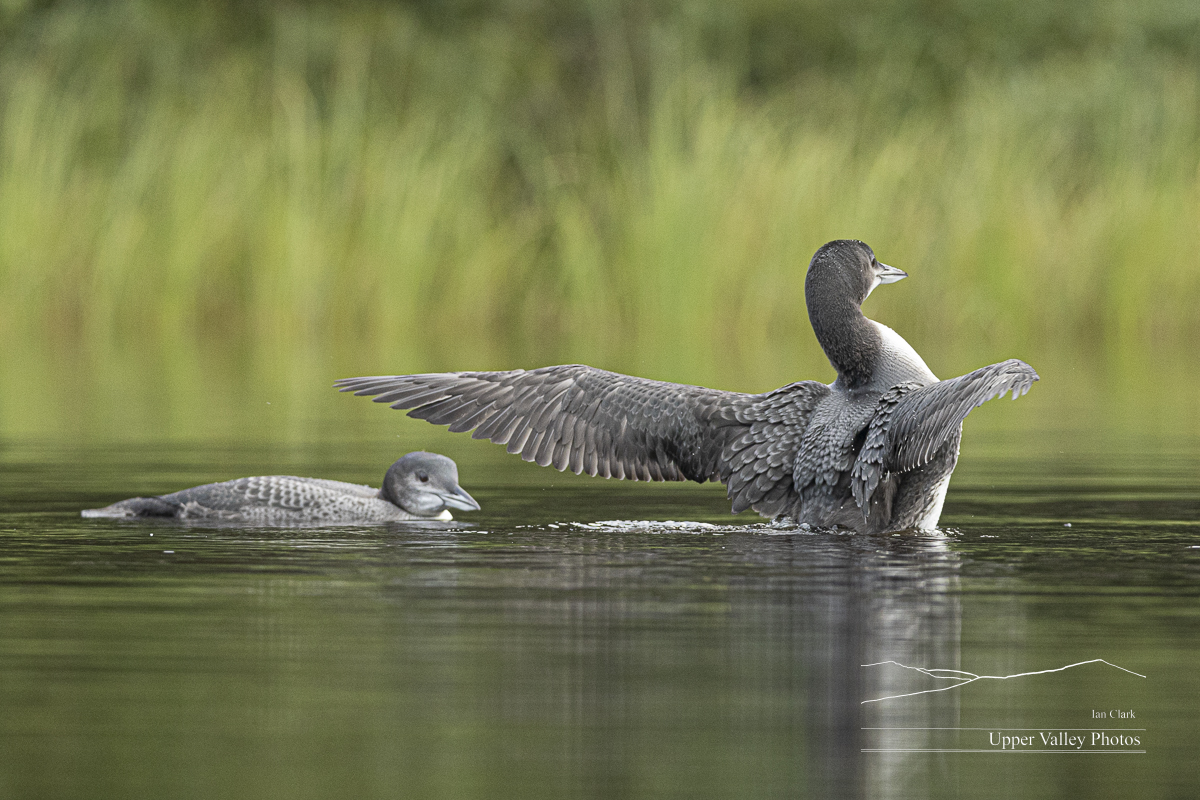
It was time for me to head out and I started paddling towards the boat launch.
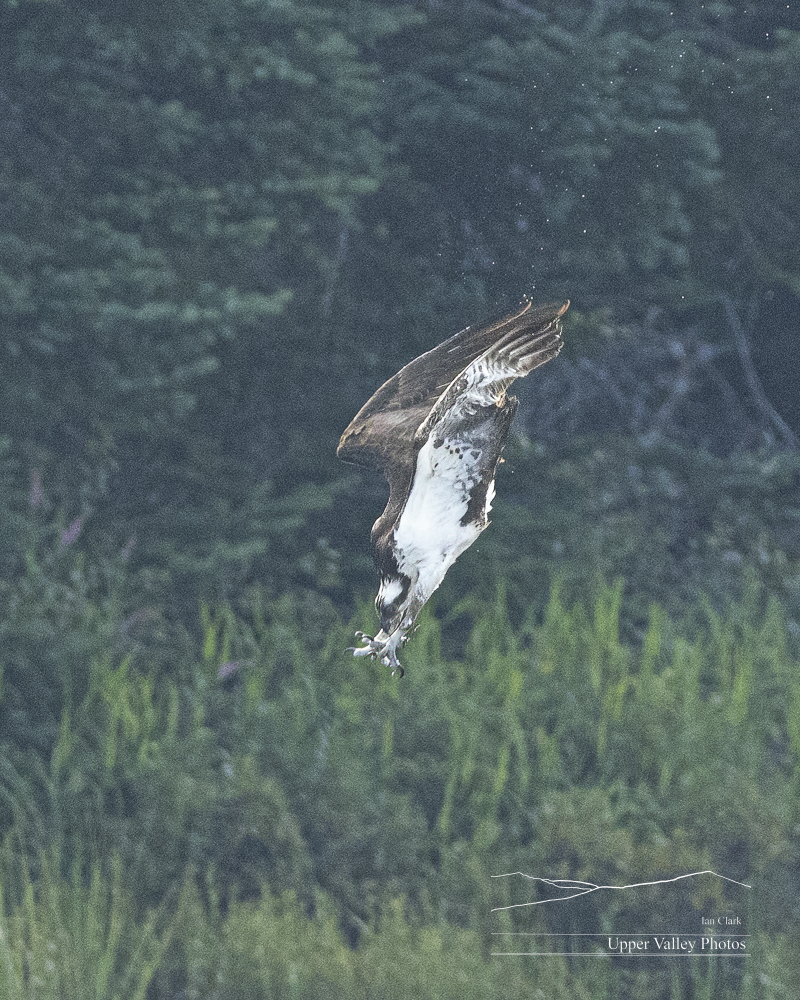

A friend on the Middleton’s pond tells me they’ve had intruders regularly over the past few weeks. I’m watching the weather and will get out to check on them and the Westons as soon as I can.
